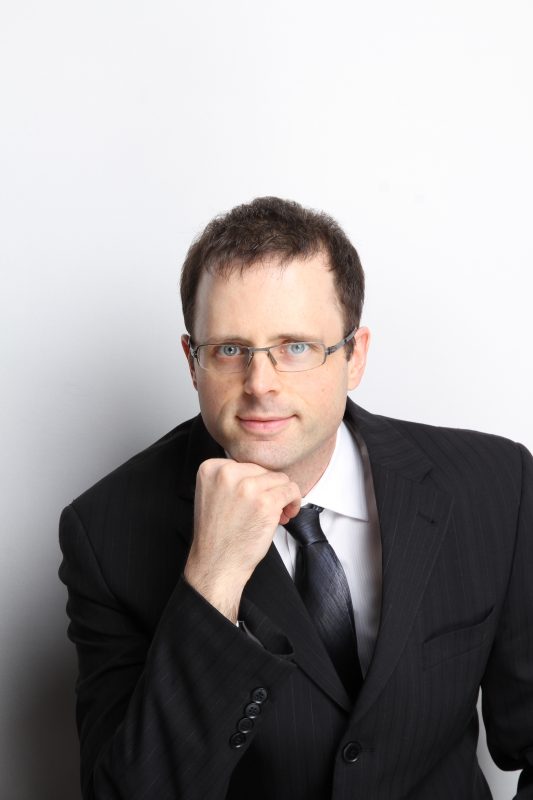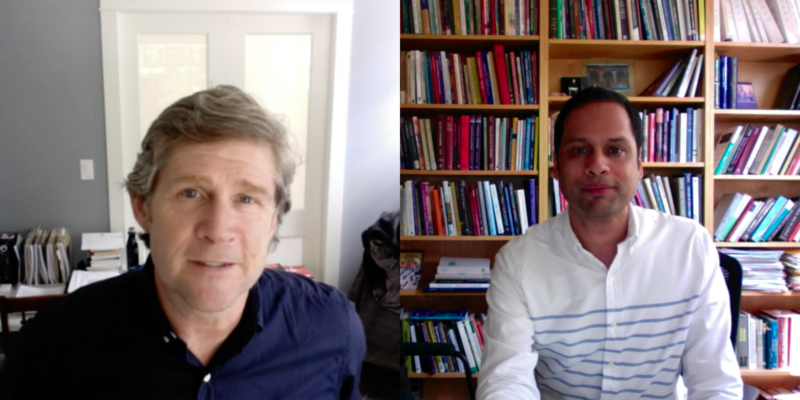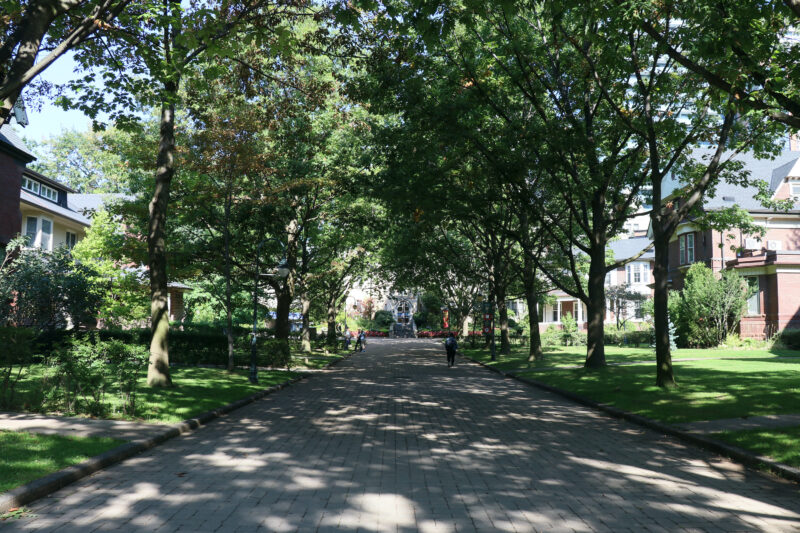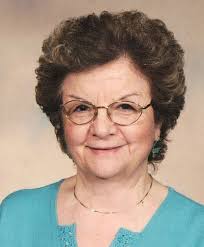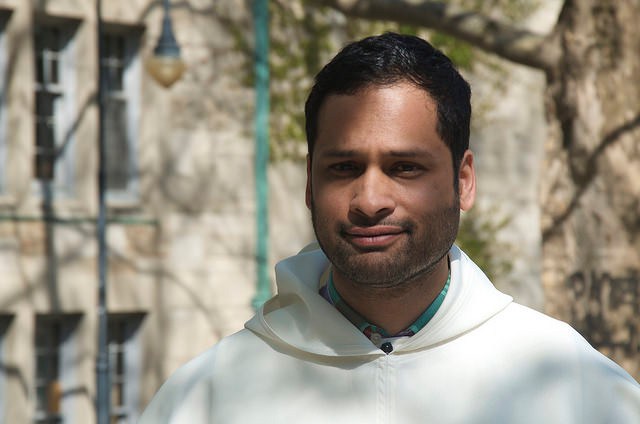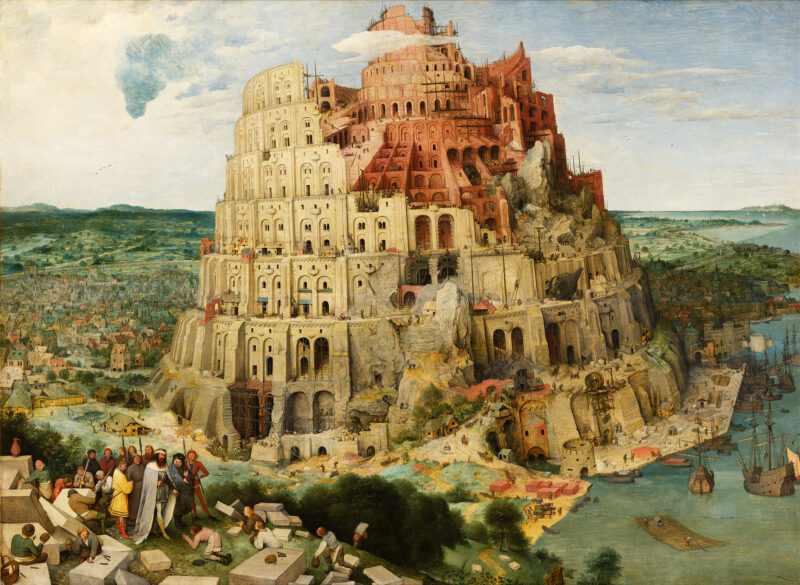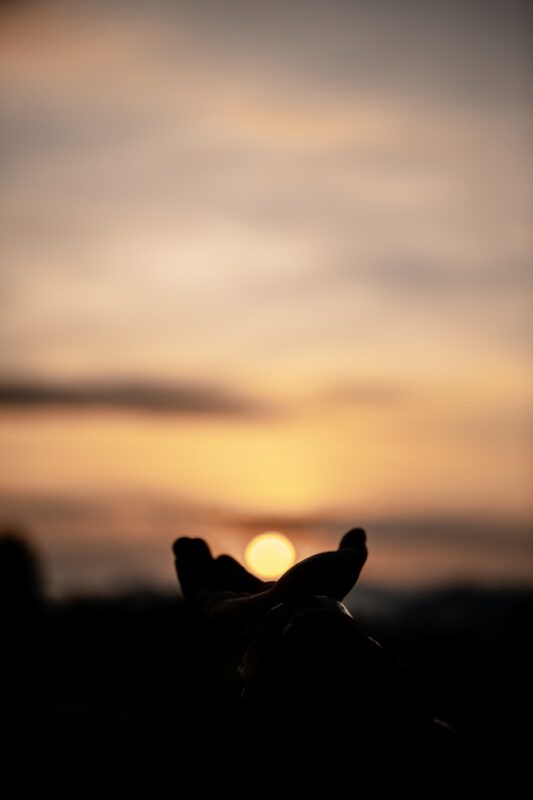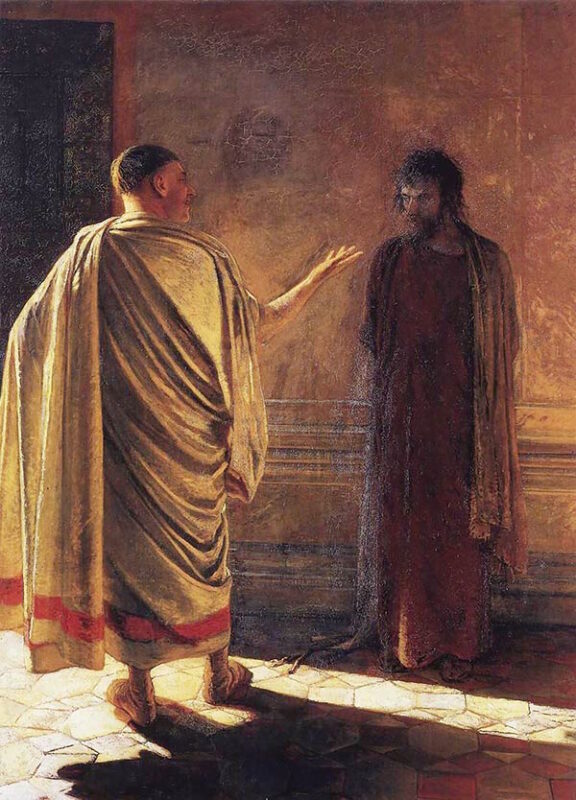As the recipient of the St. Michael’s Faculty of Theology’s Governor General’s Gold Medal, Father Richard René attributes his strong academic standing to a profound passion for theology and its relevance for contemporary life.
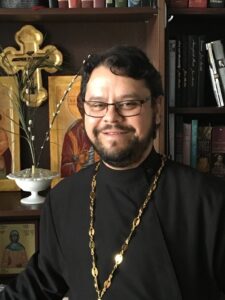
Father René holds a Bachelor of Arts and a Bachelor of Education from the University of British Columbia, as well as a Master of Divinity from St. Vladimir’s Orthodox Theological Seminary. While these degrees supported his vocation as a priest in the Archdiocese of Canada of the Orthodox Church in America, his decision to pursue a doctorate was, above all, a pursuit of personal passion.
By completing his Doctor of Philosophy in Theological Studies, Father René has surmounted his personal “Mount Everest.” His convocation represents his moment on the summit, along with his beloved wife, Jaime, daughter Lily, and granddaughter Hazel, who will be joining him to celebrate this achievement.
His thesis was inspired by his work in a prison setting. In 2014, he became a federal correctional chaplain for Correctional Service Canada (CSC) at Kent Maximum Security Institution in British Columbia. He describes his experiences at Kent as “traumatizing, transformative, and sometimes both at once. Even as I witnessed violence and bloodshed—in the sacred space of the chapel itself—I also encountered moments of profound wisdom, beauty, and dignity in the words and actions of the offenders I served.”
As a result of his work, Father René sought to explore the question, “How do changes for the good as well as for the bad take place within the human person?” His dissertation presents a constructive Orthodox theology that engages with the recent philosophical reappraisal of vulnerability’s role in human flourishing. This work offers a theoretical framework rooted in his Eastern Orthodox faith and pastoral experiences.
Father René was drawn to St. Michael’s because of the Metropolitan Andrey Sheptytsky Institute of Eastern Christian Studies (MASI), where he found what he calls “a community within a community.” He benefited from an environment where scholars from his tradition could engage in fruitful and respectful ecumenical dialogue with those from Western traditions. He expresses deep gratitude for the guidance of his supervisors, Fr. Peter Galadza, retired director of MASI, who encourage him in his first year, as well as Prof. Jaroslav Skira, who guided him through the proposal, research, writing, and oral defense stages of the program.
Going forward, Father René will continue his work with CSC as Regional Chaplain overseeing chaplaincy services in British Columbia. He will also continue his work as director of St. Silas Orthodox Prison Ministry, which was established in 2016 to connect Orthodox Christian inmates across Canada with local Orthodox communities. This ministry began when an inmate wrote to Father René, requesting baptism into the Orthodox Church, which led to the first Orthodox baptism in a Canadian federal prison, with many more following. The ministry continues to provide inmates with Bibles, books, icons, and prayer ropes and offers liturgical services and sacraments, including baptism, unction, and confession.
Father René will also continue his academic pursuits as an independent scholar. He currently has two scholarly articles in development, and his thesis has been accepted for publication by Fordham University Press in the next two years.
David Byrne first came to St. Michael’s in 2006 to pursue a Master of Theological Studies degree and left four years later with a Master of Divinity degree, a new career path in restorative justice and some unanswered ethical questions surrounding the criminal justice field.
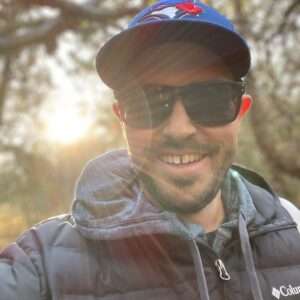
It was these unanswered questions that compelled him to complete his Doctorate in Theology, with a focus on Christian Ethics and a specialization in bioethics from the University of Toronto’s Joint Centre for Bioethics. He will be among those receiving his doctoral degree from St. Michael’s Faculty of Theology on November 9.
While pursuing his master’s degree he did a placement at Peterborough Community Chaplaincy (PCC), a faith-based agency that supported people coming out of prison to reintegrate in the community. He would eventually serve as the organization’s executive director from 2015-2018.
PCC is now a part of One City Peterborough, which offers a variety of programs aimed at those considered a high risk to reoffend, including offering transitional housing, palliative care for prisoners at the end of life, and Circles of Support and Accountability (CoSA), a Canadian program that assists people who have committed sexual offences to lead responsible, constructive, and accountable lives in their communities. Its ultimate goal is that no new victims are created.
As a placement student, he worked on the frontlines of the CoSA program and working with high-risk offenders. The image he held of what a high-risk offender might look like was challenged, as he got to know the people who used the program. He witnessed first-hand the effectiveness of reducing the risk to reoffend came from building personal relationships rather than ostracizing these people.
His academic advisor, Dr. Dennis Patrick O’Hara, recognized that upon his graduation from his master’s he still had pressing ethical questions stemming from his field and advocacy work. He returned to St. Michael’s in 2012 to a setting that would give him the structure and rigor to examine these questions. One of these ethical dilemmas, which formed his thesis topic, was the use of pharmaceuticals to halt the sex drive for people convicted of sexual offences.
His dissertation described how chemical castration is a part of the larger justice system that treats people convicted of sexual offences as predatory animals, incurably sick people, or demonically possessed rather than moral individuals capable of discerning right and wrong. He’s gone on to present his findings at conferences.
He’s received financial support through the Redemptorist Bursary for Lay Theologians and Regis St. Michael’s Financial Aid Committee. Also supporting him in his academic journey are Doctoral Supervisors Profs. Christopher Brittain and Dennis Patrick O’Hara; cherished committee members like Marilyn Legge, Tom Reynolds, Michael Bourgeois and Alison Thompson; faculty and staff at USMC/Regis, including Emil Iruthayathas and Catherine Mulroney; and doctoral colleagues Erin Green and Kate McCray. He would also like to thank his wife Nathalie and children, Rosalie and Edison, for their unwavering support and encouragement along the way.
Now he’s a full-time faculty member at the Community and Justice Services program at Centennial College while teaching in the Policing and Community Well Being program at Trent University Durham. He also remains committed to his advocacy work by sitting on various boards including Restorative Justice Housing Ontario (RJHO) and CoSA Canada, the parent organization for CoSAs nationally.
Ron Gauthier recently retired from corporate life after roughly 50 years in the agribusiness field. Born and raised in Montreal, his career took him to the Greater Toronto area in 1984. He graduated with a Bachelor in Agricultural Sciences and Diploma in Management from McGill University. Before the pandemic, he enrolled part-time in a Master of Theological Studies degree at Regis College, with focus on eco-theology and Ignatian spirituality. Ron is a 4th-degree Knight of Columbus, an RCIA Leader at Mary Mother of God Parish, Oakville; a STIR (Spiritual Transformation in Recovery) Toronto Retreat Coordinator; and a member of the Board of Governors of Catholic Mission of Canada. Ron is happily married to his sweetheart of 37 years, Chantal, with three great sons, two beautiful daughters-in-law, three grandchildren and one more little angel on the way.
It will be one year soon since I retired from the corporate world after a fun career for roughly 50 years in the agribusiness field. Just before the pandemic years I enrolled part time in a Master of Theological Studies degree at Regis College, with a strong interest in eco-theology. It is with passion that I find myself studying and researching that topic with courses from the Elliott Allen Institute of Theology and Ecology (EAITE), as well as also from other colleges. It has become an ongoing spiritual meditation on the environment combined with my Ignatian spirituality courses.
I am a cradle and still practising Christian and Catholic. I have always had a thirst for natural sciences and I graduated in Agricultural Sciences with a strong interest for the environment and climate change and its impact on populations and humankind. I often find myself worrying about the environmental legacy we will leave to our children, grandchildren, and future generations.
I find it a perfect fit for me now to study and research eco-theology, given my spiritual and corporate background and my environmental interests through the years. I have often been asked questions such as: “Eco-theology…What is that?” “There’s such a thing?” “There is a relation between ecology and spirituality?”, which allows me to have interesting discussions with people from various backgrounds.
After reflection, the best and quickest simple way for me to answer those questions is that God created the universe, nature and humankind. All three are interconnected and came from the same Creator. Thus, the start and meaning of eco-theology. Or eco-spirituality if you prefer. Nature (the environment) is God’s gift to humankind.
When we receive a precious gift, we are to cherish that gift and value it. Unfortunately, that gift of creation has been neglected with the advent of the industrial revolution marking a major turning point in earth’s ecology and humans’ relationship with their environment.
It is important to realize that significant scientific discoveries, modernity, and industrialization just recently happened this last century compared to Mother Earth’s long history. And relatively overnight, it dramatically changed every aspect of human life and lifestyles. Significant industrial growth with an increasing world population caused problems and tensions between the very rich and the poorest people within society and it continues to do so all over the world, because of environmental indifference and degradation. We cannot be indifferent to the problems caused by environmental challenges and climate changes. And in those concerned regions with environmental and climate change challenges, those affected the most are women, the marginalized and the poor
Economic growth is necessary and has always been important. It allows better living conditions. New technologies are crucial to allow improvement in providing better health, a comfortable place to live, access to education, better nutrition, social connections, a healthy environment, and happiness. But “greedy capitalism” has quite often created a growth at any cost and to the detriment of the environment and the poorer people. Examples are endless. Of course I have nothing against modernity, growth, and better living conditions, but I often wonder, if we could press “the rewind button” since the start of the industrial world, how different things would be if we would have been, at the same time, eco-conscious, and we had properly, responsibly, and ecologically exploited our natural resources. Am I being a bit naïve by thinking so?
For me, if we could remember one thing from the Bible it’s the great commandment of loving God and loving your neighbor as you love yourself. How can you remain indifferent to growing environmental challenges associated with climate change that affect people (our neighbors) around the world? Consider forest fires and what is presently happening in front of our eyes in Jasper, Alberta (a natural beauty), desertification, the deterioration and loss of productivity in vast agricultural areas, the loss of biodiversity, the increase of natural catastrophes and their impact, the deforestation of equatorial and tropical regions, the pollution of rivers and aquifers.
Striking is the news story of the Seine River at the Paris Summer Olympics, with the contrast between the health and fitness of those Olympians and the poor health condition of this urban river. I have a problem with that picture. A result of industrialization and increase in population in urban cities, not dissimilar from the fates of many urban rivers around the world. How difficult now to bring a river back to life in the modern warming world, even after spending a billion dollars.
Pope Francis, in his now-famous 2015 environmental encyclical, Laudato si’ (Praise Be to You, which I invite everyone to read) came up with the term “integral ecology,” a concept that recognizes the interdependence and interconnectedness between humans and the natural world. The Pope says: “a true ecological approach becomes a social approach; it must integrate questions of justice in debates on the environment, so as to hear both the cry of the earth and the cry of the poor.”
We hear about climate deniers. I do not believe there are such people. They do believe that there are environmental challenges responsible for ongoing climate change, but they are not willing to come out of their comfort zone and make sacrifices for the benefit of the earth and the poor. It would be too costly for them to do so. Facing what appears to be a “one minute to twelve” situation, it is urgent that we do an examination of conscience, as pilgrims on this earth, especially those of us living in a comfortable modern world. In Laudato si’, Pope Francis calls for an ecological conversion by responding to the cry of the earth and at the same time to the cry of the poor affected by wrong natural resources exploitation and by climate change.
Read other InsightOut posts.
It was a day of celebration and happy memories as the Regis St. Michael’s Faculty of Theology (RSM) community gathered to pay tribute to three long-standing professors and wish them well as they head into retirement.
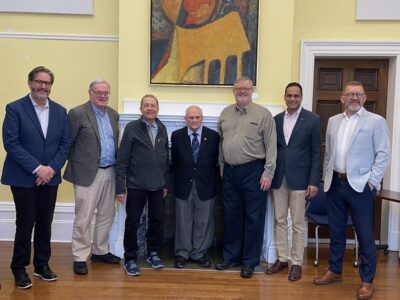
Professors Joseph Schner, SJ, John L. McLaughlin, and Michael Stoeber, all of whom have been teaching at Regis College or St. Michael’s Faculty of Theology for decades, were the guests of honour at the late afternoon event, held at Regis College.
RSM Dean Jaroslav Skira offered introductions, noting how bittersweet the moment was. He shared his happiness at being able to celebrate the many contributions to teaching, the community and to scholarship of the retirees, but also expressed how keenly aware he was of what the absence of such valuable and committed colleagues and friends will mean.
Schner, Professor Emeritus, Psychology and Psychology of Religion, a man who has held numerous roles at Regis and the Toronto School of Theology, received gentle ribbing from his colleagues, who noted that this was his second retirement, a fact that speaks to his dedication to theological education and to Regis, they added. Schner came to Regis in 2002 from Campion College in Regina, where he had served as President. He was appointed Interim President of Regis in 2003 and continued in that role until 2011, and then filled it again from 2015-2017. He first retired in 2017 but continued to teach as a Professor Emeritus.
Professor Gordon Rixon, S.J., President of Regis College, told the gathering that Schner had offered invaluable assistance and insight into the talks that led up to the Regis St. Michael’s federation. He smiled as noted that Schner would play “good cop” to Rixon’s “bad cop” when dealing with contractors handling renovations to the Regis College building, adding that sometimes the two would switch roles, and that Schner was “very effective” in both.
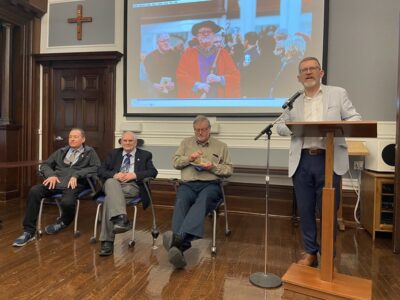
RSM Professor Michael Attridge offered a video tribute to his long-time friend and colleague McLaughlin, who joined the Faculty in 2004. Attridge offered not only his own memories but also those of former students and others in the world of biblical scholarship. (McLaughlin specializes in Old Testament/Hebrew Bible and is an Associate Member of the Graduate Faculty, Department of Near and Middle Eastern Civilizations, University of Toronto.)
Attridge spoke to McLaughlin’s booming laugh, impressive singing voice, his various forms of service to the Faculty community and his attention to detail, as well as the pleasure many found in sharing a pint with McLaughlin while talking about the Bible, life, and God.
The accolades Attridge gathered spoke to how McLaughlin helped his students learn how to teach, and how he brought the Hebrew Bible to life.
“John loved what he taught,” shared Attridge.
Professor Michael Stoeber Professor of Spirituality and Philosophy of Religion, was feted by colleague Professor John Dadosky as the first layperson to join the Regis Faculty, arriving in 2000. Dadosky, who met Stoeber the following year, cited his colleague’s firm belief that the world will be saved by beauty.
Noting that Stoeber had come to Regis from Catholic University of America, Dadosky said, “their loss is our gain.”
Referencing Stoeber’s prolific publishing record and his supervision of 19 dissertations, Dadosky offered particular praise for Stoeber’s work on transformational suffering, mystical experience and post-coloniality.
Additional praise was proffered for Stoeber’s work as a visual artist and to his contributions as a consultant to the Art Gallery of Ontario leading up to the Mystical Landscapes exhibit.
After numerous tributes from a variety of speakers, the guests of honour offered a few words in response.
Schner told the celebration that it had been 50 years since he had graduate from Regis and been ordained a Jesuit.
“Regis will always be a part of me,” he said.
Stoeber noted that his formal departure would not be until March of 2025 and offered praise for his caring colleagues and the enthusiastic staff with whom he had worked.
And McLauglin noted that, as he’d done his graduated with a Master of Divinity degree from St. Mike’s in 1983, he’s been associated with the Faculty for more than half his life. With a planned return to his hometown of St. John, New Brunswick, coming, he left the door open for all to join him in some dulce and have a lobster supper.
For two religious sisters, discovering how to link their concern for the environment with their religious calling meant returning to the classroom. Inspired by Laudato Si’, the encyclical on the care for the environment promulgated by Pope Francis in 2015, Sister MaryAnne Francalanza, FCJ and Sister Benedicta Lim, OSB arrived in Toronto from England and Korea respectively in September 2023 as eco-missionaries for their religious communities. Studying at the Regis St. Michael’s Faculty of Theology, (RSM) and particularly within its Elliott Allen Institute for Theology and Ecology (EAITE), has given them a community, hope, and the tools to champion change that they will take back home.
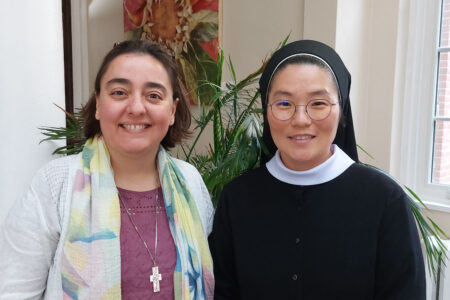
“Science gives us the facts and can help with finding technological solutions, but what needs to be done in order to live in harmony with the Earth and all God’s creatures is change hearts, and that’s in the realm of faith,” says Sister MaryAnne, who had spent 17 years teaching math at a secondary school in Liverpool, England.
She is here for one-year post graduate diploma at the EAITE. As a Faithful Companion of Jesus, she left her teaching position in 2022 to complete her tertianship, a year away from active ministry to deepen her understanding of the FCJ life and charism. In addition to her teaching, Sister MaryAnne describes herself as an “eco-warrior” in her school. She was known to take simple actions like encouraging the students not to waste resources; working with a team of senior students to campaign for meat-free Mondays in the school canteen; and including care for the Earth in prayers and the liturgy. During her year of reflection, she realized she was being called to pursue this passion more purposefully.
The release of Pope Francis’ Laudato Si’ in 2015 compelled the Congregation to make care for our planet one of its priorities at its 2019 General Chapter. This year of study supports that priority.
She has enjoyed being able to take courses at RSM, as well as at Trinity College and Emmanuel College, which are also members of the Toronto School of Theology, a consortium of seven theological schools, affiliated with the University of Toronto.
“There’s a cross pollination with people of other denominations, and even of other faiths. In these classes, whenever ecology, climate change or creation is brought up, students want to talk about it and they all bring different lenses to the material,” she says.
When Sister MaryAnne returns to England in the fall, she will be taking back knowledge, ideas, and experiences that she hopes to share in parishes and schools. “I want to build on the good work that other people have already done,” she says.
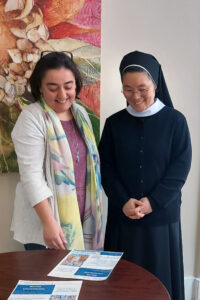
Sister Benedicta is a member of the Olivetan Benedictine Sisters of Busan in South Korea. Her Congregation joined the Laudato Si’ seven-year action plan and that was the occasion for the Council to send someone to study eco-theology. Sister Benedicta’s Mother Superior requested that she study eco-theology specifically at RSM because the program is internationally recognized and known to the community, as two priests they know had returned after earning their doctorate degrees from RSM.
The Olivetan Benedictine Sisters of Busan are called to do whatever work is needed by the Church and this charism includes working directly with the Earth, so some of their ministries involve farming. Through her studies, Sister Benedicta has come to realize that her community demonstrates concern for the environment through all its ministries, and especially its work with the marginalized. As she gains an eco-theological perspective, she realizes how eco-issues disproportionately affect the poor and disadvantaged.
“Pope Francis sees the poor usually as having the cry of nature. When nature is harmed, people, usually the marginalized, are also being hurt and that’s what eco-theology uncovers. I hope to have their voices be heard,” says Sister Benedicta.
Prior to coming to Toronto, Sister Benedicta had been involved in her community’s parish ministry. She is now in her first year of a Master of Theological Studies degree at RSM, while also earning a certificate in theology and ecology from the EAITE.
While it may have been her community that sent her to study, she wants to apply what she is learning to her life of service. “Ecological theology is not something to study and be done with. It’s something that I must carry until the end in my life,” she says. She thinks her education will give her the confidence to speak up more about environmental issues and have a bigger impact on decision making.
“It has absolutely been wonderful to have Sr. Benedicta and Sr. MaryAnne as part of our community. They have brought their unique interest in eco-spirituality and have enriched our conversations on eco-theology with their passion for and commitment to eco-justice,” says EAITE director Prof. Hilda Koster.
The EAITE oversees a certificate and diploma in ecological theology at RSM. Founded in 1991, it is one of the oldest institutes to offer ecological theology programs, and the only Catholic institute in North America to do so.
Students entrepreneurs and siblings Sydnie and Malik Pottinger, each with St. Mike’s roots, are about to make history at the University of Toronto by becoming the first students to partner with the University of Toronto’s Trademark Licensing program to create a capsule collection with their clothing brand MOTUS. Sydnie, a third-year St. Mike’s student, and Malik, a fifth-year kinesiology student, will see their MOTUS line of fashion wear, complete with the university U of T and Leaf logos, go on sale at The Bookstore’s St. George location in March. Items for sale will include a varsity jacket, sweatsuits, beanies, soccer jerseys and t-shirts.

Bringing this dream to fruition has really been a family affair, with encouragement from their parents, and input and assistance from their younger sister, Calille, who, together with her siblings, is also a partner in MOTUS.
The siblings, whose university years have included a stint with Malik playing basketball and Sydnie, volleyball, began to put their heads together during the pandemic to consider creating a line of comfortable fashion pieces with lots of style. They launched MOTUS in January 2023, taking on everything from designing various pieces of clothing through to arranging manufacturing and shipping items themselves. The three even created their own logo.
“MOTUS is Latin for motion and it fits us as we always have one foot ahead, and it signifies always progressing and elevating,” explains Malik, who spent his first year at U of T in residence at St. Mike’s, which he says offered him a sense of home on a big downtown campus.
After their launch, business soon began to boom for the e-commerce-based brand, and Malik and Sydnie began making regular trips from their small warehouse to the post office to mail out orders.
Soon, notes Sydnie, they met their first benchmark of success: seeing someone on the street wearing their clothes.
“Success is your brand being recognized,” she says.
With that in mind, they began to think of how to create a bricks-and-mortar presence and pondered whether they could reach an arrangement to sell their items in the U of T Bookstore, a logical spot for two U of T students.
“We brought up the idea to our parents. They encouraged us and said, ‘The worst that can happen is that the bookstore says no,” Sydnie recalls.

Soon, they were in contact with the University’s Trademark Licensing office, where they were introduced to the manager of the program, Ivan Canete. Prior to Trademark and Licensing, Canete had worked with the Varsity Blues Intercollegiate Athletics department in marketing and commerce, where he managed the Under Armour portfolio for the Sport & Rec programs. Together, they discussed how U of T branding and logos could be integrated into a collaborative MOTUS x UofT collection, with the Bookstore not only stocking their items but investing in initial inventory and connecting with resources such as the Black Entrepreneurs Network.
“We haven’t done a lot of this before,” Canete says of the collaboration, noting that only recently have other big brands begun to create collaborative clothing collections with U of T.
Describing the arrangement as part of the Bookstore’s “evolution”, Canete says that since Bookstore royalties are poured back into student experience, partnering with students is “such a great answer.”
“U of T is pioneering this kind of thinking and is developing a model for other schools to follow,” he says.
“It’s a great feeling to know that something that my sisters and I created in our parents’ living room is going to help other people,” says Malik, who is set to graduate from the Faculty of Kinesiology and Physical Education this year.
“We are the first students to collaborate with the University’s Trademark Licensing Program and it’s really nice to see (our products) among big names likes Roots (and OVO and Peace Collective).”
He plans to spend at least his first year post-graduation focussed on building the business. Sydnie, who still has two years of school and a busy sideline coaching volleyball, will continue as well to make a full-time commitment.
One of the next goals for MOTUS is to produce leather goods, says Malik, who has been doing research into suppliers in Portugal.
“We are already developing an assortment of items of this category for our brand. We’d like to go nation-wide. We are so grateful for U of T’s backing,” he says.
His words of advice for student coming up behind him is to not let their studies box them into one thing.
“Just take everything you learned from U of T and apply it in whatever direction you want to take in your life,” says Malik. “My first two years at KPE provided me with a great foundation and perspective to figure out what I like. That structure, combined with playing on the Varsity basketball team in the first two years of my studies, provided me with discipline and routine that comes in handy today.”

On February 24 the University of Victoria’s Centre for Studies in Religion and Society hosted “The Prophetic Vision of Bishop Remi De Roo: A Symposium” that drew handsomely on an impressive array of talent and experience embodied in the likes of a former senator and ambassador, a foreign affairs maven, social justice activists, theologians, an Anglican bishop, a Muslim pharmacist-entrepreneur, among others.
Dr. Michael W. Higgins, Basilian Distinguished Fellow of Contemporary Catholic Thought at the University of St. Michael’s College delivered the keynote address.
“We could not do much better than to look to Remi De Roo as a model of the synodal bishop that Pope Francis yearns for the church,” says Higgins.
“He was a bishop accustomed to listening, attuned to subsidiarity, active in empowering the laity, deeply collegial at heart, Gospel-focussed in his ministry. His long service as a bishop was not without its flaws, misjudgements, and omissions but it remained throughout the decades a beacon of honesty and authenticity.
On the cusp of a new era of church life and self-understanding, we can all benefit from Bishop De Roo’s struggles, steady witness and personal courage.”
The complete text of Dr. Higgins’ remarks is available on his blog.
Catherine Mulroney is a double alumna of the University of St. Michael’s College and now serves as the
university’s Editorial Manager. She is almost ready to begin describing herself as a lifetime learner.
I’ve said it before and now I’m saying it again: I’m heading back to school.
Come the fall I’ll be working part-time on a Master of Theology (ThM) degree at the Regis St. Michael’s Faculty of Theology and I couldn’t be more delighted.
The first time I returned to school was 2004. I had four children at home, a busy freelance career, a full volunteer calendar, and a husband often described as a happy workaholic. Adding school into the mix was perhaps the most counter-intuitive thing I’d ever done.
My mother had died the year before and her death had given rise in me to many deep questions about life, as well as some surprising insights into my own beliefs. This was all so out of character that I felt called to do something about it. I decided I needed to study, without a clue as to what to expect. I assumed I’d get some questions answered, put in my time to earn another degree, and then return to my regularly scheduled life. My experience, however, was anything but.
Accepted into the Master of Theological Studies (MTS) program at St. Michael’s Faculty of Theology, I registered for two courses in the fall semester. Just weeks after my return, though, the occasional indicators of dementia my father had been manifesting turned into a full-blown crisis. Suddenly, school was not just something I did but a place where, for four hours a week, I could escape some inescapable pressures and responsibility, pouring myself into courses that at once allowed me to disconnect while also offering insights into how to handle my father’s illness. Weekly liturgies in the gorgeous Basilian Centre chapel offered respite and a way to shore up my emotions in a turbulent family time. I carved out reading time late in the evening. My studies became at once a safe space and an instruction manual into how to cope with life’s big issues.
As my father’s illness progressed, I yet again opted to swim upstream, switching my program from a 20-credit Master of Theological Studies degree to a 30-credit Master of Divinity (MDiv) degree. Every time I looked at the course catalogue there were more offerings than I could fit into my original plans, and I realized that the MDiv, with its pastoral focus, was really the degree I’d been looking for.
I could easily imagine myself back in the classroom and the Kelly Library, but I hadn’t anticipated all the value-addeds my time studying theology held out. I began to conquer a fear of public speaking that had arisen, unexpected, as an undergrad. The field placement requirement of the MDiv introduced me to my parish RCIA program. I agreed to run the program, thinking it would be a year-long commitment. Instead, I fell in love with the experience and continued running the program for another 10 years. And when it came time to return to the workforce full-time, I could place myself in one of the country’s smallest professional niches – a journalist with theological training.
It wasn’t always easy being in school at this point in my life. It took me six years to complete my degree, but I assure you – every second was worth it.
Thinking back on my MDiv experience, perhaps the most surprising thing about being back in school was the community I found myself in. I had been worried that I would be the oldest person in my classes but I was met by an impressive range of ages and experiences and soon found my own way to fit in because by its very nature – and its purpose – theology is a place where everyone fits in.
When it came time to place my father in long-term care, I was able to consult a professor of Catholic ethics on how to fill out the obligatory medical intervention form so that it would best reflect Dad’s wishes.
There was the invitation to a classmate’s ordination, an experience that left me unexpectedly teary-eyed when I watched his own ailing dad, very close to death, help his son don his vestments.
And when my husband died after a brief illness, several years after I graduated, I was beyond touched to look out at his memorial service and see not only former classmates but also Faculty staff and professors who had taught me. This community was still with me, and I was still a part of it.
Now here I am, 20 years after my first return to school, glancing through the course catalogue once again. Much has changed in the interim. Widowed, with just one adult child still at home, my time is freer. St. Michael’s Faculty of Theology is now the Regis St. Michael’s Faculty of Theology and the one online course I took, then deemed an experiment, has given way to a great deal of online learning, post-pandemic. Some of the professors with whom I studied have retired, while there are some new faces to get to know. And this time, I have a clear objective: to write a thesis on the negative impact social media can have on Catholic discourse.
Some things, though, will remain the same. Undoubtedly, rather than offering pat responses, my courses will open new avenues of thought and will leave me with even more questions than when I started. I can assure you that, when I graduate, the Trinity will still be a mystery. And that’s all okay, because now I know that the study of theology is open-ended, a lifetime occupation.
This time, I am heading back to school with my eyes wide open. My heart, meanwhile, is prepared for surprises.
Read other InsightOut posts.
Visit the Regis St. Michael’s Faculty of Theology website.
Sr. Gill Goulding CJ is Professor Ordinarius Systematic Theology, Regis College, Senior Research Associate Von Hugel Institute St Edmund’s College University of Cambridge UK, and a Member of the Theological Commission Secretariat of the Synod, Rome. She was appointed by Cardinal Grech to the Theological Commission of Synod in April 2021. Sr. Gill was involved in the writing of the Preparatory Document, The Vademecum, and the Document for the Continental Stage and also took part in five of the North American Continental Sessions.
Lent is early this year. It seems only a short time ago that we were celebrating Christmas and now it is Ash Wednesday and we begin the ‘joyful season’ of Lent. Many times throughout the 40 days of Lent, the Church speaks of joy in the liturgy, illustrating by both the scriptures and prayer that Christian joy is about anticipating God’s presence. Lent is that time of waiting upon the Lord that Pope Francis calls us to amidst the frenetic activity of our daily lives. This waiting period is perhaps especially important this year immersed as the Church is in the synodal process and also in the year of preparatory prayer for the jubilee of 2025. Waiting is good for us the Holy Father insists because that waiting for God is part of our faith journey. To wait well we need to be attentive to those sometime unexpected ways that God reveals himself in our lives, often not with great drama but with those wee lifts of the heart as we perceive in a glimpse of kindness, beauty or truth the guiding spirit of God. By contrast “the worst thing that can happen to us is to let the heart fall asleep, to anesthetize the soul, to lock hope away in the dark corners of disappointment and resignation.”1
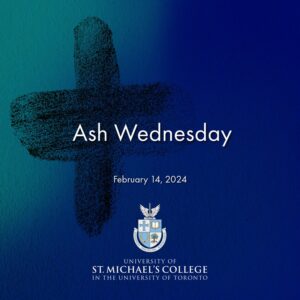
What helps us to stay awake? Here, the great triad of Lenten practices come to our aid. On Ash Wednesday before we receive the ashes on our foreheads we hear in the gospel the call to prayer, fasting, and almsgiving. This same gospel across centuries has challenged the people of God to conversion. On Ash Wednesday Pope Francis, as countless popes before him, will go to the great Dominican church on the Aventine Hill, Santa Sabina, a place where St. Thomas Aquinas himself had lived, to preside over the moving liturgy of Ash Wednesday as a sign that he too, the Pope and Bishop of Rome, is also a man in need of conversion. The occasion also reminds us how our faith is linked across generations of human beings who worshipped God and who desired a conversion that would lead them to a deeper encounter with Christ.
Our waiting needs to include a real attentiveness to prayer. We might ask what prayer? The prayer of the mass, clearly an important communal prayer. But what of our own personal prayer, do we pray and what for? Do we believe in the power of our prayers? Do we pray earnestly and perseveringly, not just for our own needs and family friends who are sick or in need? Do we expand our prayer in a wider way? Every Sunday since the invasion of Ukraine, after the Angelus prayer, Pope Francis has spoken of the need to pray for the people of that country and from October last year he raised the situation in Gaza and other war-torn parts of the world. Do we keep these people in our hearts and in our prayer? Would Lent be a time to do that?
Fasting is often in fashion when people want to lose weight but the fasting that appears in scripture is generally associated with some positive action. From what will we fast this year? Will it be from social media on some day or days of the week? What will be put in its place, a time of silent contemplation, a sensitivity to the needs of others in our family and among our friends? Will we fast from the spirit of criticism that can so easily bring others down and replace that with a smile that can encourage others? In our place of work will we fast from the attitude that implies we are always too busy and instead be attentive to making sure there is water in the hot water jug for the next person to make a cup of tea or coffee? There are a myriad of small possibilities that can make life better for others.
Almsgiving can be tricky when, as many students are, you are living on a tight budget. But the time and attentiveness to the person on the street to whom we may occasionally give money, or the anonymous donation, made known only to God, can be possibilities. When we do not have money to give, we do have time. Even in the busiest schedule there can be the possibilities to give time attentively to others, to the colleague burdened with sick children or parents; to the one who has suffered a disappointment; to the student who is homesick or seriously struggling against mental health issues. Time is often the greatest gift we can give to anyone. The gospel witness is that Jesus always had time for others and as disciples we are called to do the same.
All these practices lead us back to that essential waiting upon the Lord. To sit still before our God, to be humble in heart and mind, that we might listen. In our waiting, that we might glimpse a little more of the passionate love of God for each one of us and in the grace of that love that we might turn our faces to be attentive to the ‘other’ to whom we are sent.
Blessed Ash Wednesday and have a grace-filled and joyful Lent!
1 Pope Francis, homily, Feast of Presentation of the Lord, February 2nd 2024.
Read other InsightOut posts.
The University of St. Michael’s College community is remembering Fr. William Irwin CSB as a gifted professor, an inspiring homilist, and a man of extraordinary pastoral skills who cared deeply for his students.
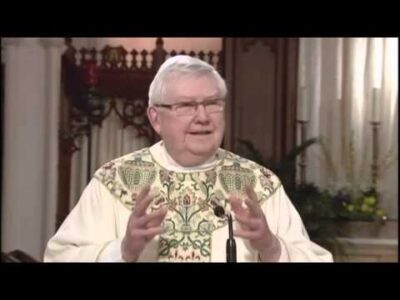
Fr. Irwin, who died on Dec. 6 at the age of 91, was a biblical scholar who specialized in in the Book of Isaiah and the Book of Psalms. He taught at St. Michael’s Faculty of Theology for decades, serving as Dean of the Faculty from 1981-1985. From 2001-2004 he was President of Assumption University in Windsor, On.
Born in Houston, Texas, Fr. Irwin earned a BA and an MA from the University of Toronto and a Baccalaureate in Sacred Theology from St. Michael’s before going on to further studies at the Angelicum and the Pontifical Biblical Institute in Rome. Ordained a priest in 1959, he joined the Faculty in 1965 and continued teaching part-time into his 80s, well past his formal retirement date.
“Fr. Irwin is one more example of the tremendous debt St. Michael’s owes to the Basilian Fathers,” said Prof. Jaroslav Skira, Dean of the Regis St. Michael’s Faculty of Theology. “I am particularly grateful for his dedication as Dean of the Faculty of Theology, for his scholarship in the Hebrew Scriptures, and for helping educate numerous graduates–some of whom we count as members of the Regis St. Michael’s Faculty of Theology.”
In an address to the Faculty of Theology convocation in 1985, Fr. Irwin spoke to those assembled about the importance of balancing study with lived experience, noting that “the Gospel not only enlightens but transforms,” and urging all to become engaged with the world, using their gifts to teach a message of hope. It is a model his former students recall well.
Doctoral candidate Sr. Carla Thomas O.P. who studied the Psalms with Fr. Irwin, remembers him as “a kind and gentle instructor. Fr. Bill taught by his personal presence as much as by his lecture,” she said. “I was struck that in his retirement years he still continued to teach students, in spite of all the demands that it must necessarily have made on him in so many ways. I remember him telling us that his favorite psalm was Psalm 73, and that God does not punish. Rather, God leaves people to their own counsel.”
Long-time Faculty Professor John L. McLaughlin also studied under Fr. Irwin.
“Bill Irwin was my Doktorvater, directing my Ph.D. dissertation, later was my colleague, and in both roles I considered him my friend,” recalled McLaughlin. “Bill combined insightful biblical scholarship with a deep pastoral sensitivity, both inside the classroom and outside. He was one of the best, if not the best, homilist I have ever heard from a number of religious traditions. In his teaching he combined careful detailed scholarly treatment of biblical texts with the relevance of the results for the Church and the world.”
But, adds McLaughlin, Fr. Irwin “was also attentive to what students were going through. Partway through an individual Reading and Research course in the first year of my doctoral studies, I lamented that I was feeling run down, not sleeping and feeling overwhelmed, ending with ‘I don’t think I can handle a Ph.D.’ He responded that most students felt that way in the first year, then told me not to read anything new for our next meeting, just review what I had read, and told me to take at least one day and sleep. When I walked into his office two weeks later, before I could say anything he asked, “Did you sleep?” He truly cared as much for the person as he did for the project.”
In 2015, Fr. Irwin delivered the Meagher Lecture at St. Michael’s, offering a talk entitled Between Church and Theology: The St. Michael’s Faculty of Theology at 60, to mark the Faculty’s six decades of granting degrees.
He also touched the lives of students he had never taught by endowing scholarships for dozens of students in the Faculty.
Visitation will be held in the chapel of Presentation Manor, 61 Fairfax Cres. in Scarborough, on Friday, December 15 from 9:30 a.m.-10:30 a.m., with a funeral immediately following.
Paul Babic is a first year MDiv student at the Regis St. Michael’s Faculty of Theology with a background in Philosophy and Religious Studies from McMaster University. He, too, took part in the inaugural Catholic Perspectives on Ecumenical and Interreligious Movements course in Rome this past summer. With his MDiv, he hopes to help and serve those “who may feel as though God has abandoned them.” In his spare time, he enjoys blogging, lots of coffee, conversations with friends, and long walks.
I’ve tried many times to write about why I loved Rome. I think I’ve failed to do so because, truth be told, if I were to list everything that I loved about it—all the priceless works of art, the winding streets, the beautiful churches—then I wouldn’t be able to stop. My writing would be aimlessly adrift, with no point, and simply in awe of what I felt while I was there.
It’s certainly true that Rome lives up to her reputation: she is the Eternal City. She contains countless treasures to be adored, be it the Sistine Chapel or a Pope-approved gelato on Via Gregorio VII. Not to mention that, for the first time, I found myself at the heart of the Catholic Church and its faith, which is, of course, the faith that led us all there. To have not only studied large swaths of Christian history at the Centro Pro Unione but to have visited so many of the basilicas and sites of pilgrimage gave me a very intimate experience of just how ancient and incarnate Christ’s Church really is.
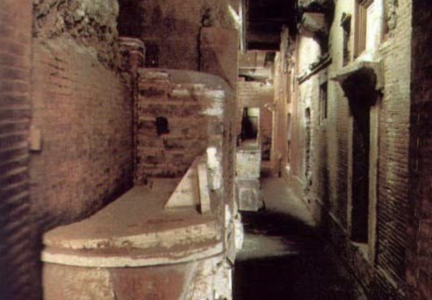
To give you just one example, I was deeply touched by our visit to St Peter’s tomb. This was not the only tomb of the Apostle that we would see, but it was the only one whose history was explained to us in great detail and, as we fought the humidity beneath that fabled basilica, we listened to how Christians kept track of Peter’s tomb for centuries. We heard how it was distinguished from the other graves, how Constantine encased it in marble, how it was eventually buried, and for long after seemed like nothing but an urban myth. Then, in the 20th century, it was discovered and excavated, and now it is possible to see as part of that lost necropolis today. As I saw it for my own eyes, I can remember thinking of how many pilgrims have done the same; I thought of how this was, in many ways, representative of the Church’s apostolic memory; and, of course, I thought of whose bones lay right in front of me, and who he gave them up for.
But amidst these enchanting experiences, aside from awe, I felt something else: I felt grateful, and I felt that way because, one year ago, I would have never imagined the opportunity for such an adventure. Rome was the kind of thing I would only see in films, and it felt very far away. Surely, for any Catholic who studies theology, studying in Rome—for any period—is like a dream come true, and when I saw the opportunity to do just that, I jumped at it. Had it not been for that, I might never have seen those sights in Rome for a few more years at least, if not many more than that, but even then, I’d certainly wouldn’t have had those experiences because I did not go alone. With me, there was a terrific cohort from Regis St Mike’s, and what fond memories we made together!
However, I’m not simply grateful to have had great travel companions. Leaving aside the spectacle for a moment, I also wanted to thank the University of St Michael’s College and the Centro Pro Unione for making it all possible. Additionally, I’d like to thank our President, David Sylvester, and his wife for coming to visit us; our Archbishop, Francis Leo, for the hospitality and kind words he shared with us at the Canadian Pontifical College; the kind funding for the program from donors and, of course, our professor, Mike Attridge, without whom none of this would have been possible.
All of that to say, I fell in love with Rome during my three weeks there, and for anyone doubting whether or not to give experiential learning a go, I’d urge them to put their doubts aside because I promise that you won’t regret it.
Read other InsightOut posts
Rosemary Boissonneau is a climate justice activist and a doctoral candidate at Regis St. Michael’s Faculty of Theology, where she studies ecotheology and scripture. Her research involves applying ecofeminist and decolonial methods to the interpretation of Old Testament texts in order to retrieve an understanding of the land as the mother of earthly life and the medium of God’s blessing. Before embarking on graduate studies, Rosemary enjoyed a long career as an elementary school French teacher.
When I decided to go back to my undergraduate alma mater, St. Michael’s College, to pursue theological studies after decades away from university life, I knew that I would enjoy returning to fondly remembered places from those bygone years, like the Kelly Library and the Coop. However, I never expected that being a St. Mike’s student again would lead me back to Rome, a city I had visited only once before, during the third year of my undergrad studies. Yet, thanks to St. Mike’s commitment to experiential learning and ecumenism, I found myself once again in Rome this past summer as one of eight lucky students participating in the Faculty of Theology’s new course, “Catholic Perspectives on Ecumenical and Interreligious Movements.”
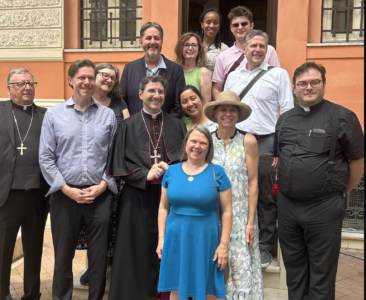
This intensive summer course is the brainchild of Professor Michael Attridge, and it is structured around three weeks of classes in ecumenical and interreligious dialogue at Rome’s Il Centro Pro Unione, an institute dedicated to the study and promotion of ecumenism. The Centro’s annual summer program consists of morning lectures by experts in ecumenism and interfaith relations followed by afternoon excursions to important historical Christian sites like St. Peter’s Basilica, St. John Lateran and St. Paul’s Outside the Walls. Students also visit the Grand Mosque of Rome and the city’s Great Synagogue as well as the Vatican dicastery offices for promoting Christian unity and interreligious dialogue. Aside from the programming provided by the Centro, Professor Attridge arranged many extra outings and experiences for us students in the St. Micheal’s course. Whether it was a tour of the Pontifical Biblical Institute, vespers and supper at the St. Egidio Society, or the Sunday Angelus led by the Pope in St. Peter’s Square, Professor Attridge was always there to guide us with his kindness, knowledge, and inexhaustible energy and enthusiasm.
Another significant perk of the course was that the students’ accommodations in Rome were paid for by a special St. Mike’s fund dedicated to ecumenical studies. This made the course accessible to cash-strapped students like me, but it also helped foster a great sense of community among the students and Professor Attridge as we all stayed at the same hotel atop a hill a short distance from St. Peter’s. We began our days communally with breakfast in the hotel’s restaurant and often capped off our evening by sharing wine and conversation in the hotel courtyard at sunset.
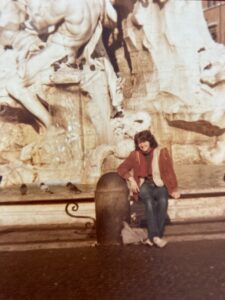
By contrast, my first visit to Rome almost four decades ago was a much less structured affair, but it, too, was very much shaped by my connections to St. Mike’s. Like this summer’s trip, my earlier stay in Rome would not have happened if I had not been a St. Mike’s student involved in experiential learning. With the intention of being a French major in university, I was drawn to do my studies at St. Mike’s because of its highly regarded French department and the possibility of completing my third year in the south of France as part of the University of Toronto’s now-defunct Study Abroad Program. Also, due in no small part to the strong Italian cultural presence at St. Mike’s, I chose to complement my French studies with a minor in Italian. Thus, I found myself in my third year as a St. Mike’s undergrad in Aix-en-Provence, France, near Italy, making plans to test out my Italian by spending the Christmas break in Rome along with another student from my course. My brother, who was doing a doctorate in theology at St. Mike’s at the time, had studied in Rome a couple of years earlier, and he was very excited for me when I wrote him (in an actual posted letter!) about my upcoming trip. This past winter, my brother was equally enthusiastic when I discussed with him the idea of taking the newly announced St. Mike’s Rome course. In fact, I might not have enrolled in the course without his ardent encouragement. “Rosemary, it will change your life!” he said, and he was right. This summer’s course was a life altering event filled with unforgettable moments, just like my undergrad year studying abroad had been.
Among my many memorable experiences in Rome this summer, the one that stands out the most is attending the Pallium Mass celebrated by Pope Francis in St. Peter’s Basilica, during which Archbishop Leo received his pallium as the new archbishop of Toronto. Following the Mass, our St. Mike’s group were guests of the Canadian College at a lovely reception that it hosted in honour of Archbishop Leo, who also happens to be USMC’s Chancellor. Located near the Vatican, the Canadian College serves as a home for Canadian clergy studying in Rome. The Mass and reception were extra-special for me because they mirrored the most memorable part of my first trip to Rome so many years ago. Back then, my ever-protective brother managed from afar to put me in contact with the folks at the Canadian College, where he himself had lived during his studies a few years earlier. The director and students there made us feel very welcomed when my friend and I came knocking on their door a few days before Christmas. They arranged for us to attend Christmas morning Mass at St. Peter’s celebrated by Pope John Paul II, and after Mass we walked over to the College to have Christmas lunch as their invited guests. What an unforgettably wonderful day!
Fast forward from Christmas 1985 to June 2023, and there I was again, a St. Mike’s student attending a Papal Mass at St. Peter’s Basilica and celebrating with a meal afterwards at the Canadian College. But this time, the moments were all the more special because I shared them with so many fellow students and others from the St. Mike’s community, including even my brother, who had come to Rome as part of Archbishop Leo’s contingent. Thanks, St. Mike’s, for the memories, old and new!
Read other InsightOut posts
An innovative new course from Regis St. Michael’s Faculty of Theology will see students travel to Rome this summer to focus on a theological and historical overview of the issues that divide Christians, as well as the bonds that unite them.
Catholic Perspectives on the Ecumenical and Interreligious Movements, taught by Dr. Michael Attridge, will be held at Centro Pro Unione, an institution located in central Rome run by the Friars of the Atonement, an order with a charism devoted to actively promoting Christian unity and the founders of what is now known as the Week of Prayer for Christian Unity.
During the course, which runs Mondays to Fridays from June 26 to July 14, students will engage with experts from the Angelicum (the Pontifical University of St. Thomas Aquinas) and other Roman universities, as well as from the Vatican’s Dicastery for Inter-Religious Dialogue. Participants will stay at Casa Tra Noi, a hotel close to the Vatican that earmarks its profits for charity, including supporting single mothers, those with dependence issues, and the terminally ill. Costs are generously supported by the Driscoll fund, donor money earmarked for the study of ecumenism.
The course includes lectures, seminars, workshops, and excursions. Along with outings to Santa Maria Maggiore and other sites with a key place in Roman Catholic/Christian life, students will also visit the city’s Jewish ghetto and a mosque, as well as meet with a variety of communities, including a visit to Sant’Egidio, a lay community working with the homeless, migrants, refugees, and people with developmental delays.

One of the highlights of the trip will be attending the Mass of Sts. Peter and Paul, also known as the Pallium Mass, on June 29th. Tradition sees pallia, a vestment article worn only by archbishops and the Pope, conferred on new archbishops on this day, so St. Michael’s students will witness Archbishop Francis Leo, Toronto’s new archbishop and the new Chancellor of the University of St. Michael’s College, receive his pallium, and then have a chance to chat with him.
“As Regis-St. Michael’s works to expand its experiential learning opportunities, this is an exciting chance for our students to learn about the ecumenical and interfaith work of the Catholic Church from those working in and associated with the Vatican’s dicasteries,” says Attridge. “I can’t think of a better venue either: the historic Centro Pro Unione – located in the heart of Rome on one of its most famous squares, the Piazza Navona. The Centro played a key role at the time of Vatican II in hosting weekly gatherings of theologians and ecumenical observers who helped shape the final documents of the Council. In every respect, these three weeks should be an unforgettable experience for our students.”
Along with participation in class and weekly roundtable sessions on the key learning of the week, participants will submit written work and contribute to a blog on the course, Rome 2023, with each student responsible for five posts.
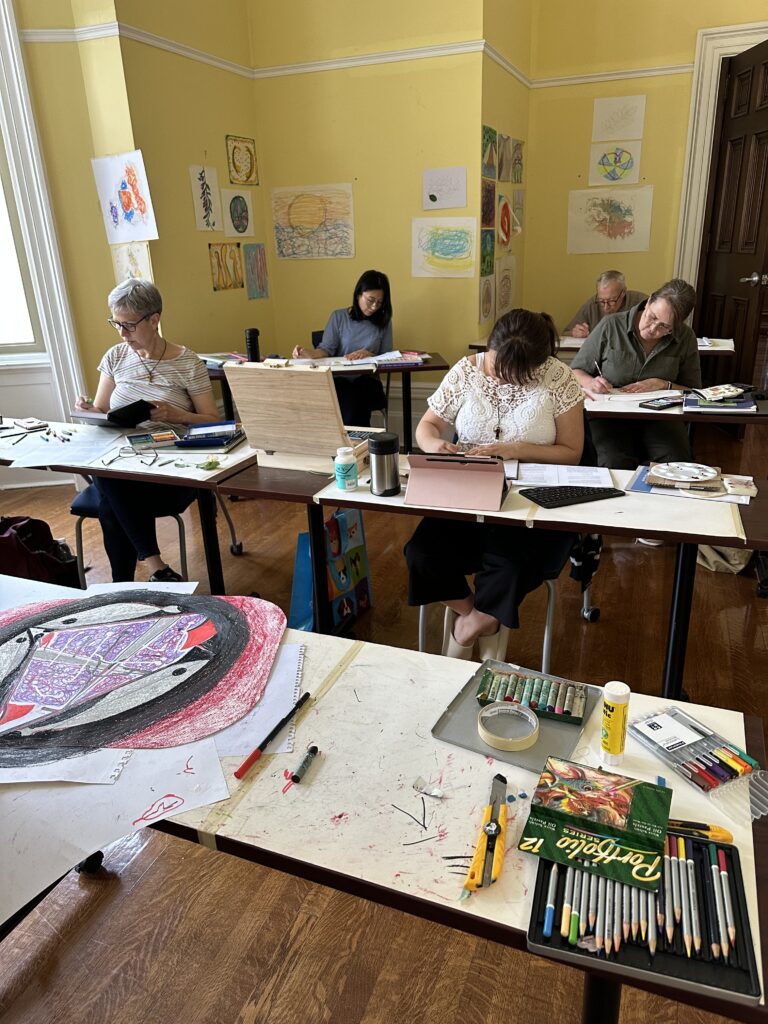
The Catholic Perspectives course is the latest in a long line of experiential courses, classes that involve travel to relevant sites or include hands-on learning. Consider, for example, Prayer and Meditation Through Pencil, Pastel and Ink Sketching, offered at Regis College, which explores the theory and practice of various types of prayer through drawing, or St. Michael’s A Journey Through History – The Jesuit Missions in Early Modern Canada, which is taught at the heart of the former Wendat (Huron) nation (present-day Martyrs’ Shrine.) Another experiential course offered during the summer is Interfaith in the City, which sees students visit various houses of worship to learn more about interfaith dialogue. This course is particularly popular with teachers who are responsible for World Religions course.
While experiential learning courses take place throughout the academic year and are open to all students, the summer courses are particularly helpful to Master of Religious Education students, for whom the condensed scheduling and the inspiration for future lesson planning offer great opportunities and support, says RSM Dean Jaroslav Skira.“Supporting our students is always top of mind for us,” Skira says. “We know people lead busy lives but value a theological education, both personally and professionally. One of our goals, therefore, is to help make our courses accessible to more people while ensuring we are addressing topics that are of interest to our students and serve their personal and professional goals, all while engaging in memorable, inspiring ways.”
To learn more about course offerings – including experiential courses – at Regis St. Michael’s, or to talk about enrolling in one of our programs, please contact erica.figueiredo@utoronto.ca or visit https://theology.stmikes.utoronto.ca/.
Pope Francis has invited us to listen to one another in a synodal church. St. Mike’s hosted a panel discussion on the international theological project Doing Theology From The Existential Peripheries a research project of the Dicastery on Promoting Integral Human Development, Holy See. The project aims at deepening the teachings of Pope Francis and renewing theology.
Carl O’Byrne is a graduate of the University of St. Michael’s College. He has a background in education. Currently he is the coordinator of All Inclusive Ministries (AIM).
On November 10, 2022, the University of St. Michael’s College held a panel discussion on the findings of a North American report commissioned by the Vatican as part of Doing Theology from the Existential Peripheries:
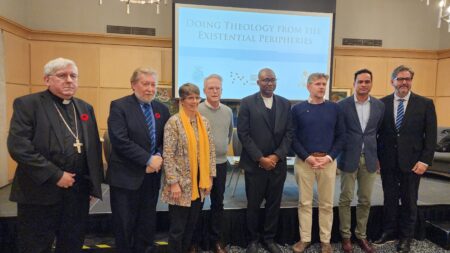
Doing Theology from the Existential Peripheries is a research project of the Migrants and Refugees Section (M&R) of the Dicastery for Promoting Integral Human Development, Holy See. It aims at deepening the teaching of Pope Francis and promoting a renewal of theology. The project is built on the belief that those who have been marginalized, whether socioeconomically, socially, or in other ways, hold a wisdom capable of reopening discourse, especially where there are tensions. Specifically, it seeks to uncover the sensus fidei fidelium of those often excluded from discourse within society and especially within the Church. In this way, we can nurture and grow Christian thought beginning from a deep sense of faith in order to transform lives and hearts once again.
I have been involved in one way or another with All Inclusive Ministries (AIM) in its varied iterations since the 1980s, the height of the AIDS crisis. AIM is a Roman Catholic community of LGBTQ+ and allies aiming to provide equal access to worship, opportunities, and resources within the Church for LGBTQ+ faithful who often feel excluded or marginalized.
Being excluded or marginalized provided a fit with the project of the Migrants and Refugees Section of the Dicastery for Promoting Integral Human Development, Holy See. Sounds complicated? It is. How do you classify, categorize millions of people worldwide?
Quite unexpectedly, I came to be on the panel discussion at St Mike’s. My first thought, after an immediate and sincere prayer of supplication, i.e., omG, was not some lofty goal of inclusion, but of the late comedian of some controversy, a gay icon, Joan Rivers. In the 1980s, Joan Rivers’s catchphrase Can we talk? went viral – and going viral did not precisely have the same meaning then as it does now in the age of social media. Going viral at that time might justifiably be linked more often to the spread of HIV/AIDS. Joan Rivers did a lot of talking. She talked to, with, and about LGBTQ+ people regardless of their health status. She was an advocate – in the true sense of the word – she talked toward something; added her voice. She did so for the rest of her life.
At that time, the Church (for the greatest part) did not talk to the gay (common usage from that era) community, other than to condemn. For those of our community lucky enough to live in Toronto at that time, and still, up to the present, the Society of Jesus, the Jesuits, and their parish, Our Lady of Lourdes, was the sole, and most welcome exception. They talked to us, with us, provided pastoral support, and buried our dead at a time when few others would. We will never forget.
I have no nostalgic attachment to the 1980s. Being stuck in any particular time is never a good thing. The expression, Can we talk? cuts to the heart of the matter. It goes beyond being a catchphrase of a particular person, and era. It eliminates everything that is not essential. It holds clarity and complexity. It leads to the heart of the matter – a bonus as we enter June, the month of Pride, and also, for Catholics, the month devoted to the Sacred Heart of Jesus.
One of the very surprising things about Pope Francis’s Synod on Synodality is that it actually welcomed people to talk, to share their thoughts about the state of the Church in the very early period of the third millennium. But how practically would this unfold? Many (the majority?) LGBTQ+ people have left the Church. Their reasons for doing so are valid, and easily, empathetically understood. Not surprisingly, there was a great deal of skepticism regarding the synodal process. For example, would dioceses institutionally unfriendly, or openly hostile to LGBTQ+ people now listen? And then what? Would diocesan reports sent to the Vatican accurately reflect what conversations (if any) actually discussed?
This quandary was removed by the way the research project was conducted, and by the way it was reported to the Dicastery for Promoting Integral Human Development: directly, with no diocesan intermediary. Pope Francis also talks. For example, in his encyclical Fratelli Tutti:
I sometimes wonder why … it took so long for the Church unequivocally to condemn slavery and various forms of violence. Today, with our developed spirituality and theology, we have no excuses. Still, there are those who appear to feel encouraged or at least permitted by their faith to support varieties of narrow and violent nationalism, xenophobia and contempt, and even the mistreatment of those who are different. Faith, and the humanism it inspires, must maintain a critical sense in the face of these tendencies, and prompt an immediate response whenever they rear their head. For this reason, it is important that catechesis and preaching speak more directly and clearly about the social meaning of existence, the fraternal dimension of spirituality, our conviction of the inalienable dignity of each person, and our reasons for loving and accepting all our brothers and sisters.
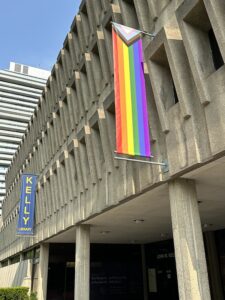
Can we talk?
Yes. And we did, thanks to the University of St Michael’s College. The College not only provided the physical setting; it did so much more. It facilitated and encouraged the free and welcome exchange of ideas. Courageously. With the promise to do so in the future: Theology from the Existential Peripheries. Such gratitude is well placed but St Mike’s, like any institution, is ultimately only as good as the people who guide it. So, thank you to Drs. Michael Attridge, Darren Dias, Mark McGowan, and David Sylvester. Well done.
Please note: The Kelly Library will continue to display the Progress Pride banner until the end of September as St. Mike’s prepares to welcome the Class of 2T7 to campus this fall.
Read other InsightOut posts
Nicole Ferrante is in the final weeks of her MDiv degree at the Regis St. Michael’s Faculty of Theology. She has recently taken on the role of Campus Ministry Coordinator at USMC and is excited to serve the St. Mike’s community in this new capacity.
Christ is risen! Alleluia!
Throughout the world, these words are being joyfully proclaimed as we celebrate Easter, the Resurrection of our Lord. But as these words leave our lips, do we really take time to ponder in our hearts what they truly mean?
Christ is risen… It is easy to take these words for granted, so many years later. But let us put ourselves for a moment in the shoes of the closest followers of Christ; those who walked with him, ate with him, prayed with him, and laughed with him; those who loved him as a son, brother, teacher, and friend; those who hoped in him as something more, something greater, though they were only beginning to grasp an inkling of what that might be.
On Good Friday, a man was crucified. A man who seemingly had his whole life ahead of him. A man of compassion and hope, beloved by those near him. An innocent man, guilty of nothing but the justice and mercy that permeated his being and the promise of change in the world around him. Jesus, the Son of God, uttered his final words, and breathed his last.
The disciples must also have been left breathless in the despair that threatened to crush and suffocate them. Wordless in their sorrow, which simply couldn’t be expressed.
But the story does not end there. For on the third day, the tomb is found open and empty. The linens that wrapped Jesus’ body, left behind. And Jesus, risen from the dead, makes himself known in a new way to his followers.
Jesus was dead; now he lives. Hope seemed lost; now it abounds. And something of the goodness, greatness, and boundless love of God is grasped in the human heart in a totally unprecedented way.
A new breathlessness takes over: the utter breathlessness of wonder, of a heart so full that for the first moments one is entirely caught up, forgetting to exhale. A new wordlessness takes place, born not from emptiness, but from a sudden fullness that cannot be expressed, nor comprehended. For what human words could begin to convey the joy and the monumental significance of the mystery that has taken place? Two thousand years later, as we continue to ponder the events of Easter Sunday, let us not forget to take a moment to be wordless in our wonder. To feel that fullness in our chests, which chokes us up and overtakes us. And may it be out of that moment of silent, all-encompassing wonder that our joy is born, and that together we are finally able to proclaim with the fullness of our being: “Christ is Risen! Alleluia!”
Blessings to all as we begin this Easter Season!
Read other InsightOut posts
Nicole Ferrante is in the final weeks of her MDiv degree at the Regis St. Michael’s Faculty of Theology. She has recently taken on the role of Campus Ministry Coordinator at USMC and is excited to serve the St. Mike’s community in this new capacity.
This Sunday, Christians around the world begin their observance of Holy Week. We are drawing to the end of the season of Lent, and the anticipation for Easter, for the Resurrection, is building. This season has likely looked a little different for each of us. For me, it has coincided with the busiest weeks of the year as I begin my new job and prepare to finish my theology studies. I am sure I am not alone in my anxious anticipation for the end of the school semester. Similarly, as we reach the end of this 40-day Lenten season, it is natural that we anxiously await the Easter season, in all of the joy and light that it is sure to bring.
But Holy Week compels us not to preemptively jump forward to the Resurrection. This week is packed full with rich tradition, with spiritual significance, and with ample opportunity for drawing closer to God and to our Christian communities. As we try our best to live these last days of the school semester intentionally, let us also try our best to appreciate the beauty and significance that are offered by these last days of Lent.
Holy Week begins with the celebration of Palm Sunday mass, which starts by commemorating Jesus’ entry into Jerusalem. With waving palms and joyful shouts of “Hosanna!”, the transition into Holy Week is at first marked with joy and triumph. Yet not half an hour later, as the Passion narrative is read, joy turns to pain and sorrow. The mass ends in utter silence, and the believing community is sent home with an unshakeable sense of “What now?”. It is a “what now” that, whether we realize it or not, is deeply resonant with the anguished “what now” of the Apostles and the first followers of Christ upon witnessing the death of their Lord, the source of their hope.
As Holy Week progresses, Christians are presented with the broadest range of human emotion and experience. We see the humility, tenderness, and earnest service of Jesus as he washes the feet of his disciples on Holy Thursday, urging them to do likewise for one another. We see him share his final meal with his closest friends. We witness the agony of Jesus in the garden of Gethsemane, and the betrayal he experienced at the hands of those whom he held dear. We reflect on his encounter with his mother on the way to Calvary, and what love and pain that moment must have held. Finally, we see him take his last breaths and face the uncertainty of death. During Holy Week we see, at the deepest level, what it truly means for Jesus to have taken on our human condition. For the Word to have become flesh, and dwelt among us.
Jesus united himself intimately and unwaveringly with our reality. Can we, this Holy Week, unite ourselves with his? Can we participate, with him, in the events leading up to the Resurrection? Can we enter, with him, into this journey to the heights and depths of human experience? Into the self-giving love he held for those whom he served? Into his embracing of fear and suffering, and his surrender to the will of God? Into his forgiveness of the very people who were persecuting him? “For if we have been united with him in a death like his, we will certainly be united with him in a resurrection like his” (Romans 6:5).
St. Mike’s Campus Ministry would like to propose several ways in which you can participate in Holy Week this year. First, all are invited to attend any number of the services and liturgies taking place at St. Basil’s Parish throughout the week:
- Saturday April 1st, 6:30 pm – St. Mike’s Campus Ministry Palm Sunday Mass
- Wednesday April 5th, 7:00pm – Tenebrae Service
- Thursday April 6th, 7:00 pm – Holy Thursday Mass
*Consider registering for our Holy Thursday Traveling Adoration event, from 5pm-Midnight, beginning with dinner and mass, and ending with a pilgrimage to seven churches around the city.
- Friday April 7th, 3:00 pm – Good Friday Service
- Saturday April 8th, 8:00 pm – Easter Vigil Mass
- Sunday April 9th, 9:00am, 10:30am, and 12:00pm – Easter Sunday Mass
Finally, for those looking for a resource to guide your prayer and reflection this week, you can find below the links to “Crucis Mysterium: A Music + Prayer Podcast for Holy Week”, a presentation developed last year by the St. Michael’s Schola Cantorum and St. Mike’s Campus Ministry. This immersive prayer experience features sacred music, scripture readings, poetry, and meditations upon the five Sorrowful Mysteries of the Rosary.
Wishing a blessed and fruitful Holy Week to the entire St. Mike’s community!
Read other InsightOut posts
John Sampson is a recent graduate of the conjoint PhD program through St. Michael’s College and the University of Toronto. In December 2022 he received a postdoctoral fellowship through the Ricci Institute at Boston College to participate in a weeklong workshop in Seoul, South Korea, which focused on the historical legacies of Christianity in East Asia. John is a course instructor at St. Michael’s College and the coordinator of graduate programs at the Toronto School of Theology.
It was a cool December afternoon in Hapjeong-Dong, not far from the Gukhoe, South Korea’s National Assembly building in Seoul city. Mist hung in the air as we ascended the wooden staircase on Jeoldusan, the Beheading Mountain, where 200 Korean Catholics were martyred during the Byeong-in persecution (1866-1873). Jeoldusan, which became a Catholic shrine and national historic site in 1956, bore the painful memory of 1866, the year of “Western disturbance.” The French, seeking to subvert the anti-Catholic regent Daewongun and further colonial expansion into Korea, seized control of territory near modern-day Seoul. Korean Catholics, perceived as supporters of the French fleets, were rounded up in October 1866 and beheaded.
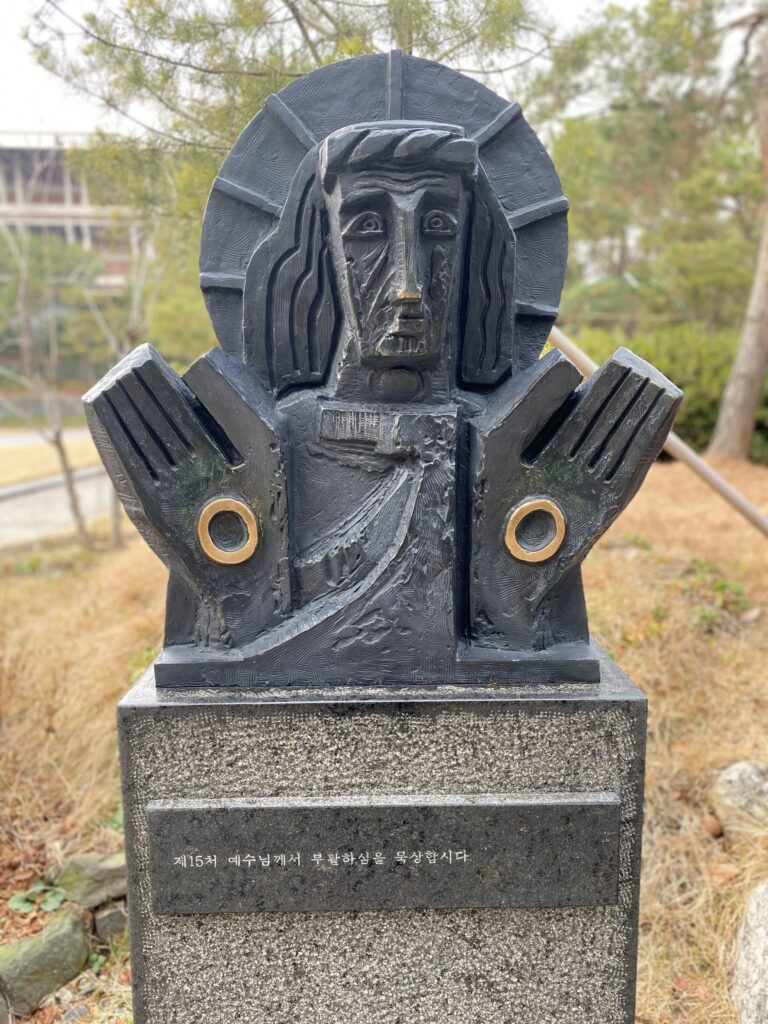
Along the martyrs’ mountain path were beautiful cobblestones and well-trimmed hedges that sat uncomfortably with the memory of 1866. Magpies clicked and cawed in the distance. Our tour group followed the martyrs’ last footsteps, winding up Jeoldusan to a small chapel where their names were etched in stone. We made our way to the chapel, went down into the basement and to the reliquary, their final resting place. A long silence followed. John Park Lao-ho, Mary Kim I-beun, Francis Lee Ui-song, Maoro Yu were among the many names called upon, interrogated, and executed in October 1866. Their testimonies, documented with Confucian precision by the ruling officials at their interrogation, consisted of refusals to apostatize, to turn one’s back on God, to betray Christ. “It’s normal for me to die, not to deny my faith,” Augustine Lee Yong-lae stated. “I will die for my Lord,” John Kang declared.
The Jeoldusan shrine stood as a living reminder of how Christians throughout history have embarked upon the way of Jesus Christ, the way the Apostle Paul described as being “crucified with Christ” (Gal 2:19). This became abundantly clear not only when I heard the martyrs’ stories but when I saw stations of the cross surrounding the mountain path. Completed in 2001 by artist Lee Choon-mann, each station depicted Christ with an indigenous Korean style, vividly displaying the man of sorrows on his long walk into death. I lingered at the final station. Confronted by the resurrected Christ, my eyes fixated on the holes in his hands.
Jeoldusan is a now a place of peace and respite, tucked away from the bustling activity of South Korea’s capital city. It is a sacred site for the Korean Catholic Church and place of pilgrimage for Christians all around the world. John Paul II and Mother Theresa visited in the 1980s. Before we concluded our tour at the entryway gift shop, we visited the museum beside the chapel. A large skylight shone down from the centre ceiling, creating what architect Kim Seunghoy says is an intentional narrative of architectural space— the gentle light resembling the call to martyrdom from the divine flooding the room. The exhibition hall displayed pristine records pertaining to the Catholic Church’s battered history in Korea: letters of St. Andrew Kim Tae-gon, one of the earliest Korean Catholic priests executed in 1846, eye-witness accounts and interrogation records from the Byeong-in persecution, rosaries.
The memory of Christian persecution was uncovered and polished like jade. Centuries-old documents were retrieved. Stories were retold. The martyrs’ legacy lived on. Upon leaving the museum and looking over the shrine’s well-kept grounds, I couldn’t help thinking about the forgotten experiences of persecution in history. How many places like Jeoldusan were out there, but without someone to steward their memory? How many shrines still need constructing? We grabbed coffee near the gift shop and descended the wooden staircase to our bus, which carried us back into the busy world.
Read other InsightOut posts.
The University of St. Michael’s College recently hosted the Canadian launch of the research findings from a key pillar of Pope Francis’s ongoing synodal process, work that offers a voice to those often invisible and unheard in church communities and society.
More than 300 people, including St. Michael’s Chancellor Thomas Cardinal Collins, gathered in person and online on Thursday, November 10 to hear about a report from an international theological research project, Doing Theology From the Existential Peripheries, created and overseen by the Dicastery on Promoting Integral Human Development, Holy See. The aim of the project, which has divided the world into six regions for research purposes, is to deepen the teachings of Pope Francis, as well as to renew theology by listening to those on the margins of society and of the church.
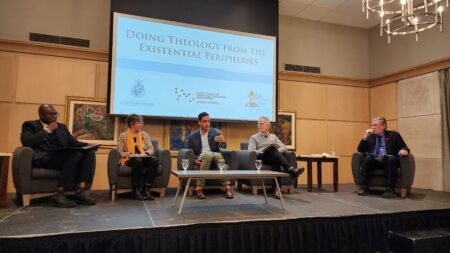
Taking part in the discussion at St. Michael’s were two members of the North American research team: panel lead and St. Michael’s alumnus Fr. Stan Chu Ilo, of Chicago’s De Paul University, and Dr. Darren Dias, OP, a member of St. Michael’s Faculty of Theology and the executive director of the Toronto School of Theology.
Two of the dozens of participants interviewed for the project also sat on the event panel, sharing their experiences: Mary Ellen Chown, a member of the Canadian Network for Women’s Equality (CNWE), and Carl O’Byrne, a coordinator of All Inclusive Ministries
The project began as a response to COVID, seeking input from parishes on the impact the pandemic was having, but Fr. Ilo noted that it was a conversation that couldn’t be had without noting the walls that exist in the church, including those related to gender, sexuality, and socioeconomic stature, and thus the project became a study in creating a depolarizing space, a way to address questions such as racism in the church.
Quoting a participant who was interviewed in Mexico, he said, “The church should never give up on anyone,” adding, “we must embrace the culture of encounter in order to break the walls that are rising in the world today. …Who are those who are not at the table?”
Dias explained the methodology used by the reseach team to the crowd, noting that each of the six teams was to identify the particular ways in which people were marginalized in their part of the world. For the North American team, discussions included meetings with Indigenous people, those in holding centres on the US-Mexico border, people in prisons, member of LGBTQI2S communities, the poor, women excluded from church office, and refugees and migrants, were an exercise in listening to help theologians learn “how we draw people out of their imposed invisibility.”
“What are the questions that arise?” he asked, noting that rather than being akin to “an echo chamber” the process was to hear from those who often don’t have a voice, thus helping to move the church closer to the task of theology, which is to help name grace. Part of the responsibility of a Catholic university, he added, is to listen, including to opposing views, as it is through listening that key insights can be gained in order to shape a theological agenda that is relevant to people’s experience.
Chown referenced the work of the late Dr. Margaret Ellen Leonard, CSJ, USMC professor emerita and co-founder of CNWE, who considered the experiences of women in the Catholic church as a source for doing theology. Chown also spoke to the ways in which the exclusion of women from ministry and leadership in the Church impoverishes the whole church. She said that the members of the CNWE focus group find hope in continuing to advocate for church reform. Through this project, and the Vatican synodal process, they hear Wisdom calling Catholics to a radically new way of ‘being church.’
Quoting Dr. Leonard, she said, “The reality of our lives is fertile ground for theology.”
Speaking of the value of respect, compassion and sensitivity, O’Byrne said that while members of the LGBTQ community would “like to think we are not on the periphery” many see themselves as outliers, even though “we’re here, and we’re going to stay.”
The North American report has now been received by the Vatican. Fr. Ilo noted that when people involved with the project met with him, Pope Francis’s message was simple but direct: “Keep moving forward. All will be well.”
- Final reports from the peripheries project are available online: https://migrants-refugees.va/resource-center/publications.
- The panel discussion is available on YouTube: https://youtu.be/yRA7WeoBv2M
The University of St. Michael’s College is planning for related events in the coming months. Please check our website, stmikes.utoronto.ca, for information about future events.

The University of St. Michael’s College will host a key event in Pope Francis’s Synod on Synodality process with the findings from a North American report commissioned by the Vatican as part of the Doing Theology from the Existential Peripheries project to be presented during a panel discussion on campus.
The panel, moderated by Dr. Mark McGowan, will take place Thursday, November 10 from 7-9 p.m. and will also be made available online.
Dr. Darren Dias, OP, an Associate Professor in St. Michael’s Faculty of Theology who also serves as Executive Director of the Toronto School of Theology, was appointed last December by Rome’s Dicastery on Human Integral Development to join the project’s North American working group, with similar exercises conducted around the world. The eight theologians conducting the research listening to the concerns of those on the margins were led by Stan Chu Ilo, a St. Michael’s alumnus who is a professor of World Christianity, Ecclesiology, and African Studies at Chicago’s De Paul University.
“We have presented our findings in the context of a conversation,” says Dias, who explains that there is an ongoing commitment on the part of the working group–and Pope Francis–to listen to the experience of people, and especially to those who often find themselves without a voice. Each of the six working groups around the world is invited to hold some sort of event to share their initial findings as part of an ongoing conversation/listening process to ensure that the findings are known to the general public.
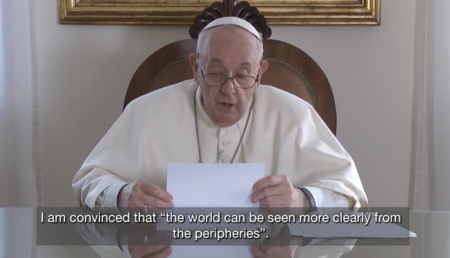
The groups were assigned themes from Pope Francis’s teachings such as migration, ecology, and vulnerability. As the North American report explains, “we take readers into the world of so many people whose voices are not often heard in our churches and society,” with members of the working group visiting prisons, refugee and immigration centres, national borders, convents, holding centres, seniors’ residence, rehabilitation centres, churches and social and pastoral centres, to name a few.
“We are committed to bolstering ways in which theology can support engaging the peripheries,” Dias says. “This is a research project, an academic exercise, and we will report our findings to the bishops, theologians, pastoral workers, and the faithful in service to the Church. This is the business of a Catholic university, to be at the margins. We are committed to bolstering a theology that supports the theological renewal proposed by Pope Francis.”
Pope Francis launched the synodal process in 2021 to help the Church to listen to its constituents and learn from them. The pope has since extended the window during which the synodal process takes place until 2024.
Earlier this year the University of St. Michael’s College Synodal Working Group held seven listening circles for students, staff, and faculty, and conducted 25 one-one-one interviews before submitting a report to Rome on the findings. University President David Sylvester presented a brief summary on the methods used at St. Michael’s to Nathalie Becquart, XMCJ, undersecretary and consultor to the Synod at meetings in Rome in June.
Final reports from the peripheries project are available online: https://migrants-refugees.va/resource-center/publications.
Watch the video for additional context: Wisdom from the Margins
RSVP to attend in person: https://bit.ly/3CIOLEt
RSVP to participate online: https://bit.ly/3yUKKvw
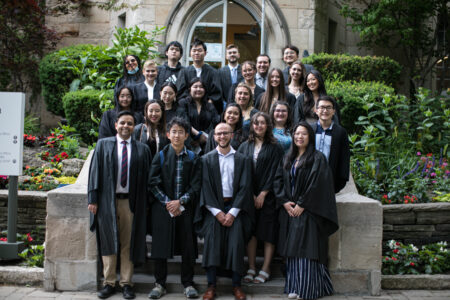
Summer has brought welcome changes to the University of St. Michael’s College campus. As the flowers bloom, and we prepare for the school year, we are taking time to look back on June and July, and share some of our wins, successes and achievements of the season.
Convocation — We celebrated the Class of 2022 and welcomed this year’s graduates into the St. Mike’s alumni community at our Graduate & Family BBQ hosted by St. Mike’s Alumni Affairs. Elmsley Place provided a beautiful setting to celebrate graduates’ achievements, open Convocation gifts, and enjoy a delicious lunch.
Mentorship program — We are proud to announce that the mentorship program has more than 135 first-year mentees matched with upper-year mentors, with more students signing up daily!
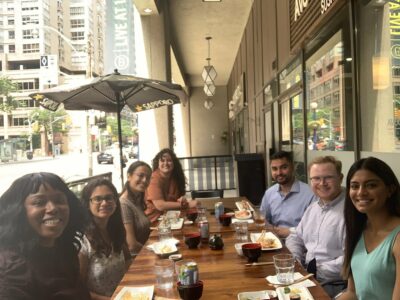
New Hires — We welcomed a number of new hires, who continue to serve and help enrich our students, faculty, and community. Some new hires gathered on July 22 to connect with each other and build new relationships. From left to right: Tamarah Bryan, Erica Figueiredo, Sumeeta Farrukh, Karina Stellato, Nabil Arif, Kevin O’Rourke McColl, Jashan Khokhar.
Dr. Nicholas Terpstra took up the position of St. Michael’s Interim Principal on July 1. Terpstra, whose research examines the intersection of politics, religion, gender, and charity in Renaissance Italy, has taught at the University of Toronto since 1998. His current research is focused on two main areas: a digital mapping project based around Renaissance Florence, and a study of of how different social, cultural, and religious groups used spatial and sensory boundaries to navigate their relations with each other in 16th-century Tuscany.
Regis-St. Michael’s Faculty of Theology welcomed its new Dean: Dr. Jaroslav Skira, who hosted an open house gathering at Regis on July 13 which was well attended.
Regis College also welcomed its new President, Gordon Rixon, SJ.
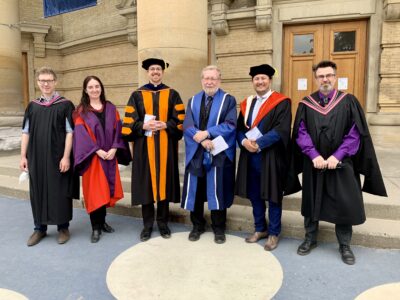
New Journeys — We bid Dr. John McLaughlin goodbye as former Dean of the Faculty of Theology. He will continue to serve as a Professor of Old Testament /Hebrew Bible at the Faculty of Theology. We are also celebrating the goodbye (for now) of Mark McGowan, the former Interim Principal at the University of St. Michael’s College from 2020-2022. He is going on sabbatical for research in Ireland. After that, he will continue to serve as Senior Advisor to the President, on Catholic Education, and will return to Celtic Studies and the History Department following his leave.
Renovations — We had some window cleaning at Founders House, which allows our staff to continue to see our Oasis in the City all around us. The Wellness Centre renovation in Elmsley Hall is moving wonderfully and is scheduled to be completed before Labour Day weekend.
Retirement — We celebrated the retirement of Jean Talman, Program Assistant for the Celtic Studies program, with 32 years of service at the University. Sláinte!
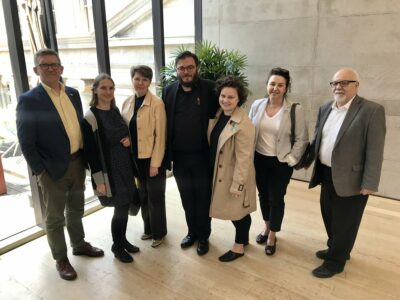
Ukrainian Visitors — MASI is proud to #standwithukraine. On June 29, the Metropolitan Andrey Sheptytsky Institute of Eastern Christian Studies (MASI) had a planning session to prepare for the hundreds of Ukrainian students expected to arrive from Ukraine at the University of Toronto this fall, thinking about how we can support them at the University of St. Michael’s College.

Welcome Day — On June 11, St. Mike’s opened its doors for an in person for Welcome Day, an opportunity for incoming students and their parents to learn about the university experience and critical first steps as they begin their university journey. Hybrid academic info sessions hosted by the Registrar and Student Services staff, campus tours, booths for student resources at St. Mike’s, and lunch in the Canada Room were some of the activities available to our newest students.
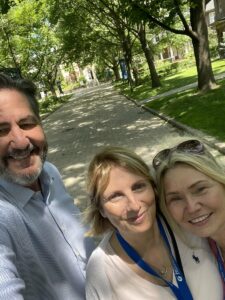
Summer has brought us beautiful weather and gorgeous flowers and trees — and Summer Camp. We currently have educators and students from Rome–seen here with President Sylvester are Alina Axinte and Celestine Cavalcante from The Parioli English School– on campus this summer for the Sol language Camp.
We hope that each of you can visit to see our campus in person, which gets more beautiful every year. There’s a reason St. Mike’s is known as the #Oasisinthecity!
Erica Figueiredo is the Recruitment and Enrollment Officer at the Faculty of Theology. Prior to this role, she completed her Master of Divinity degree at Regis College and served as a Director of Campus Ministry for seven years. She has been married to her best friend Carl for over four years.
I was 22 years old, sitting in my cubicle at the first job I landed after graduating from university. On my computer screen, I found myself oscillating between two tabs: one, an Excel spreadsheet compiling something about reinsurance companies (companies that insure insurance companies, I learned) and the other an application form for a Master of Divinity degree program. I recall the motivations I had to proceed with each tab. On the one hand, I could remain here and continue what likely could have been a quickly rising, lucrative career in the financial district. Conversely, the prospect of studying theology and entering ministry was something that had not even registered as a possibility until recently.
My mind raced back to the surprising turn of events during the last two years of my undergraduate degree. After a profound experience at a retreat, I finally felt convinced that instead of waiting for someone else to form a Catholic club at my university, the person whom God was calling to do that was me. From there, an unforgettable journey ensued. Once I plucked up the courage to start this club (which only two other students had agreed to support thus far) God led me past the realms of what I thought possible. Within a year I was the inaugural president and co-founder of a vibrant Catholic community. Students from all fields of study came to the meetings with an eagerness to know their faith more deeply. For my part, I couldn’t be anything but honest about the doubts I had also had as a cradle Catholic. But the philosophy student in me sought to tackle these doubts head-on and in a Lewisian style, embark on a journey to conclude if Christianity was true or completely false, in which case I should abandon it entirely. In His own beautiful time, God revealed to me that the former was undeniably true and the quest for truth, beauty and goodness could be found within my Catholic faith instead of looking elsewhere. As I graduated from university and fondly recalled my latter two years of journeying with this group, I also recalled a priest I met telling me that this club could over time develop into a formal campus ministry. Upon graduation, I pushed this thought to the back of my mind and preoccupied myself with finding a ‘normal’ job.
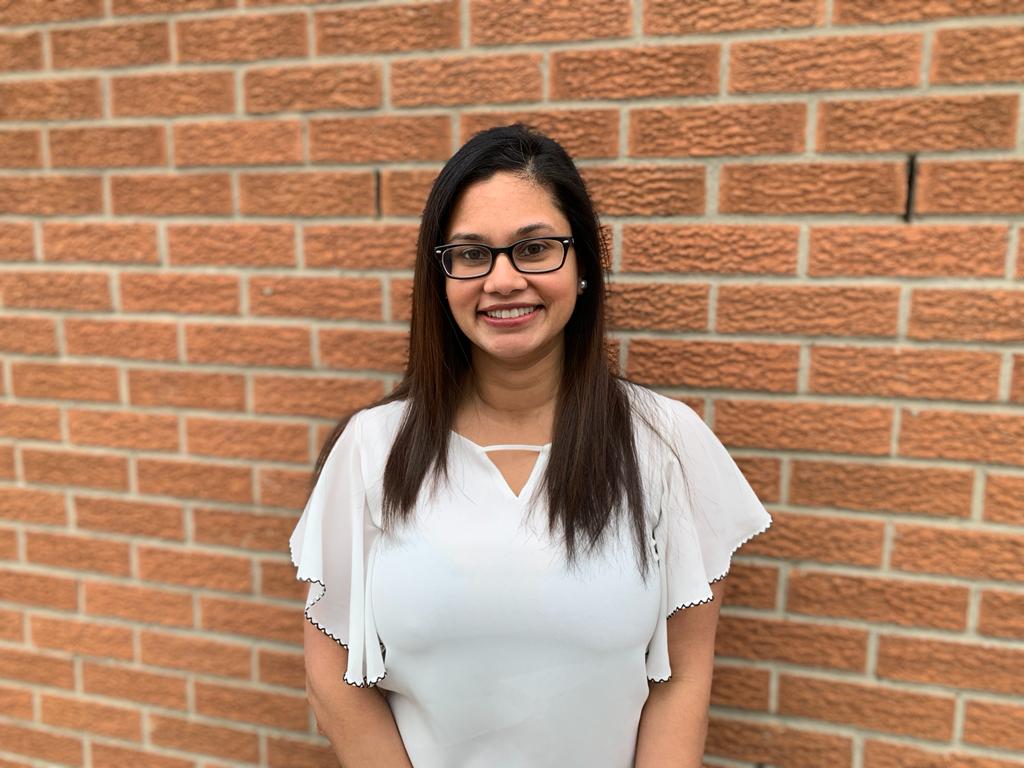
Close your eyes and think about a moment in your life when you had the most joy.
Erica Figueiredo, is featured smiling in a picture above, wearing a white top and glasses, standing against a brick wall.
For me, the reasons were two-fold. The theology degree was where God had been leading me to finally figure out the “why” behind the “what” of Catholic teachings. Furthermore, a theology degree would, in turn, serve to professionally prepare me for a future career in ministry. When I sat in the cubicle of the insurance company thinking about what I wanted to do with the rest of my life I took a piece of advice I heard at a Catholic talk: Close your eyes and think about a moment in your life when you had the most joy. The answer for me was simple–I felt most alive when I was ministering to university students and meeting them in their spiritual joys and doubts. Thus, though I had no idea how to even go about translating this joy into a career, I left my full-time job and began my MDiv studies full-time in the upcoming Fall. Lo and behold, before I could complete my thesis, I was hired as the first Director of Campus Ministry at the exact university where I had founded the Catholic club.
You now know a little about my journey and what led me to study theology. In serving as the Recruitment and Enrollment Officer at the Faculty of Theology, I hope to be able to help you think about your potential or ongoing journey with theology!
Read other InsightOut posts.
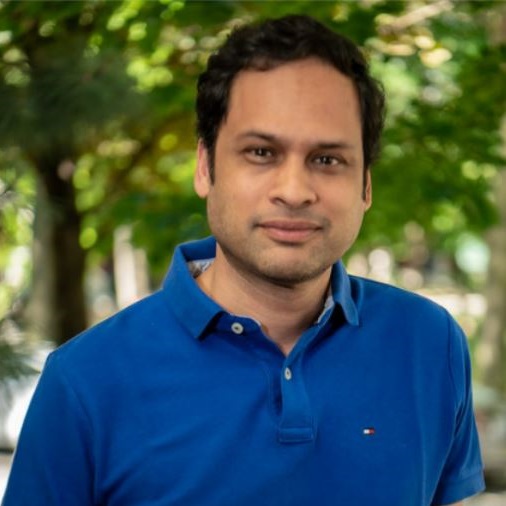
Faculty of Theology professor Dr. Darren Dias, OP has been awarded a grant from the Templeton Religion Trust in conjunction with Profs. Stephan van Erp, Inigo Bocken, and William Desmond of KU Leuven to work on a multi-year project entitled Metaphysics, Contemplation and the Religious Life.
The project, which will see the University of St. Michael’s College and Leuven each host a conference, includes the appointment of Dr. Jacob Benjamins to a post-doctoral position at St. Michael’s to teach and work on conference planning. The project’s work, which falls under the grant’s Widening Horizons in Philosophical Theology initiative, will run from 2022 to 2024.
The project, explains Dias, will explore the tension between metaphysics and theology using methods familiar to continental philosophy—an approach rooted in the thought of 19th- and 20th-century Western Europe—to examine the contemplative practices of the philosophical and theological schools of religious orders and congregations. The project will see scholars working in phenomenology and metaphysics, as well as systematic, mystical, and historical theology, calling on contemplative practices from within the religious schools as a way to support new, practical forms of thought in the twenty-first century.
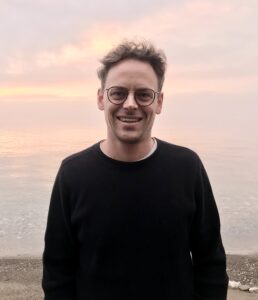
Whereas the past century has seen a rise in a perceived disconnect between metaphysics and theology, this joint project aims to demonstrate that there exists a “metaphysics of contemplation,” which is based not in an abstract approach but grounded in historical, communal, and performative ways of encountering reality as a whole, he says.
There are broad practical applications to the project, notes Benjamins.
“We would like to demonstrate that religious orders have the resources available to enrich spiritual traditions in modern life,” he says.
The first seminar will take place at Leuven December 1 to 4, 2022, hosted by the university’s Interfaculty Centre for Catholic Thought, with a second conference at St. Michael’s March 22 to 24, 2023.
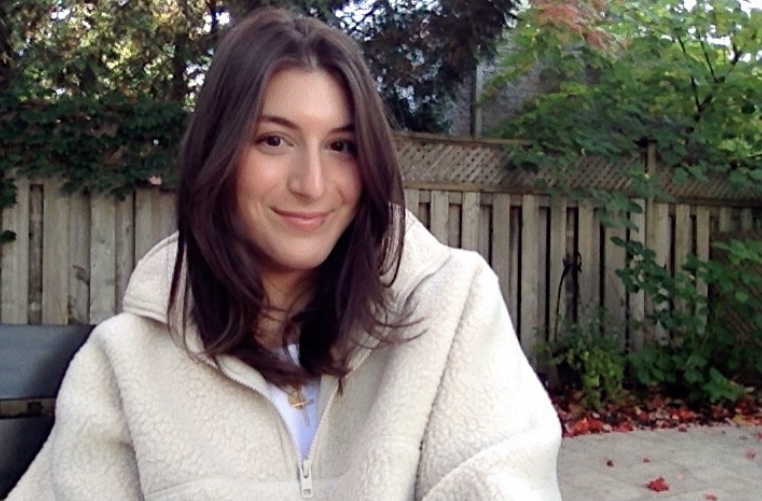
For doctoral candidate Mia Theocharis, an unexpected phone call from St. Michael’s President David Sylvester brought with it the opportunity of a lifetime: an invitation to meet virtually with Pope Francis.
Theocharis has been selected to take part in a virtual meeting with the Pope on February 24. The event, entitled Building Bridges North-South: A Synodal Encounter Between Pope Francis and University Students, is being hosted by Loyola University Chicago in collaboration with the Pontifical Institute for South America as part of the Pope’s Synod on Synodality, a process of consulting Church members around the world to gather their thoughts on the issues of the day.
With an emphasis on creating concrete educational projects to effect just environmental and economic change, the February 24 meeting will focus on issues relating to migration.
Panels of 20 or so students from each of seven regions in North, Central, and South America have been meeting online in advance of the virtual gathering to develop ideas on how to respond to migration challenges, reflecting on the various causes behind and how the Church should respond. Theocharis is one of the three Canadian students in her group, which represents eastern Canada and the eastern United States.
Each panel will have a spokesperson appointed to offer a brief summary of their group’s thoughts at the February 24. These presentations will be followed by a dialogue with Pope Francis.
“While it would be an honour to be the one to present our findings, honestly the biggest honour is to be part of this process,” Theocharis says, describing the drive for concrete ideas and the diversity of panelists she has met in her panel as extremely impressive.
“There are people with backgrounds in economics, environmental sustainability and theology; undergraduates and graduate students. It’s exciting to meet everyone involved, especially those from underrepresented groups, and to hear everyone’s viewpoint.”
The event will be livestreamed on February 24 at 1 p.m. EST.
Mary E. Hess is Professor of Educational Leadership at Luther Seminary in St. Paul, MN. During the 2016-2017 academic year she held the Patrick and Barbara Keenan Visiting Chair in Religious Education at the University of St. Michael’s College, in the University of Toronto. Her most recent book, co-authored with Stephen S. Brookfield, is Becoming a White Antiracist: A Practical Guide for Educators, Leaders, and Activists (Stylus Publications, 2021).
Living into the Light
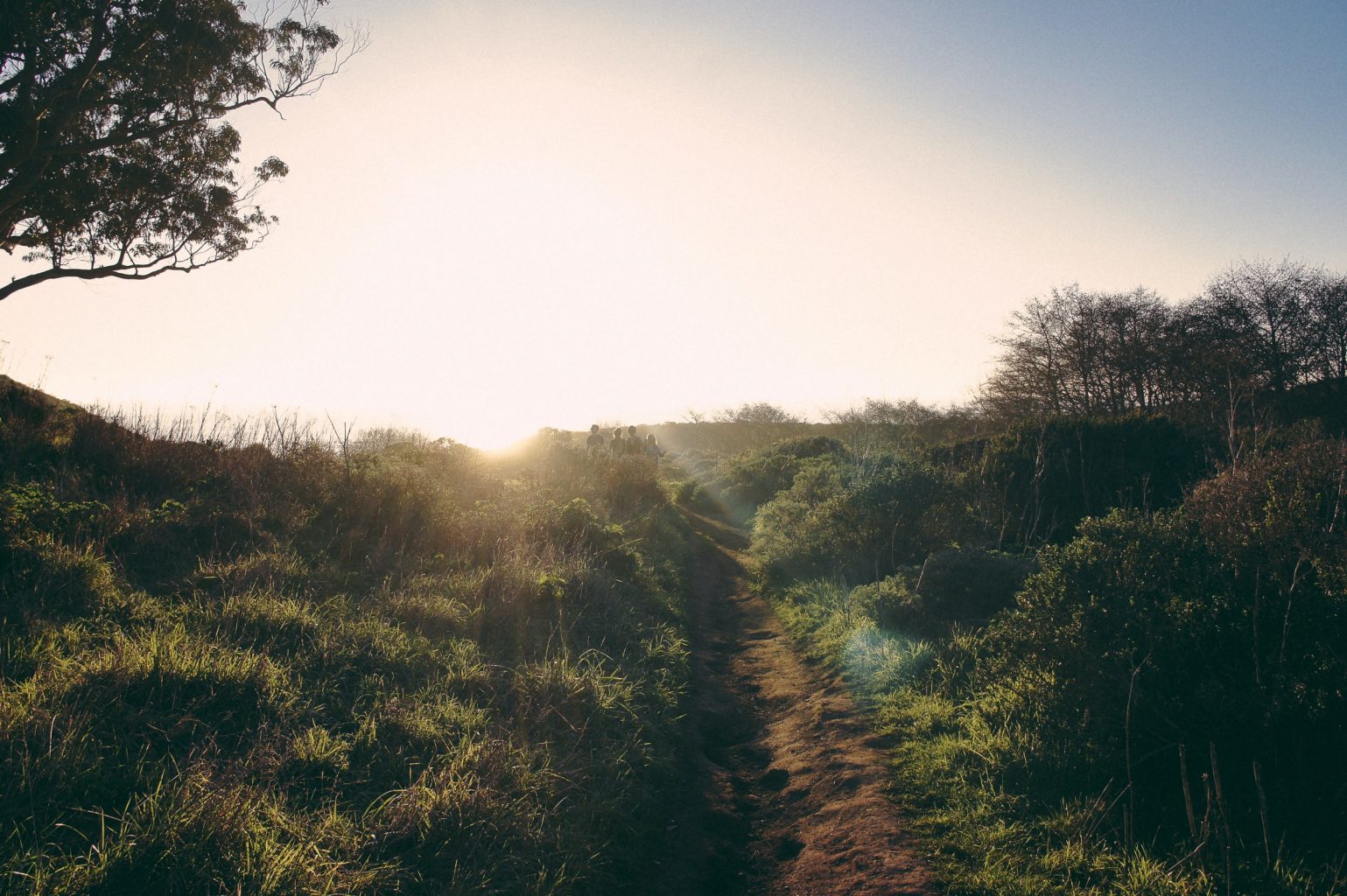
I’ve lived in St. Paul, Minnesota for more than two decades. St. Paul is a deeply Catholic city, and I live in a parochial space that has a vibrant K12 school, as well as many, many Catholic organizations which have long been active.
The last five years, however, have been a time of great urgency and anguish, as those of us who are white and middle class have finally begun to listen deeply to our neighbors who do not resemble us. The world joined us in that listening in May of 2020, when a video recording of George Floyd being murdered in the city next door to us, by a Minneapolis police officer, was shared around the globe.
That new awareness brought along with it a deep recognition of how blindly we—and here I mean to speak only of my white and middle-class neighbors—how blindly we accepted the dominant stories of a zero-sum world in which racism was only a personal attitude, and justice meant being “color blind.” I share that now, to offer context for the rest of what I want to say here.
Pope Francis wrote in Laudato ‘Si that a key conviction of our faith is that we have: “an awareness that each creature reflects something of God and has a message to convey to us, and the security that Christ has taken unto himself this material world and now, risen, is intimately present to each being, surrounding it with his affection and penetrating it with his light (221)”.
What can it mean to live into that awareness and that light—in all the rich meanings of those words? And how might persons who look white, and thus benefit from racialization, participate deeply in the kind of communion to which our faith witnesses?
I have come to believe that doing so requires being actively involved with learning how to dismantle racism, learning what it means to inhabit an anti-racist stance in the world. I don’t think this is a place I can ever fully come to, a stance that I ever fully achieve, but rather it is something into which I am always growing, always seeking, always yearning towards, always becoming.
Much of the learning I have done in the past decades in this journey has to do with recognizing a few key insights.
First, whether I want to or not, whether I understand this or not, whether I choose to draw on it or not, I live within a world defined by white privilege. That doesn’t mean that various other aspects of who I am might not be challenged or oppressed, but it means that my whiteness prevents me from seeing, from experiencing, much of what my neighbors who do not resemble me, live with in daily ways. Rather than seeking to deny that I participate in racism, I need to stop, take a deep breath, and learn what that means. A really good book that spells this out is Heather McGhee’s Sum of Us: What Racism Costs Everyone and How We Can Prosper Together. While her book was written in the US context, I believe it has resonance for the broader North American continent.
Second, doing this work never ends, and I have grown to understand that as a white person, I have two choices: I can do it imperfectly, or not at all. And so I choose to try, and to realize that I will often fall down, mess up, make mistakes, and need to start again. Here is where my faith is a crucial resource, because I have learned what it means to repent, to seek forgiveness, to accept God’s grace, and to take the next step. There is much to lament about how the Catholic hierarchy has engaged with racism, but there is also much to draw upon—and here the many documents, sermons, hymns, and catechetical resources offer us so much! I start with the work of theologians Fr. Bryan Massengale and Dr. Shawn Copeland, but many dioceses have also put together excellent materials.
Third, this is collective, systemic work. It is never only personal and individual. Here again, my faith sustains me because it invites me to see all of the many ways in which human brokenness—human sin—puts stumbling blocks in my path. Yet it also invites me to see all of the ways in which God has created us in deep interdependence. We are created for each other; we are drawn into relationship. When one hurts, we all hurt. We need to be open to seeing and hearing and feeling that hurt. There is deep wisdom in our tradition, wisdom forged through centuries of pain and anguish, wisdom that invites us into lament, and from lament into remembering whose we are, to whom we belong. We are a communal people, and “re-membering”—putting back together the Body of Christ —that communion means that we can look to collective action, to practices that challenge systemic and structural forms of racism. Humans have created racism, and humans can deconstruct it and live into God’s light.
Fourth, breath matters. I often remind my students that we can live for many days without food, and even a day or two without water, but we cannot live for even 10 minutes without breath. In an era in which “I can’t breathe” resonates not only due to police brutality, but also through a COVID-19 pandemic, and in the midst of climate catastrophe, remembering to breathe, to slow down, to feel God’s love in our lives in the midst of trauma – that is an essential practice. It is also an ancient form of contemplative prayer. Whenever I feel particularly anxious or defensive or even despairing, I stop, I slow down my breath, and I pray this short prayer based on one verse from Psalm 46: “Be still and know that I am God (inhale/exhale slowly), Be still and know that I am (inhale/exhale slowly), Be still and know (inhale/exhale slowly), Be still (inhale/exhale slowly), Be.”
Fifth, and finally (at least for this moment), learning to be anti-racist as a person who looks white means leaning into relationships of accountability. To whom am I looking for leadership? Am I hearing the voices of communities which have been oppressed? One of the glimpses of hope I draw, as a US person, from the Canadian context, is that acknowledging the painful history of residential schools can open up new avenues of relationship and hope. Here in Minnesota we have a Lieutenant Governor who is a member of the White Earth Band of Ojibwe, and she is leading us in the hard work of truth and reconciliation. I draw comfort from the years long work of Canada’s TRC, and I try to live in a posture of learning and humility. I have been startled by how energizing and hope-filled that work can be, even in the midst of the deep pain and anguish to which I need to be present.
I return, now, to the reminder from Pope Francis with which I began, that a key conviction of our faith is: “an awareness that each creature reflects something of God and has a message to convey to us, and the security that Christ has taken unto himself this material world and now, risen, is intimately present to each being, surrounding it with his affection and penetrating it with his light (221)”.
May Christ’s light continue to illumine our anguish, and draw us ever more deeply into God’s love.
Read other InsightOut posts.
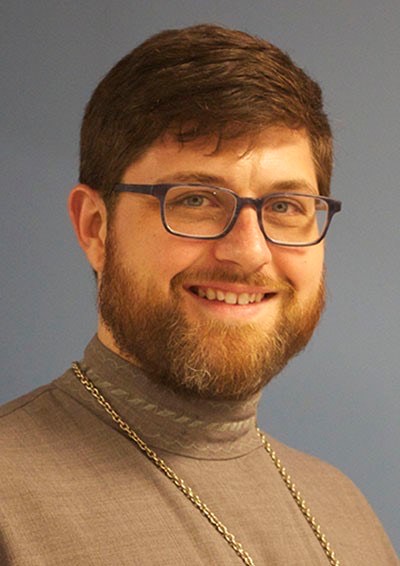
Father Andrew Summerson has joined St. Michael’s Faculty of Theology as Assistant Professor of Greek Patristics. Describing his work in Patristics as a vocation, Summerson says that, as a Byzantine Catholic priest and a scholar of the tradition, his goal is “to be a responsible interpreter for its members and for the scholarly and ecumenical community of theologians. As Eastern Catholics, our theological grammar is that of the Fathers. In order to be properly fluent in my own tradition, I went about learning their language.”
Summerson holds an S.Th.D. in Patristic Theology from the Pontifical Patristic Institute “Augustinianum” in Rome. His book, Divine Scripture and Human Emotion in Maximus the Confessor: Exegesis of the Human Heart, was published by Brill earlier this year.
His most recent teaching appointment was at Calumet College of St. Joseph, in Indiana.
“Andrew’s passion for, and dedication to, Patristics will serve our students well. We have pleased to have such a strong addition to the Faculty” says Interim Dean John L. McLaughlin.
“The University of St. Michael’s College has a proud history in its concern for historical studies while engaging the contemporary world,” says Summerson. I see my own work for St. Michael’s with the Metropolitan Andrey Sheptytsky Insititute of Eastern Christian Studies as aligned with St. Michael’s heritage: engaging the touchstones of the Eastern Christian past for the life of the world we live in today.”
In the fall semester, Summerson will teach History of Christianity I and Foundations to Eastern Ethics, while in the winter semester he will teach Contemporary Issues in Eastern Christian Moral Theology and The Three-Personed God: Eastern Christian Perspectives.
Early Christian texts aren’t meant to be sipped like wine; they must be chugged like beer,” he says. “I like to read primary sources with my students and treat them not like delicate artifacts, but living voices that speak true statements about God and the Church today.”
Summerson’s position is a Contractually Limited Term Appointment. The position, which is renewable twice to a maximum of three years, is held in conjunction with the Metropolitan Andrey Sheptytsky Institute of Eastern Christian Studies.
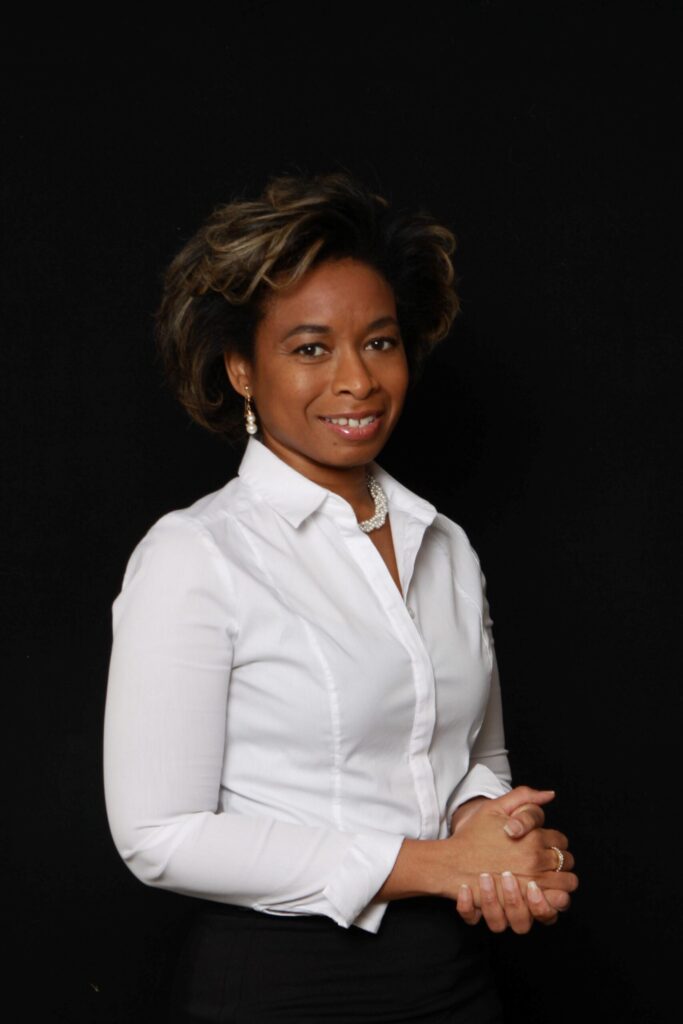
Theology students have the opportunity to enrol in an exciting new Faculty class: Black Lives Matter in the Classroom. The course, originally scheduled for last winter, was moved to the intersession, making it more accessible for our Master of Religious Education students, although this will be an offer of interest to students in various degrees across the Toronto School of Theology.
Black Lives Matter in the Classroom is a Basic Degree-level course to be taught by Dr. Marie Green. It will address how educators can become better aware of—and better able to respond to—systemic injustices facing Black students at school.
Many who see the course title Black Lives Matter in the Classroom may think of it as a unit coming out of OISE, but Dr. Green sees a strong theological underpinning to her course, and an equally strong justification for teaching it at a faculty of theology.
“In the eyes of God Black lives matter. We are all created in the image and likeness of God. The Black Lives Matter movement is, at its core, a human rights movement so it is absolutely possible—and necessary—to view this course through a theological lens.
“In this course we will challenge beliefs, assumptions, approaches, and biases,” says Dr. Green, who was awarded the Faculty’s 2020 Governor General’s Award. “Everyone has biases, and students will reflect on their impact on the classroom, and hopefully become motivated to be agents of change.”
Along with the usual readings and lectures, Green says classes will also feature guest speakers who can offer up tangible examples of equity and inclusive education. She says these examples will be particularly beneficial to those who do not have a lived experience of racism, or an understanding of the intergenerational harm of the legacy of slavery and other racist historical realities.
“We know that there’s a legacy of racism in Canada, and to deny that is to ignore the impact of residential schools, segregated schools, and more recently, streaming practices in public schools.”
The legacy, Green points out, manifests itself in many ways. Black students continue to be underrepresented in post-secondary institutions, for example, while also experiencing a significantly higher rate of suspensions in high school. At the same time, many Black high school students find themselves discouraged by teachers and administrators from pursuing more academic streams, limiting their future opportunities.
“We have seen violence against Black bodies so overtly displayed on our streets in recent times,” Green says, “but there is a different kind of violence taking place in our schools and classrooms. It is the violence of low expectations, lack of validation, and lack of cultural affirmation. This course will equip educators and other practitioners with resources to help them apply the critical theory perspective needed to support Black student success.”
With a topic so clearly in the public eye following a year of protests, Dr. Green expects difficult but constructive conversations where everyone has something to contribute and something to learn. “One of the benefits of teaching online,” she says, “is the ability to use Zoom breakout rooms, allowing students to have meaningful and engaging discussions, with the instructor able to visit all groups.
“I want to share tangible tools that all participants can use to address topics of equity and justice,” she says, “which is absolutely critical for student success.”
SMP3416: Black Lives Matter in the Classroom will run Tuesdays and Thursdays from 18:00–21:00, beginning July 13 and ending August 5.
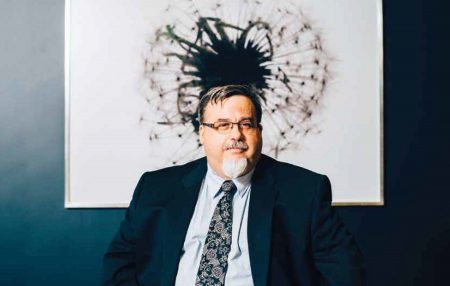
Dr. James Ginther, former Dean of the Faculty of Theology, has been appointed Associate Director of the Centre for Medieval Studies (CMS) at the University of Toronto, effective July 1, 2021. A mediaeval historian and professor of Church history, Dr. Ginther will continue to teach at St. Michael’s during his three-year appointment to the Centre.
“This appointment speaks to the close ties we have both to CMS and to the Pontifical Institute of Mediaeval Studies (PIMS),” says St. Michael’s President Dr. David Sylvester. “Jim, who is also an Associate Fellow at PIMS, will be a valuable asset to the Centre.”
Noting that Dr. Ginther will take over the role from St. Michael’s professor Dr. Alexander Andrée, Dr. John Magee, the Centre’s Director, says he is “very grateful for his willingness to take this on, and for USMC’s and the Faculty of Theology’s cooperation in making it possible. Jim brings excellent administrative experience to the position and, perhaps most importantly, will form an important part of the connective tissue between the Centre for Medieval Studies, St. Michael’s College, and the Pontifical Institute of Mediaeval Studies.”
Dr. Ginther describes his responsibilities at CMS as primarily student focused.
“I will be overseeing recruitment and admissions of new MA and PhD students and will serve as the faculty advisor to all MA students. I’ll also be responsible for developing funding packages, including assigning teaching assistant and research assistant positions to incoming and returning students.
“This is what excites me about the position: supporting students so that they can excel in the program, and providing opportunities for professional development where the Centre can.”
Dr. Ginther, who earned his doctorate at CMS, was named Dean of the Faculty of Theology in July 2015. His research is primarily focused on 12th- and 13th-century European theology. He is currently leading a SSHRC-funded project that will produce an edition of Stephen Langton’s lectures on Genesis. He teaches courses in medieval church history, Anselm of Canterbury, the medieval theology of creation, and methods in historical theology.
For the past 20 years Dr. Ginther has also worked in digital humanities, collaborating on several large projects, including the digital tool T-PEN (Transcription for Paleographical and Editorial Notation, www.t-pen.org). While at CMS, he will also work on enhancing its existing programs in digital humanities. One possibility, he notes, would be finding ways to connect the Global Classroom project at St. Michael’s with the mediaevalists who teach in the digital humanities minor.
In 2020, St. Michael’s signed a five-year memorandum of understanding with the University of Toronto and the Pontifical Institute of Mediaeval Studies to focus on new possibilities for cooperation and partnerships for CMS, PIMS and St. Michael’s via research, teaching, and publication. While each party remains distinct, the agreement suggests possibilities such as joint academic seminars or colloquia, as well as less formal scholarly collaboration. It also notes that the PIMS library collection will continue to be housed in the John M. Kelly Library.
“I am pleased that Jim has this exciting opportunity to continue using the leadership skills he displayed during his term as Dean of the Faculty of Theology,” says Interim Dean Dr. John L. McLaughlin. “I know that CMS will benefit greatly from his service as Associate Director during this partial secondment, and I look forward to an enhanced relationship between CMS and the Faculty of Theology.”
Christine Way Skinner has been a lay minister for thirty years, a mom for almost that long and a partner to Michael for longer. She is the author of books for both adults and children and, for the next few years, will be a St. Mike’s doctoral student.
A Fork in the Road

What do you do when you are in the middle of a pandemic, you are a few years from retirement and your parish ministry job of twenty-two years is eliminated? Well, let a few tears fall. You rage a little bit. Then you sign up to do a doctorate in theology. Perhaps it might not be what everyone does…but it is what I did.
St. Ignatius of Loyola has been my lifelong guide to discernment. Do you feel a sense of consolation in your decision? It is from God. A sense of desolation? Look for another direction. I had begun a doctorate many years ago, before I had children and before I began parish ministry. The immediacy of mothering and ministry always took precedence over writing and so, after a decade, I withdrew from the program. I was grateful for the education I had received while in that doctoral program and used it extensively in parish ministry. It allowed me to provide adult religious education that nourished the faith of parishioners who wanted to think deeply and broadly about their faith. It supported me in developing religious education programs for children that were not only engaging but sophisticated. The time spend studying at that level had not been wasted.
The longing to learn, to think, to question, to explore, and to challenge my perspectives persistently coursed through my veins throughout the years. I fed it by attending academic conferences and reading voraciously. It seemed enough. For a time. But about 10 years ago, I found myself visiting university websites and began printing off application forms for various doctoral programs. A Doctorate in Ministry seemed the most appropriate as I couldn’t contemplate leaving parish ministry. A D.Min. would spare me the burden of choosing one over another. The printed forms always remained in my “inbox” – uncompleted – until another year passed and they would be recycled and replaced by new versions.
Then, in 2020, my life took a radical turn. I knew immediately the opportunity that was before me. As my youngest son filled out his applications for post-secondary education, I filled out my application for post-post-post secondary education. The bulk of my immediate mothering responsibilities behind me and the ever-expanding tasks of my beloved ministry suddenly part of my history, I was free to surrender to that persistent longing. And so, after many years, I actually filled out an application. I connected with professors from a lifetime ago and collected transcripts of courses that I barely remembered taking—and some that I had relied on daily. I spoke to new professors and thought deeply about which of the many possible directions my study might take. In February, just days after my 55th birthday, I was accepted into the PhD program at St. Michael’s College for the fall of 2021.
It has been a radically different experience contemplating doctoral studies at the age of 55 from the experience when I was 23. I approach it, paradoxically, with a great deal more humility and a great deal more confidence. When I was younger, I was painfully aware of how much I didn’t know. But I was afraid of my ignorance being exposed. This, I no longer fear. At 55, I remain conscious of how much I still do not know. Indeed, I am mindful that I will die having learned but the smallest fraction of what there is to know about the world. And, as student of theology, an even smaller fraction of what there is to understand about the Mystery of God. At 55, I also recognize that I have lived enough days to have gleaned a drop or two of wisdom and that it is my responsibility to contribute those drops in the vast ocean that is human thought. It excites me to know that this is the human condition. Each of us has something beautiful, wise and true to teach. Each of us has even more beautiful, wise and true things to learn.
It is liberating to begin studies at this age. I now know that not one of my papers will be the last word on any topic. I will be able to write them with a certain freedom from obsession because of that. I now know that we can only learn by admitting what we do not know. There is a freedom in that, too. I am privileged to have raised my children, bought my home and need very few material possessions. So, more freedom – to focus on study without the burden of working long hours to ensure a sustainable future (although I will certainly need to work some).
As a gift, I embrace this opportunity – denied, I recognize – to many but offered, surprisingly and grace-fully to me. I study, therefore, for the greater glory of God and for the service of God’s people. For this, I live in gratitude.
Read other InsightOut posts.
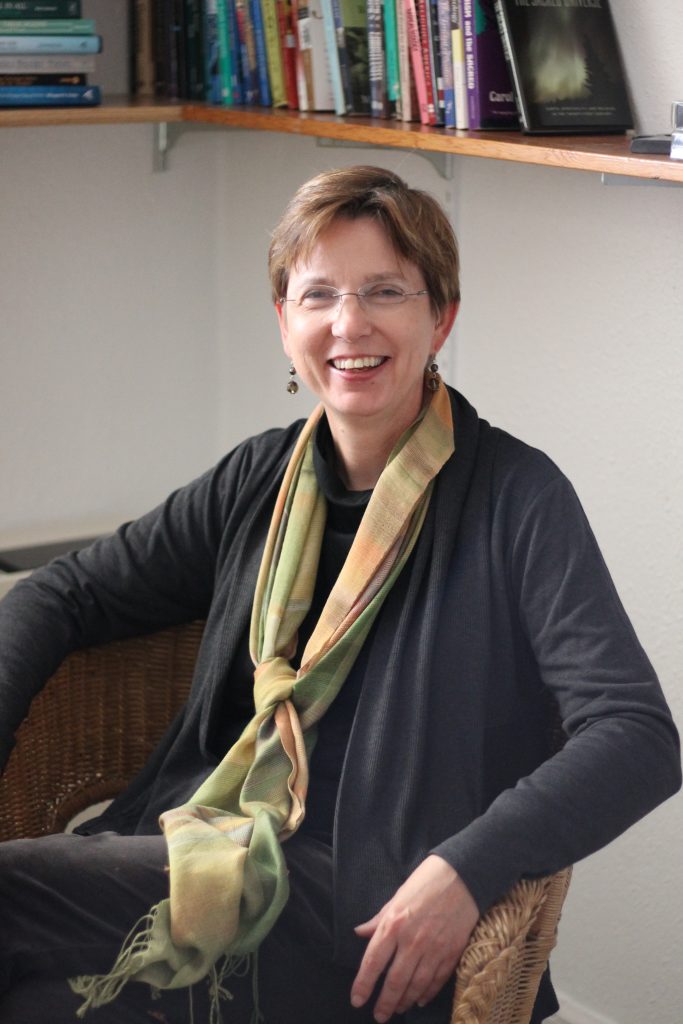
The new director of the Elliott Allen Institute for Theology and Ecology, Dr. Hilda Koster, sees the EAITE moving forward in the spirit of Laudato Si’, with particular attention to the needs and concerns of women, minorities and Indigenous communities.
The Institute, celebrating its 30th anniversary this year, was created by Fr. Stephen Dunn to address growing interest in the intersection between faith and the natural world.
“It is a great honour to be appointed Director of the Elliott Allen Institute, which has played such a prominent role in the development of ecological theology in Canada, especially by way of its sustained attention for the work of the visionary theologian Thomas Berry,” says Dr. Koster. “I am very grateful for the important work of the Institute’s founder Fr. Stephen Dunn, C.P., and his successor Dr. Dennis O’Hara. It is a privilege to carry their legacy forward.”
Strong leadership of the EAITE reflects the university’s core values expressed in St. Michael’s 180 strategic plan, says University President Dr. David Sylvester.
“We place great importance on our mandate to promote respectful dialogue on care for each other and for our common home. The work of the Institute helps to further St. Michael’s core values, and Dr. Koster will be an invaluable addition,” Dr. Sylvester says.
The Faculty of Theology is especially pleased to have found someone so well equipped to run a centre known around the world for its groundbreaking research and training, says Interim Dean Dr. John L. McLaughlin.
“Dr. Koster’s appointment as Director of the Elliot Allen Institute is good news not only for St. Michael’s but for anyone who cares about ecological theology as well as environmental and social justice,” Dr. McLaughlin says. “Since the EAITE was founded by Fr. Stephen Dunn in 1991 it has been shining a light on the kinds of issues Pope Francis addressed in his 2015 encyclical Laudato Si’: to recover our relationship with the natural world while also working for environmental justice.”
The need to examine ecological concerns in a theological light has never been greater, Dr. Koster says.
“Historically Christianity has not paid much attention to humanity’s relationship to the natural world but in light of climate change, overconsumption and species extinction this has become an essential area of theological reflection,” she says.
“Studying Theology and Ecology allows students to make connections between their faith traditions with knowledge of and appreciation for the more-than-human world. Yet ecotheology also will allow students to think deep and hard about the spiritual and moral challenges that result from our human caused destruction of precious ecosystems, and the suffering this is causing to vulnerable human communities.
“The Elliott Allen Institute therefore takes its lead from Pope Francis’ insight that ‘a true ecological approach always becomes a social approach; it must integrate questions of justice in debates on the environment, so as to hear both the cry of the earth and the cry of the poor (Laudato Si’, 49)’. We need educators, chaplains, social workers and scholars who have the competency to work with others to realize a more just and sustainable future for all, especially the poor.”
Born in the Netherlands, Dr. Koster received her Bachelor of Arts and Master of Divinity degrees from the University of Groningen. After further study at Princeton Theological Seminary and the Candler School of Theology at Emory University in Atlanta, she earned her doctorate at the University of Chicago. She joined St. Michael’s Faculty of Theology in July 2020, with teaching areas of ecotheology, feminist theology, and ethics. She assumes the directorship of the EAITE on July 1, 2021.
Describing the new Director as a “wonderful addition” to the Faculty, Rosemary Boissonneau, Dr. Koster’s research assistant, says Dr. Koster “challenges her students to look deeper and investigate theologically the conceptual frameworks and structures of domination underlying the socio-ecological crises of our times. I am confident that under her directorship, the Elliott Allen Institute for Theology and Ecology will be reinvigorated to continue its legacy as a vital centre of ecotheological learning and research.”
The EAITE is a collaborative teaching and research institute which offers a certificate of specialization in Theology and Ecology, as well as stand-alone Graduate Diploma in Theology and Ecology. Its interdisciplinary, collaborative nature brings a range of academic voices from the sciences and humanities into conversation on matters of the day.
The 10-course diploma is aimed at professionals and students who wish to integrate the study of environmental issues and theology in their professional careers, as well as for those who wish to study the theological and ethical dimension of environmental problems. It includes five foundational courses, one in-depth course, two ecology and theology-specifics courses, one experiential course, and one capstone course.
The newly revised certificate is open to anyone enrolled in any of the graduate programs at the Toronto School of Theology seeking to specialize in Theology and Ecology. Certificate requirements vary depending on the program being completed.
“The Elliott Allen Institute will continue to be a place for innovative theological education and scholarship, with attention to the voices of women, minorities and Indigenous communities,” says Dr. Koster.
For more information on the Elliott Allen Institute’s offerings, please contact Programs Coordinator Anthony De Feo or Dr. Koster directly.
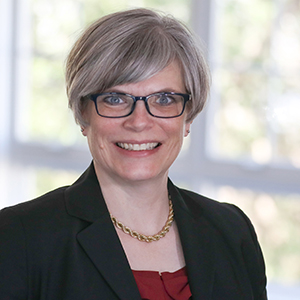
The University of St. Michael’s College is celebrating the appointment of Dr. Cynthia Cameron to the Patrick and Barbara Keenan Chair in Religious Education as a crucial step in renewing the vital relationship the University has with Catholic educators.
“The appointment of Dr. Cameron embodies St. Mike’s commitment to honour and build upon these historic partnerships in Catholic education through teaching and research, serving teachers and administrators not only here in Toronto but also across the province and, indeed, the country,” says University President Dr. David Sylvester.
Cameron, who has a special interest in the development of Catholic adolescents and the impact of ministry in schools, is currently an assistant professor of Religious Studies at Rivier University in New Hampshire. She will join St. Michael’s Faculty of Theology on July 1, 2021. She has also taught at Boston College, Loyola University New Orleans and Sacred Heart University in Connecticut.
“I am delighted to be joining St. Michael’s because it is an extraordinary opportunity to work in a world-class faculty and to think theologically about Catholic education with colleagues and students who are as passionate about it as I am,” says Cameron, who earned her doctorate in Theology and Education from Boston College. “It is also an honour to be the next Keenan Chair and to be a part of important conversations about Catholic religious education in Ontario.”
Cameron’s research focuses primarily on the intersection of Catholic theological anthropology and questions of age—and particularly in regard to adolescents. Her work responds to the question of how age affects the ways we think about what it means to be human.
The question is of particular importance to how ministry is carried out in the Church, and especially in school settings with adolescents, she says.
“My current project involves bringing one age and gender—female adolescence— into conversation with both theological anthropology and developmental psychology in order to think about the mission of all-girls’ Catholic high schools. In it, I suggest that the all-girls’ Catholic high school is a particular place where adolescent girls can fully flourish in a culture that often marginalizes and even damages them,” she says.
Cameron’s research and specialization will be of particular interest to the many Master of Religious Education (MRE) students studying at St. Michael’s who work at the high school level, says the Faculty’s Interim Dean, John L. McLaughlin.
“We are delighted to have Dr. Cameron join the Faculty,” McLaughlin says. “A key component of our institutional mission as a Faculty is to provide educators with a strong theological base to help their students take on life’s big questions. Dr. Cameron’s area of expertise will offer our MRE students invaluable insight and direction.”
Cameron will teach courses within the MRE program, including the Philosophy of Catholic Education, Faith Development Across the Lifespan, and Religious Education in Multifaith Contexts, as well as courses for the MTS and MDiv programs. She will also teach and supervise graduate students through the Graduate Centre in the Toronto School of Theology.
The Keenan Chair was established in 2002 thanks to the generosity of Patrick and Barbara Keenan , launching a major graduate teaching initiative in religious education in Canada’s largest English-speaking Catholic university. Each spring, the University also hosts the Patrick and Barbara Keenan Lecture.
St. Michael’s is a Roman Catholic Faculty of Theology in the Toronto School of Theology, an ecumenical federation of seven theological schools affiliated with the University of Toronto. The Faculty is committed to theological teaching and research that is interdisciplinary, ecumenical and sensitive to multi-faith and multicultural contexts. We seek to form students for service in Church and society through faithful and rigorous scholarship grounded in the Catholic intellectual tradition.
The author of our post for Bell Let’s Talk Day 2021, Therese Hassan completed both her undergraduate and graduate degrees at the University of St. Michael’s College. A recent graduate from the Master of Theological Studies program at the Faculty of Theology, she is particularly interested in Catholic philosophy of education, theology of ministry, and qualitative methods in religious studies. Therese is currently a Secondary School teacher with the Dufferin-Peel Catholic District School Board.
Talking About Fight Club to Stay Healthy

I recently assigned my students an adaptation of a “time audit” activity that Jay Shetty offers in his book Think Like a Monk. The premise of the exercise was that what we spend most of our time on essentially reflects what we value most. The idea was for my students to audit their time over five days to identify where most of their time was being spent. My students had to articulate what it is they truly value and whether or not the way they spent their time (especially amid a pandemic) truly reflected what they valued most. For most students, the realization set in that how they spent their time was disproportionate to what they outlined they truly valued.
As I listened to my students’ reflections on their time audit, several patterns emerged. Many of my students identified having valued their mental health but recognized that the way they spent their time did not necessarily foster positive mental health. Many voiced an intention to carve out more time in the day to spend on activities that would benefit their mental health, including less time on social media, more time meditating and praying, and more time being present with family (I know: amazing conclusions, right?). Interestingly, almost all of them felt guilty to some degree about not doing more with their time, considering the time at home the pandemic has granted. On this point, I could relate to my students more than they will ever know.
The truth is that the conclusions my students came to as a result of their time audit are as intuitive as they are appropriate to the unprecedented time we find ourselves in. As their teacher, I am essentially endowed with the responsibility to keep considerate of their mental health, offer information and resources on how to cope and who to talk to, and tips and tools in practicing self-care, all while standing as a pillar of poise, a model of “keeping it together,” a standard of composure even though I too share in the same struggle. It’s like having to prepare my students for a test I’ve never taken myself, in an area I haven’t yet achieved a level of expertise. Put all that against the backdrop of a pandemic, and it feels more like a fight; only it’s a fight I didn’t ever think I’d need to prepare for, let alone be responsible for in preparing others. I’m right there in the ring with everyone else trying to listen to coaching instructions.
Of course, I could never say this out loud. The first rule of fight club is you cannot talk about the fight club. If I talk about my struggle in the fight club, how can anyone find me dependable or reliable? What if I am seen as any less of a Professional? How do I continue to meet the needs of my students, friends, or family members in supporting their mental health while staying afloat myself? How do I talk about self-care amid a pandemic when I’m still trying to figure out a routine that works for me? How do I help the people around me continue to feel connected despite struggling from isolation and confinement myself?
Mental health is something for all of us to be concerned about. One of the most significant personal revelations I ever had on the topic was to learn that mental health and mental illness are not synonymous concepts but rather interconnected concepts that each span their own continuum. This means that not everyone with mental illness has bad mental health, and an absence of mental illness does not necessarily mean good mental health. There’s a line in Amanda Gorman’s poem The Hill We Climb where she talks about the nation before her as not a broken nation, but an unfinished one. Similarly, mental illness or the struggle with mental health doesn’t make us broken, but unfinished, a work in constant progress. Trying to work towards positive mental health is a struggle to be met by everyone at one point or the other. Meeting the expectations of self-care can and probably does feel near impossible with or without a pandemic. For that reason, we are literally all in it together even when we feel completely alone.
Despite it all, I am still trying to do it all. People depend on me. I am sure that many out there are doing the same thing, persisting and persevering because people count on them. If there is one thing I have learned, it is that, for whatever reason, knowing I’m not alone in the ring is a comforting thing. Storytelling is a magical device we have that dates back as far as the human community itself. Testimony and dialogue help us confront some of the harsh realities of the human condition at its deepest level, inviting us into a journey of “meaning-making” as we bear witness to the stories and experiences of those around us. If there is one thing I can say for sure, it’s that we need to feel empowered and empower others by and through witness and storytelling regarding our experiences and struggles with and of mental health. We need to normalize talking about this regardless of rank, position, gender, age, or creed.
They said that the first rule of fight club is to never talk about the fight club. Well, this is our fight club, and mental health is our ring. Whether one is giving or receiving support in dealing with mental health, we’re all in the ring, a human make-up of grace under pressure, each of us hoping that we or the ones we love can and will persevere through each second of every minute of every round. One of my own coaches from the ring often reminds me that, in our fight, we strive not to be perfect but to be balanced; constantly adjusting our footing to be as close to the centre point of love, family, friends, respect and humanity. We may sway, but we adjust, and we never fall completely.
And so, to that I say: screw the rules of fight club. Let’s talk about fight club. Let’s reflect on our own stories deeply and honestly. Let’s share our testimonies and open our hearts to the testimonies of others. In a time characterized by physical and social distance, let our stories and experiences of being inside the ring connect us like never before. Let’s talk not just one day a year but consistently and intentionally, because our lives depend on it.
Read other InsightOut posts.
Dr. Christopher Hrynkow holds a PhD (Peace and Conflict Studies, St. Paul’s College, University of Manitoba) and a ThD (Christian Ethics jointly awarded by the University of St. Michael College, the Toronto School of Theology, and the University of Toronto). Hrynkow is Associate Professor in Religion and Culture at St. Thomas More College, University of Saskatchewan, where he teaches courses in Religious Studies, Catholic Studies, Peace Studies, and Critical Perspectives on Social Justice and the Common Good. He presently serves as the founding director for St. Thomas More College’s new Centre for Faith, Reason, Peace, and Justice. Additionally, Hrynkow is Department Head, Program Chair, and Graduate Chair in Religion and Culture for the University of Saskatchewan.
A Culture of Care
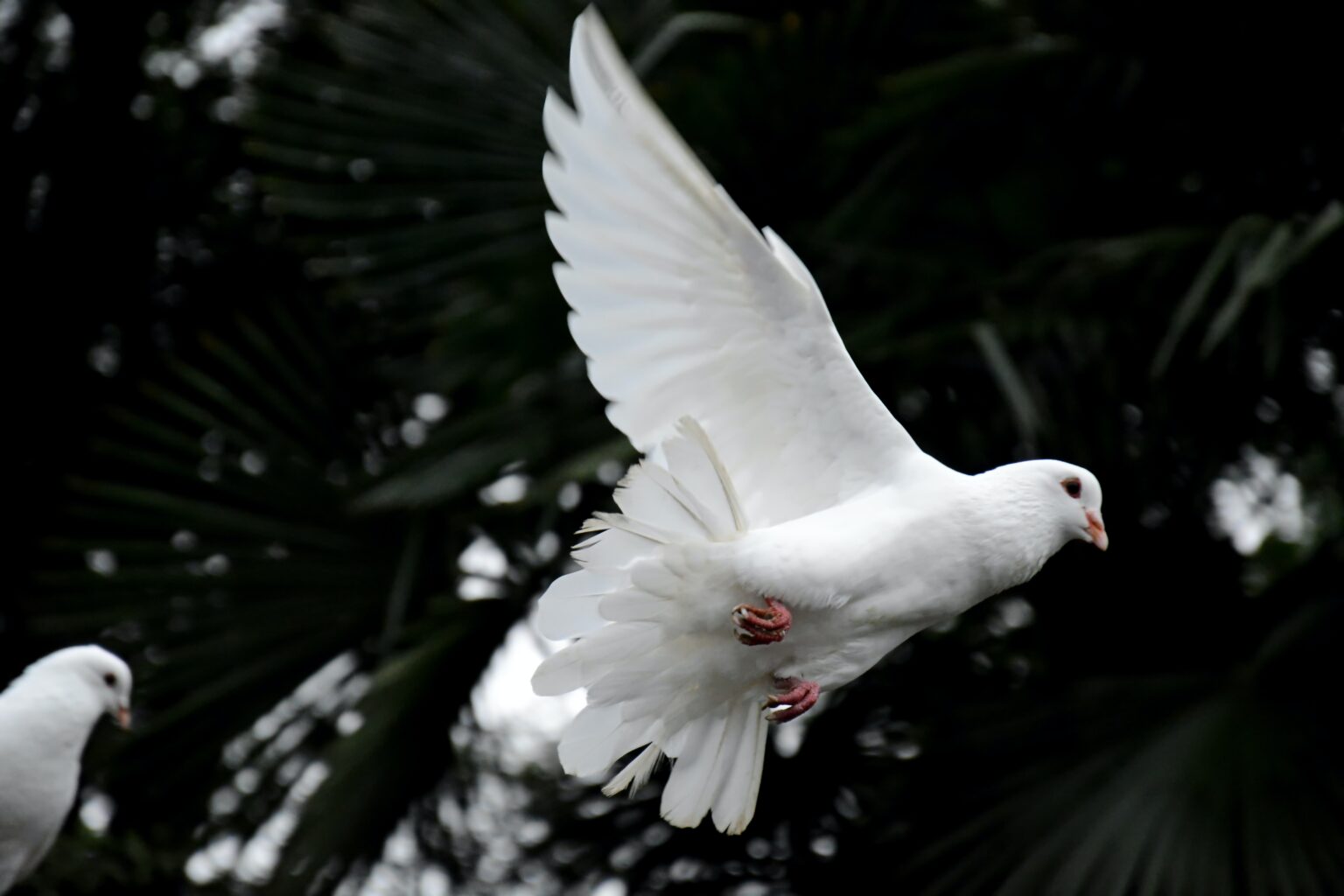
COVID-19 has provided a real opportunity for us to pause and reconsider our ways of being in the world. Such reflection can bring into focus an important question for Christians, academics, and citizens today: what kind of world do we want to see after the pandemic? In considering adequate responses to this question, I know in my heart that we cannot go back to the status quo that existed in late 2019. First of all, especially after this dark winter, we will have lost too many folks who would have otherwise survived. As such, the world cannot ever be the same. Also, my faith along with my formal studies and research in areas including peace, education, and Christian Ecological Ethics have formed not only my mind but also my heart. The cumulative effect, in no small part as result of my experiences at St. Mike’s, is that I am certain we need a transition to more just and verdant ways of being in our religion, politics, education, and action in the world. Better choices in terms of what we select to revive and what we choose to leave behind in our cultures and societies as a result of the pandemic are required to participate in the necessary transformation. From a Christian perspective, this transformation is necessary to more fully accept Jesus’ call to be pilgrims for peace, justice, and the integrity of creation on Earth. Contemporary Catholic Social Teaching can provide a guide for this most important journey. In order to ground these opening points, please allow me to go deeper into one of the most recent examples of Catholic Social Teaching with my remaining space for this reflection.
Since Paul VI established the practice, each year and in anticipation of the World Day of Peace celebrated on January 1, the Catholic Bishop of Rome releases a message. In the 54th message, written for 2021 during a time of global pandemic, Pope Francis addressed A Culture of Care as a Path to Peace. This example of Catholic Social Teaching is both innovative and important. Herein, like his predecessors, Francis considers peace as much more than the mere absence of war but as also including positively defined conditions like social justice, gender equality, care for creation, and, as he himself helped to bring into focus, cultures of encounter and dialogue. Indeed, by introducing “a culture of care” to Catholic Social Teaching, he is recalling his earlier reflections that align with, and enrich, the content of “cultures of peace” so important to peace studies. The concept of cultures of peace is both analytical and aspirational. It helps us to discern those ways that are helpful in cultivating cultures of peace. Additionally, “cultures of peace” provides a framework to exercise our moral imaginations in creative ways in order to provide a vision to drive the action of building substantive peace.
In accord with these intertwined features of cultures of peace and drawing lessons about caring for both each other and the rest of creation from the events of 2020, Francis offers “a culture of care as a way to combat the culture of indifference, waste and confrontation so prevalent in our time” (#1). Summarizing the doctrine of the Catholic Church in light of a culture of care Francis teaches, “this doctrine is offered to all people of good will as a precious patrimony of principles, criteria and proposals that can serve as a ‘grammar of care’: commitment to promoting the dignity of each human person, solidarity with the poor and vulnerable, the pursuit of the common good and concern for protection of creation” (#6). In this light, Francis articulates a duty to promote a culture of care “as a process of education” (#8) in a holistic sense that moves far beyond the four walls of the classroom to touch upon the duties toward the common good not only of teachers and professors but also of those of families, faith leaders, and politicians amongst others. For Francis, supporting the common good with a spirit of solidarity is particularly important at a time when “the massive Covid-19 health crisis…[is] aggravating deeply interrelated crises like those of the climate, food, the economy and migration, and causing great suffering and hardship” (#1). As such, the Pope teaches there can be no substantive peace without a culture of care, which “calls for a common, supportive and inclusive commitment to protecting and promoting the dignity and good of all, a willingness to show care and compassion, to work for reconciliation and healing, and to advance mutual respect and acceptance” (#9). These are prime ingredients for any recipe aimed at nourishing the incarnation of cultures of peace in this world.
To conclude, I would note that in framing cultures of care as a path toward peace Francis is implying there are other paths towards peace, a selection of which he has already engaged in other exercises of his teaching office, including with Laudato Si’ and Fratelli Tutti. Peacebuilding work is transformative because these paths of dialogue and action exist within a reality of integral ecology, where everything is interconnected, as Francis also notes in the 54th World Day of Peace Message. Indeed, that connectivity means a culture of care is transformative whether it be incarnated in small doses like sharing nourishing food with a neighbour or in large doses like ensuring the just distribution of vaccines across both individual societies and the community of nations. Thus, if Francis’ teaching has resonance for you, the global pandemic is no barrier to the necessary transformative journey named in this reflection. In fact, despite its association with restricted movements, lockdowns, and curfews when viewed through a lens informed by a culture of care, COVID-19 actually serves to stimulate this transformative journey. It only remains for us to choose a path, or paths, to peace. Then, we begin, or indeed deepen, our work as pilgrims building up cultures of peace.
Read other InsightOut posts.
Theologian Karl Barth famously advised younger colleagues to base their work on both the Bible and the newspaper. Now, two new courses offered by the Faculty of Theology at the University of St. Michael’s College are doing just that, reflecting theologically on the evils of racism and clerical sexual abuse, topics that regularly make front-page news.
Theology of Radical Evil and Suffering will look at the experience and testimony of Jewish, African American and Indigenous individuals and communities who experienced extreme evil and suffering at the hands of those reclaiming what they understood to be their Christian faith, values and way of life.
(Sexual) Abuse and the Catholic Church, in turn, aims to explore how the present sexual abuse crisis informs—and proposes the need to reform—the understanding of the church as body of Christ.
“These are very challenging—and very necessary—courses,” says Interim Dean John L. McLaughlin. “We are educating people who will be helping to find the answers to society’s ills. They need to understand root causes and be able to recognize systemic challenges before they can begin to effect change.”
Radical Evil and Suffering “will offer a different approach to evil, as often we look at both God and evil at once in abstract philosophical terms,” says Dr. Jean-Pierre Fortin, who will be teaching the course. “This course will have a more practical approach, based on self-narratives, determining agency and how we experience the impact of evil on our personal identities and lives. How as Christians do we listen to victims when Christianity is on the side of the perpetrator?”
Along with readings from theologian Dorothee Soelle and philosopher Simone Weil on the nature of suffering, the course also features the works of such writers as Holocaust survivor Elie Wiesel, Dr. M. Shawn Copeland, who is a specialist in African American Catholic theology, Aboriginal writer Thomas King, and documents from the Truth and Reconciliation Commission (TRC).
Dr. Fortin, who is the author of Grace in Auschwitz: A Holocaust Christology, says his years living in Chicago while teaching at Loyola University exposed him to the reality of the African-American experience, and allowed him to hear prophetic voices. As a Canadian, he felt the ongoing fallout from residential schools and the injustices revealed via the TRC highlighted the need to discuss injustices suffered by Canada’s Indigenous peoples and reflect constructively on a responsible Christian response.
(Sexual) Abuse in the Church, which is being co-taught by theology professors Drs. Darren Dias, OP, and Michael Attridge, is one of the first of its kind to be taught in Canada.
“The church has gotten better, in the sense that the present number of cases has decreased, but the crimes that have been committed are a permanent wound,” Dr. Dias says. “After (1989’s) Mt. Cashel scandal, people thought it couldn’t happen again. Then came the magnitude of Pennsylvania (where a grand jury report indicated the church had covered up abuses committed by more than 300 priests over a 70-year span) and we began to realize that this was happening around the world, in any number of cultures and linguistic groups, whether the United States or India.”
The course will be delivered in three sections: the first will be inductive, using data such as statistics and ethnography; the second will look at structural, systemic issues such as celibacy, clericalism and power; the final section of the course will be deductive, looking at what church is and what the people of God are called to be. The last section, notes Dr. Attridge, will look at Scripture, and theologically grounded teachings from Pope Francis and others. Each class will begin with the testimony of survivors.
“If we think of church as sacrament, with the moral responsibility to be the body of Christ, the presence of God in the world, ask yourself what it means when the Church, called to be an instrument of God’s love, behaves in this way,”says Dr. Attridge. “We are talking about Church in a responsible, methodological way.”
Dr. Dias agrees.
“This is a pervasive issue and Catholic universities have to address it, both because we have witnessed degrees of abdication within the church and because we are informing people who will be in ministry,” he says.
Theology of Radical Evil and Suffering (SMT5610HS) is offered Tuesdays from 14:00-16:00 in the fall semester.
(Sexual) Abuse and the Catholic Church (SMJ3/6505HF) is offered staggered Saturdays from 9:00-13:00 in the fall semester.
Catherine Mulroney is a communications officer at the University of St. Michael’s College. She is also a double alumna of St. Mike’s, holding a B.A. in English and Mediaeval Studies and a Master of Divinity degree. That equals many hours in Kelly Library and many, many overdue fines.
Raising Our Voices
It began—as many of the best things do—with someone volunteering an absent colleague for a little extra work.
Our new St. Mike’s blog, InsightOut, is the result of an after-hours conversation with Communications Director Laurie Morris and Theology prof Dr. Darren Dias on March 16, the last day we were all present on campus. Dr. Dias mentioned that his colleague, Dr. Michael Attridge, was self-quarantining at home after a research trip to Italy.
“It’s a good story,” Fr. Darren said. “You should ask Mike to write something for the website.”
Then the wheels began to turn. While not one of us could predict just how the comings weeks and months would play out, we knew we were facing an extraordinary moment in the university’s history. There would be value, we thought, in hearing each other’s experiences in, and thoughts about, living through such a momentous period.
Four months later, we now have a pattern established of InsightOut blog posts running on the St. Mike’s home page every Monday and Thursday. Each story, each opinion, is unique. And as the person privileged with soliciting and receiving submissions, I am humbled by the chance to be part of the process.
Graduate student Fr. Gustave Noel Ineza, O.P., for example, spoke about his childhood during the Rwandan genocide and urged us not forget the suffering of the broader world as we focus on local troubles.
Alumnus Dr. Christopher De Bono,Vice President of Mission, People and Ethics at Vancouver’s Providence Health Care, wrote about how moving he found his neighbours’ nightly ritual of banging pots and pans and making noise to celebrate the dedication of health care workers.
Interim Principal Dr. Mark McGowan, meanwhile, a professor of History and Celtic Studies, submitted a video explaining the typhus epidemic of 1847 in light of the current situation.
Professors have written about what their subject areas tell them about the pandemic, while students have talked what St. Mike’s means to them. And alumni members like Patricia Dal Ben, along with her colleague John Kostoff, a member of St. Michael’s Collegium, offered their professional wisdom on how families can keep a faith life alive when unable to get to Mass.
Some people have shyly offered to submit while others, when approached with a specific topic, agree with grudging good humour.
Coming posts will touch on the reality of working from home as a parent, how we are preparing for the coming academic year, and even how to get married during a pandemic. Pieces have ranged from moving to amusing.
Anyone who has worked through these past months will have experienced their colleagues in new ways. Zoom meetings reveal family photos or a glimpse of a partner or pet. A phone call might be interrupted by a delivery person at the door of what has become a home office.
For those of us working at St. Mike’s, the blog has taught us about family, we’ve heard admissions from those who miss their colleagues, we now know about our officemates’ hobbies, and we have gained insight into who we are as a community and what makes us unique. When we are at our best, it seems, we are closer to being family than colleagues.
But lest this sound like busy work or a grand vanity project, it’s anything but. While we’ve gained insight into our colleagues, the blog’s purpose is very much outreach. Having worked on planning various campus events, I know how people look to St. Mike’s to keep them engaged with the world and continuing on a path of lifelong learning. And if we can’t do that in person, some reflections and mini-online lectures are a sound alternative.
Parents of future students may come away from this blog reassured that not only are the people who’ll be working with their children skilled, capable professionals, they are also decent and caring people.
Future students can read the blog and find out some of the cool work happening on campus, and look forward to engaging in the kinds of discussions that make university a once-in-a-lifetime experience.
And alumni can engage with InsightOut and know that their alma mater remains vibrant and in good hands.
One of the great ironies of this time of masks and social distancing is that through it we have been brought closer together. We now know more about each other and, more often than not, knowledge brings with it respect. We have learned to work together in new ways and have seen the value in teamwork.
As we approach the fall, this blog will begin to pivot toward other aspects of life at St. Mike’s, looking ahead to a time when we can put the pandemic behind us.
If you are connected with St. Mike’s and would like to participate in InsightOut, please send me an email to chat about a submission.
Having heard the stories of the St. Mike’s community, I am confident we will head into the fall ready to take on pretty much anything. As the hashtag says, we really are all in this together.
Read other InsightOut posts.
The University of St. Michael’s College is mourning the loss of Sr. Johanna D’Agostino, IBVM, who served the community in numerous ways over her long career.
Many will remember Sr. Johanna from her days as part of the Campus Ministry team, where she worked from 1985-1990. Before joining the ministry team she also served as Dean of Women at Loretto College, so she was a familiar face on campus.
From 2006 to 2012 she served as the representative of the university’s founding women’s orders on the Collegium, St. Michael’s governing body. A Master of Religious Education graduate from the university’s Faculty of Theology, she also acted as a field placement supervisor for the Faculty’s Master of Divinity program.
“Johanna was a wonderful support and inventive member of the team,” recalls Fr. James McConica, CSB, who was St. Michael’s president when Sr. Johanna was in campus ministry. “It was she who made a success of the Parents’ Day project I launched when I realized how many of our first-year intake were the first members of their families to attend university. But her contribution ranged far beyond that, into most areas of student activities and social life.”
An article dated Oct. 16, 1986 in The Mike, St. Michael’s student newspaper, announced that Sr. Johanna was moving from a part-time position to a full-time one, forming a new chaplaincy team with Fr. John Gaughan, CSB. The article noted that the campus ministry team was to provide the St. Michael’s community with both religious and supportive programs, including a daily mass at 11:15 in the student chapel, a Sunday folk mass, evening and weekend retreats, private counselling and other supports. Sr. Johanna was also responsible for introducing what the article called “a relatively new programme,” the Rite of Christian Initiation of Adults (RCIA), designed for adults seeking to enter the Catholic Church.
Sr. Johanna’s career in education was impressive. She served as a teacher and a principal, and wrote textbooks on teaching at the elementary level. She worked as a primary education consultant, and taught in the Teacher Education program at Brock University. She was elected her order’s Vicar General in 1999.
She left St. Michael’s to take up a position at Catholic Charities of the Archdiocese of Toronto, offering workshops to parishes on pastoral skills. She rounded out her career as the Pastoral Assistant at Blessed Sacrament Parish in North Toronto.
A busy volunteer, Sr. Johanna lent a hand at the Canadian Red Cross, Development and Peace, and with her order’s justice and peace work.
A private funeral will be held at Presentation Manor on Friday. A memorial mass will be held at a later date.
The St. Michael’s community extends its sympathy to the Institute of the Blessed Virgin Mary on the loss of Sr. Johanna.
Dr. Darren Dias teaches in St. Michael’s Faculty of Theology, specializing in Trinity, Religious Diversity, and teaching methods. He is currently working of a SSHRC funded project with colleagues Gilles Routhier (Laval) and Michael Attridge (St Michael’s) entitled: “One Canada, Two Catholicisms: Divergent Evolutions in the Catholic Church in Quebec And Ontario, 1965–1985.”
When the Monastic Cell Meets a Zoom Meeting
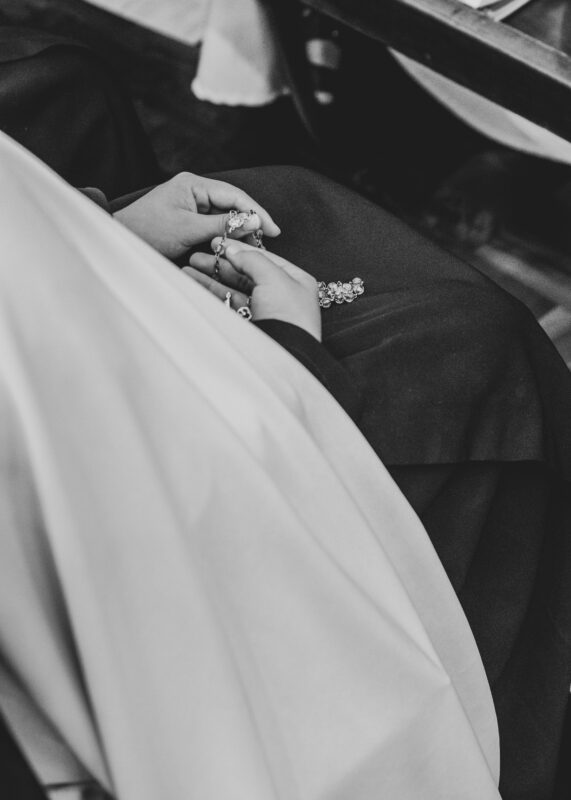
When someone enters a religious order or institute for consecrated life they begin with the novitiate. Monastic orders like the Benedictines, Cistercians, and Trappists, mendicant orders like the Franciscans, Dominicans, and Carmelites, or apostolic congregations like the Basilians, Sisters of St Joseph and the Lorettos—everyone begins in the novitiate. This is an intense period of no less then twelve months when the novice is removed from his or her normal life and confined to the novitiate community. The novice leaves behind his or her job, or studies, and the comfort of one’s usual network of relationships, and enters into something new. One is suddenly disconnected and inserted into a foreign reality. Novitiate is the beginning of a process of formation into a particular history, charism, spirituality, theology and way of living.
My novitiate was spent in the Priory of St. Albert the Great in Montreal. The large priory was built to house about 100 friars in 1960 (just before the exodus of so many religious). The complex includes a large conventual church, refectory, community rooms, ‘cells’ (bedrooms), pastoral institute, administrative offices, even a pharmacy, swimming pool and its own postal code. Although on the campus of the University of Montreal, St. Albert seemed like an oasis in the midst of the hustle and bustle of urban university life. One could easily survive without leaving the complex for weeks, maybe months.
St. Albert seemed to have preserved much of the medieval character of the Order of Preachers: a separate choir for the religious in the chapel, long refectory with an alcove for the reader, silence in the halls, habited religious moving from choir to refectory, etc. The rhythm of my day unfolded according to the schedule of the liturgical hours (prayers): lauds and Eucharist in the morning, mid-day prayer, and vespers; after each hour, the appropriate meal was served. Between prayer and meals there were blocks of time for contemplation and meditation (naps); study, common and individual; and work, on-site labor to meet the needs of the community (cleaning, gardening, snow removal, etc.).
The imposed confinement in March due to COVID-19 has felt in many ways like a return to my novitiate experience. The rhythm of life that developed in the wake of the confinement was not unfamiliar. My life was not punctuated primarily by apostolic activities—teaching, lectures, parish ministry—but around common prayer. Always being home has meant that morning or evening activities no longer make it possible to skip common prayer for a different “priority.” Of course, through technology many of activities continue, but in drastically different ways. The sacrosanct private space of the “monastic cell” has been displayed on Zoom for all to see.
For centuries, religious have in some way retreated from the world, for love of it, into a voluntary confinement. Withdrawal means making space for the other, especially for the most vulnerable and in need. This is not a space of escape from the world, but a space of intimate encounter, where the “joys and the hopes, the griefs and the anxieties” (Gaudium et spes) are appropriated and placed before the Triune God in prayer. Since COVID-19 began, this prayer has been mottled by petition and supplication for healing and reconciliation.
Religious communities, even ones rooted in monastic or medieval notions of “separation from the world,” are not unaffected by pandemic. In 1918 Archbishop Paul Bruchesi of Montreal wrote a pastoral letter praising the work of many religious communities during the Spanish Flu epidemic. Apostolic religious communities were on the frontlines of health care and social assistance then. In these twilight years of religious life in Canada, religious communities experience solidarity with the victims of COVID-19 differently. Less than directly serving those most affected by the pandemic, many religious have become its victims.
If religious communities were aware of their vulnerability before the pandemic, how much more keenly are they aware of it today? In 2014, Canada counted about 11,600 religious. Of that number 50% were over 80 years old and 44% between the ages of 60-80. Already in 2014 fully 25% of all religious lived in long-term care homes. Many religious communities have been devastated by the coronavirus. In Ontario, the Jesuits temporarily shut down their retirement facility. Half of the residents in the Residence-De-La-Salle, a mixed religious community care facility in Quebec, have died. Some religious communities have lost up to one third of their members due to COVID-19.
My return to my novitiate experience, coupled with the witness of those who have been affected by the disease, reminds me that religious life is an ongoing process of becoming ever more vulnerable. A voluntary confinement does not separate religious from the world around them, but brings the vulnerability of that world into the heart of who we are.
Read other InsightOut posts.
Educators and alumni members John B. Kostoff and Patricia Dal Ben are the authors of One Home at a Time: Realizing and Living Out Our Domestic Church, Novalis 2019. John, who is the Executive Director of the Ontario Catholic Supervisory Officers’ Association, graduated with a Bachelor of Arts in 1977 and now serves as a member of the University of St. Michael’s College Collegium. Patricia, who is Curriculum Consultant: Religious Education, Family Life and The Arts with the Halton Catholic District School Board, graduated with a Master of Theological Studies degree from the Faculty of Theology in 2017.
Building the Domestic Church
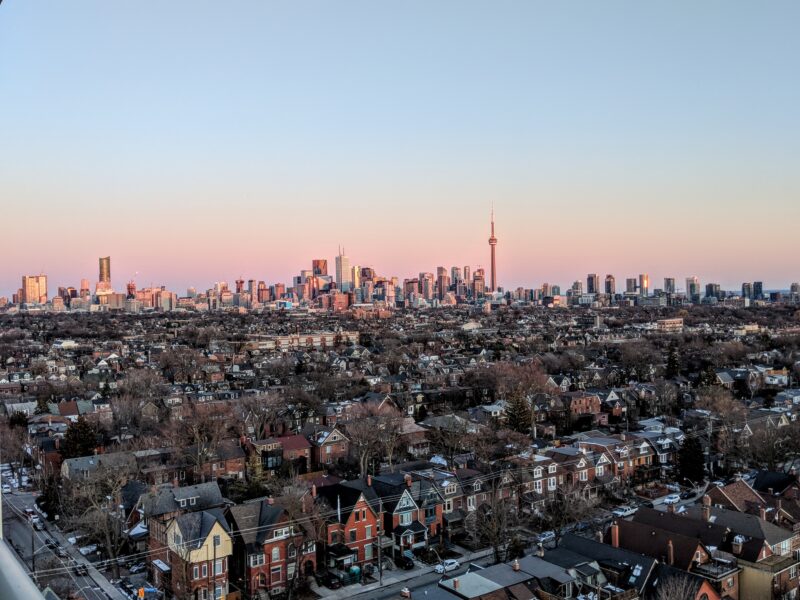
Since the beginning of this pandemic, home is where we have been called to “stay safe” and where we have been staying for weeks on end. Home has never meant so much to so many people. It is the place we have baked, binged, and worked. It is the place we have homeschooled and the place where we have celebrated virtual mass. It is also where we have wept and worried and then worried some more. So how has your notion of home changed during this time? Or has it?
Long before this pandemic, home was, in part, where mass was celebrated; not the way we celebrate it today or with hope in the near future, in our bricks and mortar churches, but celebrated nonetheless. The Apostles sat in the upper room after the crucifixion trying to reimagine what this “new” life was going to look like. Luke the Evangelist recounts in the Acts of the Apostles that “Day by day, as they spent much time together in the temple, they broke bread at home.” (Acts 2.46a) The Catechism of the Catholic Church also reminds us that,
“In our own time, in a world often alien and even hostile to faith, believing families are of primary importance as centres of living, radiant faith. For this reason, the Second Vatican Council, using an ancient expression, calls the family the Ecclessia domestica.” (1656).
The home church or domestic church has a long-standing tradition in our faith experience, and this notion was reignited by Bishop Fiordelli at the Second Vatican Council. St. John Paul II called the family “another invaluable expression of the apostolate of families” (Letter to Families, p. 16, 1994). The Church has continually valued and called on the faithful to create anew the reality of being home.
Article after article, post after post, people are reaching deep to look at what matters and realigning how we project into the world and how we deal with all that is happening and all that is still unknown. Missing our churches, the community, THE celebration is important, but never has there been such a time to reinvigorate our home churches. What we do now in our domestic church will have a profound effect on the future of our universal Church. We have a responsibility to develop the domestic church as authentic projections and expressions of our collective baptismal call.
As we celebrate Pentecost and the birthday of the Church, let us not forget how important that first house church was, and the responsibility we all have to nurture and support that growth and faith development in our own homes with the people we call family. The domestic church has been instrumental in laying the foundation of what is most important to this temporal life. From those early moments of gathering and now, thousands of years later, without a church building or the ability to gather in our places of worship—how then do we claim to be Catholic? How do we delineate in our homes that our faith tradition matters? The new evangelization has come to us in a bold and enticing way. How we understand what is happening in our world will forever change how we participate in Church. There has never been a better time to be taking stock of our domestic church so that when we unite once again to the source and summit we will have done our best to proclaim as good and faithful servants in our homes and beyond.
Read other InsightOut posts.
Throughout the seasons of Lent and Easter, Dr. Darren Dias, OP, who teaches systematics at the Faculty of Theology, has shared his homilies with the broader university community. For the Feast of Pentecost, he spoke on the subject of race and renewal.
Pentecost 2020: Act 2:1-11; 1 Cor 12:3-7, 12-13; John 20:19-23
Today we celebrate the renewal of creation when the risen Lord appears amidst his disciples and breathes life into them, as God first breathed life into Adam (Genesis 2:7). But today the last words of George Floyd—a 46 year-old father of 2 brutally murdered by police because he was black—echo in our midst: “I can’t breathe.”
This week the Ontario government warned that confinement and distancing regulations will not be relaxed as expected because of the increase of COVID-19 cases. We see these especially in lower income and new immigrant areas of the city where pockets of racialized persons live. We have spent the entire Easter Season in confinement and now at its completion, it looks like it will be prolonged.
Perhaps not unlike the disciples we lock our doors out of fear of the real dangers lurking about; locked in our homes or in the bubbles created by masks and gloves and safe distance. Yet Pentecost in John’s Gospel account is the moment when Jesus appears to the disciples, meets them in their fear, and releases them from it by breathing the Spirit of new life into them, and then sending them into the world on a reconciling mission. But we remain locked up, anxious about COVID-19 , and for racialized persons like me, fearful of the lurking plague of violence. So what kind of Pentecost can we celebrate this year?
In the narrative from Acts we read another account of the giving of the Holy Spirit. A violent wind fuels the tongues of fire that appear over the disciples. These are external manifestations of the Holy Spirit’s presence in the community. Likewise, the disciples’ preaching, understood by speakers of various foreign languages, Parthians, Medes, and Elamites, Libyans, Romans, Cretans, etc., is a manifestation of the Spirit’s power.
Pentecost is often seen as a remedy to the confusion of the multiple languages that resulted from the destruction of the tower of Babel in Genesis 11. Now we don’t have readings from the Hebrew Bible during the Easter season, but if you remember in Genesis 11 the whole earth is said to have spoken one language. This makes the people of earth powerful and they decide to build a tower to the heavens as a testament to their power. In response the Lord comes and scatters the people, replacing the single language that seemed to be constitutive of their powerful abilities with many languages. The people become confused because they are unable to understand one another due to the multiplicity of languages and their building project is left unfinished. If a multiplicity of languages that resulted in confusion was divine punishment for the Promethean building project, then Pentecost might be understood as its remedy.
For example, Gregory of Nazianzus writes:
“But as the old Confusion of tongues was laudable, when men [sic] who were of one language in wickedness and impiety, even as some now venture to be, were building the Tower; (Genesis 11:7) for by the confusion of their language the unity of their intention was broken up, and their undertaking destroyed; so much more worthy of praise is the present miraculous one. For being poured from One Spirit upon many men, it brings them again into harmony.” (St. Gregory of Nazianzen, Oration 41)
But in the narrative from Acts 2, Pentecost does not result in a single language like Babel but is about being able to understand one another. Multiple languages are not replaced with a single language: all are speaking their own language but they understand one another.
In his reflection on Genesis 11 and Pentecost, Gustavo Gutierrez, OP, claims that the builders of Babel are punished not because of a rivalry with God and God’s ensuing jealousy, but because Babel is a “political attempt, totalitarian in nature, to dominate people.” Clear allusions to the imperial project of the tower’s construction are seen in Peter Bruegel’s painting of the Tower of Babel. Bruegel (1525-69) paints the Tower of Babel to look like one of the greatest symbols of western imperialism, the Roman Colosseum. Though a Catholic himself, Bruegel alludes to the singularity of the Latin language in the Roman Catholic Church in depicting a stylized version of one of Rome’s greatest landmarks, compared to the myriad of vernacular languages used by Protestants in the low countries of his time.
That human community is expressed through a single language is a fiction. Gutierrez argues that a single language aims at a more efficient domination of the other through “the flow of orders coming from the central authority.” Dominating and oppressive imperial projects are impeded by diversity, especially diversity in language. A single, imposed language is an abuse of language and power. Pentecost, on the other hand, is about the life giving option of diversity. This diversity of languages makes dialogue, mutual understanding, inter-personal exchange and unity possible precisely through the diversity.
The gift of the Holy Spirit did not change the immediate situation of the disciples. They still struggled with Jesus’ new mode of presence and they still feared the authorities and their message was met with resistance. But they were able to establish new ways of being community together and beyond themselves. The disciples were able to move beyond themselves to build relationships with those who were most different, strangers and foreigners.
As Pope Francis reminded us during Holy Week, the world has been sick in many ways, even before COVID-19, but many of us with privilege thought that we would not get sick. Evils like white supremacy that render human persons into things with no worth, existed before George Floyd breathed his last. But many of us imagined that we were either not susceptible to or not implicated in structures of power and race. This Pentecost we are reminded that we too can get sick and that the violence of racism looms large.
The gift of the Holy Spirit compels us to creative and bold ways to build-up human relations in their wonderful diversity. Three examples come to mind from this past week. First, this weekend the College Theological Society decided to hold its annual conference online due to COVID-19. This virtual gathering made it possible to relate to one another, to break out of our confined spaces, and to become a community of teachers and learners once again. Another example is the Atlanta Chief of Police who met with protestors in the wake of George Floyd’s murder. She did not condemn them or order them to go back home. Instead she listened to them and affirmed them in their justified fears. Protestors and police spoke peacefully and meaningfully to one another. Last, today in our zoom Eucharist we find ourselves constituting community in a new way to share in word and sacrament across special divisions. I’ve never heard so many of you say that our weekly time together has become the highlight of their week. COVID-19 reveals the depth of our need to become community.
Every Pentecost is the re-birth of the church anew into a particular time and place and context, each with its own joys and sorrows. The visible manifestation of the Holy Spirit in Pentecost today may be very similar to the first Pentecost: reaching across boundaries to understand those who live differently, speak differently, experience reality differently. Through speaking and the use of language—which is always first by listening—we exchange breath. Every language exchange includes the exchange of breath (but no ‘moist’ speaking). In these times when it has become dangerous to breathe, we are called to exchange life-giving breath as the disciples did, using language to build in inclusive community.
Our Spirit-given diversity challenges singular and dominating forms of power that dehumanize, and that ignore the breath of divine life, the Holy Spirit, who dwells in all creation, in every human being. This gift offers us countless and bold ways to build communion and inclusive community where diversity breathes life.
Gustavo Gutierrez, “Between Babel and Pentecost,” in Gustavo Gutierrez, Essential Writings ed. James B. Nickoloff (Maryknoll: Orbis Books, 1996)
The Vatican has designated May 16–24, 2020 Laudato Si’ Week to mark the 5th anniversary of the completion of Pope Francis’s groundbreaking document Laudato Si’: On care for our common home. (The document was formally signed on May 24, 2015 and released on June 18, 2015.) The global campaign is sponsored by the Vatican’s Dicastery for Promoting Human Development, and is designed to spur Catholics to become more involved in environmental action.
Dr. Dennis O’Hara, who authored the reflection below, edited a book on Laudato Si’ with Matt Eaton and Michael Ross. The book, Integral Ecology for a More Sustainable World: Dialogues with Laudato Si’, brought together scholars from around the world with diverse backgrounds, including Chris Hrynkow, Cardinal Turkson, Brother Guy Consolmagno (Director of the Vatican Observatory), Sue Rakoczy, and John Haught. Drs. O’Hara, Eaton and Hrynkow are graduates of the Elliott Allen Institute for Theology and Ecology at the Faculty of Theology, and Michael Ross is an EAITE doctoral student.
Laudato Si’ Five Years Later
Even before its promulgation on June 18, 2015, the papal encyclical, “Laudato Si’: On Care for Our Common Home,” had created tremendous advance interest. At the time, I was serving as Director of St. Michael’s Elliott Allen Institute for Theology and Ecology (EAITE) and thus was frequently invited to speculate on the possible content of the encyclical, including on a student radio show, at a conference on religion and cosmology at Yale University, and in parishes of both Christian and non-Christian faiths.
Prior to its official release, I was given an advance copy of the encyclical so that I could prepare for the anticipated media attention. Interviews for radio, television, and newspapers punctuated the next several days, to be followed by talks at conferences, for school boards and NGOs, and in many parishes, both in Canada and Korea. This unprecedented interest was echoed in the encyclical’s enthusiastic reception at the 21st Conference of the Parties (COP21) of the United Nations Framework Convention on Climate Change at Paris in 2015, resulting in the Paris Climate Agreement. The encyclical inspired the formation of hundreds of new Catholic organizations to advance its goals, including the Global Catholic Climate Movement (a global network of 900 Catholic organizations) and the Catholic Climate Covenant as well as numerous initiatives of religious orders and the expansion of the work of Catholic NGOs to address an increased concern for our common home. It also spurred the interfaith project Living the Change, and the formation of the Vatican Dicastery for Promoting Integral Human Development. The encyclical continues to be favourably referenced in academic circles among diverse disciplines, including theology, ecology, economics, justice, social studies, healthcare, and more.
With the advantage of five years since its release, a retrospective assessment of Laudato si’ gives a fuller appreciation of its accomplishments. For decades, ecotheologians had acknowledged the Christian teaching that there are two books of sacred revelation—viz., scripture and creation—bringing a renewed focus to exploring the theological and ethical implications of a more sympathetic and scholarly reading of the latter. They had been pioneering a deeper understanding of humanity’s role within the epic of evolution and advocating for a more integrated understanding of the myriad of justice issues related to the ecological crisis. Pope Francis’ first encyclical validated their decades of innovative work.
The call of Laudato si’ to recognize the integral ecology of creation and to engage in conversations of respectful dialogue with diverse voices from all sectors of society, emphasized the intersectionality of ecological, ethical, economic, political, social, gender, and justice issues. Through such efforts, the encyclical articulated a more robust and integrated version of Catholic Social Teaching. Concurrently, it required the conversion of ourselves and our cultures, eschewing a consumerist individuality in preference for the health of the common good and our common home. As the magnitude and urgency of the ecological crisis in its multiple forms became better understood within more disciplines and by more people, the comparable magnitude, complexity, and intersectionality of this conversion also became more apparent.
Nevertheless, such awareness has not spurred an adequate response within either secular or religious institutions. For example, the concentration of greenhouse gases in the atmosphere continues to increase while the vitality of life on Earth declines despite generally universal calls for a vigorous reversal of both. This past November, the retiring president of the U.S. Conference of Catholic Bishops described climate change as “important but not urgent.” Yet as Msgr. Bruno Marie Duffe, secretary of the Dicastery for Promoting Integral Human Development warns, ” the alarming speed of climate change caused by human behavior and the choices we make threaten the very survival of species, water and air quality as well as food security. These are huge challenges…and the Paris Agreement is an absolute minimum and in fact does not go far enough.” Despite fine rhetoric, few nations are likely to reach the pledges they made with that agreement.
Laudato si’ continues to challenge this delinquency among nations and within its own Church. Its observations, assessments, and calls for action often serve as a standard against which efforts are measured or as an interlocutor that nurtures or guides responses to global crises. The contrast between the analyses and aspirations of the encyclical, and the anemic responses and sclerotic leadership still too often seen, shows that while the encyclical has had significant impact, the conversion it prescribes is far from realized. Like every good encyclical, Laudato si’ needs to be read and re-read to better understand and apply its message.
Dr. Callie Callon is a New Testament scholar at the Faculty of Theology who has also taught at the undergraduate level for St. Michael’s. She is an expert in ancient physiognomy, looking at how early Christians used appearances to praise or impugn others. Her book, Reading Bodies: Physiognomy as a Strategy of Persuasion in Early Christian Discourse, was published in 2019 by Bloomsbury Publishing.
Healing Moistly in Ancient Times
Recently, Prime Minister Trudeau rather infamously suggested that wearing masks during the current health crisis will help prevent the transmission of the virus through saliva, or, as he phrased it, by “speaking moistly” on others in close proximity. As cringeworthy as this “terrible image” is to a contemporary audience, it likely would not have evoked the same reaction in an ancient Mediterranean one. In this context the use of saliva was considered by some to be highly efficacious in treating a number of various ailments.
Perhaps the most famous examples of this are found in the New Testament, where Jesus is depicted as using his own saliva in conjunction with healing some sensory afflictions. In the Gospel of Mark Jesus heals a person with hearing and speech impediments through his touch, prayer, and by spitting (7:31-53). Visual impairments are healed by him with the assistance of a topical application of his saliva in two accounts. In Mark, Jesus spits directly into the eyes of a supplicant prior to laying his hands on him (8:22-26). In the Gospel of John Jesus forms a paste made from saliva and earth which he the applies to the blind man’s eyes before instructing him to then go and wash in the pool of Siloam (9:6-7).
However, these were not the only people who were held to have regained their vision through the application of saliva in ancient texts. According to the first/second century historians Suetonius and Tacitus, the emperor Vespasian accomplished a similar feat through the use of his saliva (Vesp., 7.2; Hist., 4.81). Pliny the Elder, a natural historian from the first century, also attests to the use of saliva for ocular disorders, asserting that ophthalmia could be remedied by daily application of the spittle of a fasting person (N.H. 28.7). According to him, a fasting woman’s spittle was considered an extremely effective treatment for bloodshot eyes (N.H. 28.22)
Beyond eyesight, Pliny further relates a tradition that seems to have held the application of spittle from a fasting person as a particularly effective treatment for a variety of different complaints. To cite but a few examples, it was thought that the application of this type of spittle behind a person’s ear would soothe a disordered mind (N.H. 28.5), could be used to treat boils (N.H. 28.7) and to remove leprous spots (N.H. 28.7), and that a “crick in the neck may be got rid of by carrying fasting spittle to the right knee with the right hand, and to the left knee with the left” (N.H. 28.7).
Non-topical uses are also attested for a host of different ailments, ranging from warding off snakes to prevent poisonous bites (although should it enter their throats it purportedly destroys them [N.H. 7.2]), as a preventative against contracting epilepsy (N.H. 28.7), and as a means to secure the desired outcome of a healing incantation regarding foot pain, with the rather interesting stipulation that the accompanying words “must be recited sober” (Varro, Agr. 1.2.27).
Far from being a transmitter of health complications, in some ancient Mediterranean thought saliva was viewed as a means to resolve or even prevent them. While our present circumstances necessitate keeping our saliva to ourselves, there is still a wealth of actions drawn from the gospels that we can, have been, and should emulate: compassion, faith, love and care for others. And of course, social distancing (Mark 1:35; Luke 5:16; Matthew 14:13)!
Read other InsightOut posts.
Rev. Dr. Marc Doucet is an alumnus of the Faculty of Theology, graduating in 1980 with a Master of Divinity degree. He earned a Doctor of Ministry degree from St. Stephen’s College in 2018. He is a Registered Psychotherapist with the College of Registered Psychotherapists of Ontario. He is also past Chair of the Education Standards Commission and past President of the Board of Directors of the Canadian Association for Spiritual Care. He currently serves as the manager and CASC Clinical Educator at Toronto’s University Health Network.
Pastoral Care in the Midst of a Pandemic
I was sitting on the window ledge in the hallway of one of our ICUs checking in with one of my staff spiritual care practitioners to see how she was doing in the midst of COVID-19 and what support I could offer her and the rest of the team. As we talked she held a folded piece of white paper in her hand. After we chatted for a bit, she told me that she had an older male patient who had come in COVID+, was vented, and would probably die in the next few days. His adult son could not come to visit because he was quarantined. In checking in on his elderly parents who lived on their own, the son had found his father collapsed on the kitchen floor and his mother dead in bed from COVID. The piece of paper the spiritual care practitioner held was a letter written by the son: he had asked her whether, if he wrote a letter of goodbye to his dad, she would take it in and read it to him.
As I left her and walked down the hallway I was struck by the profoundness of the moment, and what it means, and calls for, to minister in the midst of a pandemic. I reflected on the strength and conviction she has to be able to walk into a patient’s room and read such an intimate letter—a letter that will be the last contact a father has with his son—a letter that will have lasting impact on a son; to do this not once but to be called on again and again in the coming weeks. This has become a major role for us to play: to connect families with their loved ones because of “no visitor” policies. People are going to die without their loved ones there in their last moments of life, and this will make grieving more difficult and complicated for families and loved ones. But spiritual care practitioners will be there!
We often use images such as “being present with people”—“journeying with people”—when speaking about pastoral care. But the presence we’re being asked to provide, the invitation to journey with patients during a pandemic, calls for something else from within. It’s not so much about creating a therapeutic relationship, drawing upon psychotherapeutic modalities for interventions (as important as all of these are); but to read a letter to a dying patient from their loved one requires a deep personal spiritual well, out of which flows this desire and willingness to “show up” and journey with, not with theory and knowledge to support us, but with a sense of commitment and purpose in our own lives.
I hear echoed in our work the words of Paul in Philippians when he speaks about the Christ event: He “did not regard equality with God…but emptied himself…taking on human form.” There is something incarnational about this work. It is literally giving “flesh”—not from some distant, safe place (phone, FaceTime, etc.)—to minimize the distance, the safety, and to enter, not only experiences, but literally into patient rooms, and nursing stations. In the midst of a pandemic spiritual care practitioners are leaving their security and walking into the devastating humanity of others.
Read other InsightOut posts.
Dr. Reid B. Locklin is Associate Professor of Christianity and the Intellectual Tradition at the University of Toronto, a joint appointment with St Michael’s College and the Department for the Study of Religion. His research focuses on a range of issues in Comparative Theology and Hindu-Christian Studies, particularly the engagement between Christian thought and the Hindu tradition of Advaita Vedanta. He also writes on the scholarship of teaching and learning in theology and religion.
Catholics and Hindus, Together Alone
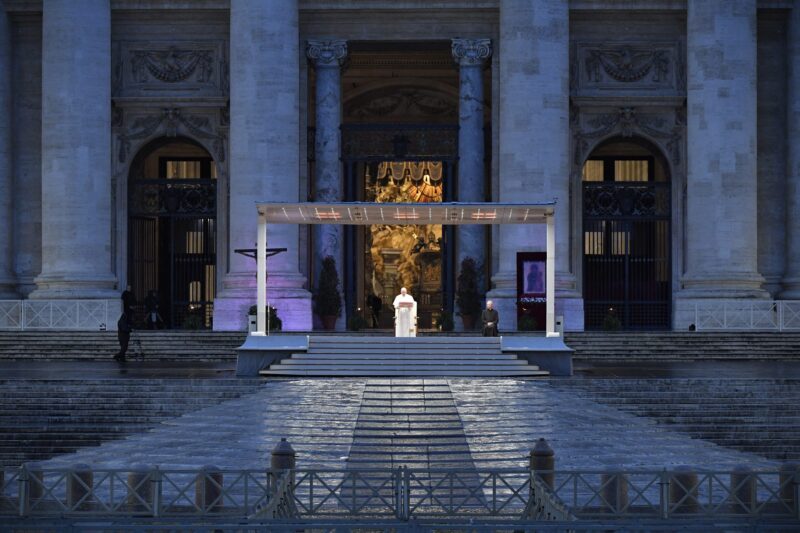
Like many Toronto Catholics, I began my observance of Holy Week this year in front of my family’s television, watching the Cardinal’s celebration of Palm Sunday in St. Michael’s Cathedral. A little over a week earlier, on March 27, I sat transfixed in front of my laptop computer as the pope pronounced a special Urbi et Orbi blessing to an eerie, empty St. Peter’s Square. My devotional life has moved nearly entirely online.
Catholics, of course, are not unique in this respect. Consider an “e-Satsangh” hosted on Facebook Live by the New York City-based Hindu movement Sadhana on April 2. In this event, a pandit offered a ritual puja in his apartment, presenting Sanskrit verses, water and other offerings to several Hindu deities well suited to the present crisis. These included the elephant-headed god Ganesha from a local temple in Flushing, New York; Arogya Lakshmi, the Goddess in the form of mother, health and power; and Sudarshana Vasudeva Dhanvantari, the god Vishnu in the form of a medicine healer. Following the puja, from a different apartment, one of Sadhana’s co-chairs guided virtual participants in a short meditation and hymns for the flourishing of all living beings. Discussion followed, ranging from the visceral—one participant sought advice on grieving the loss of a friend to COVID-19—to broader questions of advocacy and political organization. The focus here was on action: pragmatic service to those who are vulnerable, and also ritual action for their health and well-being.
Still more direct is the approach taken by residents of the Indian city of Mumbai, according to a widely circulated report. There, it seems, the Novel Coronavirus has been personified as an antigod or demon (asura). On the eve of the popular festival of Holi, effigies of this antigod—called Coronasur—were created and ritually destroyed, in an effort to halt the virus.
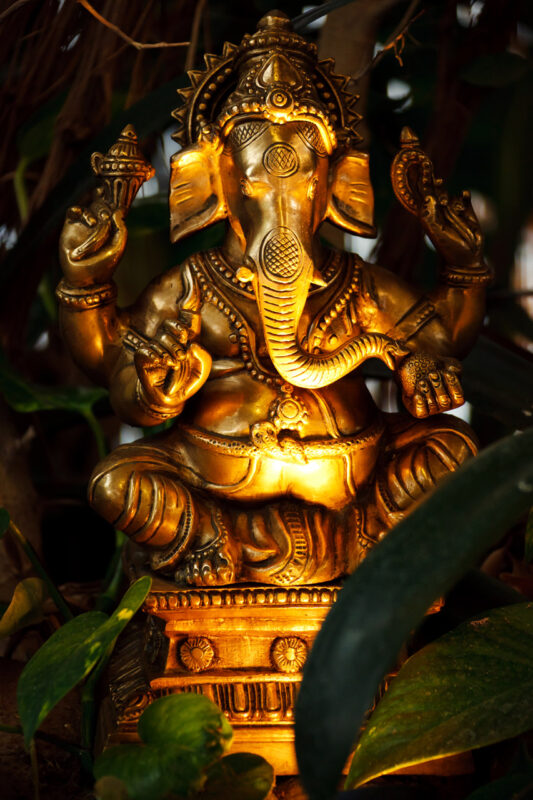
As a Catholic, I admit some discomfort with these rites, at several levels. But, also as a Catholic, I am obliged to approach such discomfort with an attitude of dialogue and exchange, rather than fear or condemnation. What might I learn from my Hindu neighbours about being a person of faith in this time of pandemic?
I think that the examples of Sadhana and even the Coronasur effigy offer an important reminder that Catholics, no less than Hindus, believe in the authentic power of ritual prayer. When Pope Francis raised the Blessed Sacrament and pronounced the Urbi et Orbi blessing on March 27, he was flanked by two icons that had defeated plagues in the past, Mary Salus Populis Romani and the Crucifix of San Marcello. This was a spiritual blessing, to be sure, an indulgence for those unable to receive the Rite of Reconciliation. But it was also an invocation of the power of God to intervene on behalf of those who are sick, and to arrest the devastation of COVID-19.
In the present crisis, some voices on the secular left and the religious right have called persons of faith to make a false choice: to follow the recommendations of public health officers, or to trust in the power of our shared prayer. Most Catholics, like most Hindus, refuse this choice. We embrace both the best science and the deep wisdom of our ritual traditions.
And so we vacate our churches and temples, and even St. Peter’s Square, to “flatten the curve.” But that need not, and cannot, stop us from persisting in our prayers. In this, Catholics, Hindus and many other others stand together, even while we are alone.
Read other InsightOut posts.
Fr. Gustave Noel Ineza, OP, is a doctoral student at St. Michael’s Faculty of Theology. Born and raised in Rwanda, he lived through the 1994 genocide against the Tutsi and went into exile for a month in what was then Zaire. His family left the refugee camps and returned to Rwanda after three members of his family developed cholera. He studied in the minor seminary and joined the Dominican Order in 2002. He studied Philosophy in Burundi, and Theology in South Africa (SJTI/Pietermaritzburg) and the UK (Blackfriars/Oxford). Ordained in 2014, he worked for Domuni (www.domuni.eu) and was a chaplain to university and high school students. In 2018, he came to Canada to pursue studies in Christian-Muslim dialogue. He is currently reading on post-colonial approaches to the taxonomies assigned to religious traditions (Muslims and Christians) by colonial powers in Rwanda.
In Solidarity with the Suffering
When it was announced in Canada that COVID-19 was knocking at the door, multitudes rushed to shopping malls to buy as many provisions as they could, to be “prepared” for the pandemic. One item in particular was a major target of the worried crowds: toilet paper. Looking at images of people with trolleys full of toilet paper, one thought came to mind: “People are planning to eat a lot.”
I was reluctant to write this post because it is not easy to introduce a distressing subject in the middle of a global lockdown caused by a pandemic. It would be adding distress to distress. However, anyone interested in humanitarian crises has to know that disasters differ in intensity.
As I write this reflection on April 7, the whole world has started commemorating the Rwandan Genocide against the Tutsi, one of the worst genocides of the history of the world. Twenty-six years ago, in 100 days, about a million people died in a genocide, yet the rest of the world seemed disinterested by — or unaware of — what was happening there. Nations sent contingents of soldiers to Rwanda to remove their citizens from what the world knew to be genocide while at the same time trying to ignore the plight of the Tutsi for reasons no one has yet managed to logically explain to me.
After the genocide, masses of Rwandans moved to what was then Zaire – now, the Democratic Republic of Congo – seeking refuge. For a couple of weeks, we thought the world did not know that Rwanda existed. I was 11 years old.
Today, as the world closes in on itself to fight a ruthless pandemic, it is easy to forget there were ongoing crises around the world before COVID-19. No one forgot, I suppose, that Syria was in the middle of a bloody war, that Yemen never saw the end of another almost internationally ignored horrific conflict.
As a young child in Rwanda during the genocide, I would spend the day looking up at the sky to see if planes would bring United Nations troops. A few months later, in the refugee camps, I saw UN workers and knew we would get food soon if cholera did not first decimate my family, as three members were already infected. There was hope because, at that age, I knew that there were not so many crises going on in the world. I can imagine there is nothing as frightening as knowing that you may die soon of hunger or be killed, and that no one will even know about it because the whole world is afraid of something you consider a minor threat to you in light of all the other challenges and threats you face. Today, the UN relief agency UNHCR and other humanitarian organizations are reminding people that crises are still happening around the world and that charitable people should not forget those who are hungry, in refugee camps,or being persecuted because they belong to minorities.
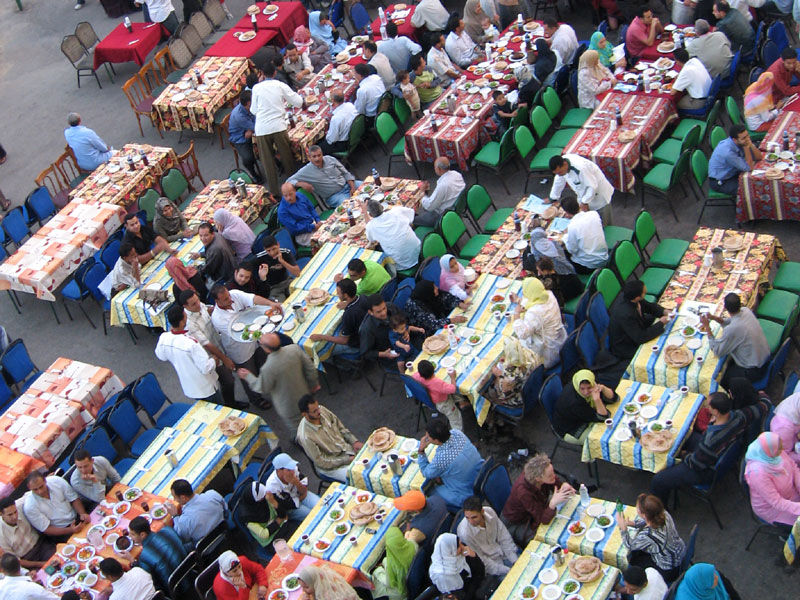
Consider this pandemic as experienced by poverty-stricken families in extremely poor countries. After the confinement began in Canada, it took only a couple of days to have African countries announce total lockdowns. In most African countries, a lockdown means staying inside your compound-house, your hut, or just in a small house that hosts more than eight people. A five-week confinement without a job for a family of five is nothing less than a death sentence. Fortunately, some countries have started distributing food, but very few people manage to get it. Worse, all those without homes and who had relied on charitable people’s provisions will have to find other means to feed their families. The city of Cairo has announced that the famous charity tables (mawa’ed al rahman) that adorn the streets during Ramadan for poor people to eat after a day of fasting were not going to be set this year. Having been in Cairo during the 2012 Ramadan month and having shared food at Al Abbasiah and Midan Al Tahrir with people from all strata of society, I understand how this will impact poor communities.
It would be inconsiderate to end without mentioning another shared worry for African people around the world. Two French doctors, Dr. Jean-Paul Mira, head of the Intensive Medicine and Intensive Care units at Cochin Hospital, and Professor Camille Locht, director of research at INSERM, discussed on a French talk show the plausibility of testing COVID-19 vaccines on the African continent. The suggestion raised an outcry from many who did not grasp there are many other places where testing is in progress. The overall perception from both ordinary people and many African celebrities, including the WHO’s Director-General Mr. Tedros Adhanom Ghebreyesus, was that Africa would once again be that continent where people are considered lab-rats, where foreign countries go to test their unsure economic and political theories, drugs, or just to dump hazardous industrial wastes. The WHO Director-General called those French doctors’ attitudes a colonial hangover. Whatever intention those doctors had, their statements were inappropriate enough to worry an entire continent and all those who care for its inhabitants. Would that mean that when a vaccine is finally discovered African countries will still need to overcome trust issues before making it available to their people?
As we struggle to accommodate the strenuous new routines caused by home confinement, let us think of all those dealing with COVID-19 while facing greater and deadlier calamities. May solidarity with those who suffer be the major lesson we may take from these distressing times.
Read other InsightOut posts.
Dr. Jean-Pierre Fortin is Assistant Professor of Practical Theology in the Faculty of Theology. Dr. Fortin teaches the Theology of Ministry and Reflection Seminar classes and also oversees field placements, an essential aspect of the Master of Divinity and Master of Religious Education programs at the Faculty. His research includes work in ecumenical dialogue.
Challenging Our Usual Ways of Living
According to the Gospel of John, when Jesus is brought before Pontius Pilate, he tells the Roman governor: “For this I was born, and for this I came into the world, to testify to the truth. Everyone who belongs to the truth listens to my voice” (John 18:37, NRSV). Jesus was born, came among us to bear witness to the truth. For Christians, who profess to be followers of Jesus, a fundamental task and challenge is to bear witness to Jesus. As it invites us to experience and celebrate the mystery of Christ’s Passion, death and resurrection in particular fashion, the Lenten/Easter season is a most suited time for us to reflect on the quality of the witness we bear to Christ.
The current COVID-19 pandemic has so challenged our usual ways of living, relating to, and serving one another that we are summoned to be creative and devise new ways of being faithful disciples of Christ. What does it mean to bear witness to Christ, celebrate and give praise to him in times of social distancing and isolation? How is the truth about the human condition (flaws and blessings) unveiled when humankind is confronted with challenges such as a global viral pandemic?
The recent closing of the USMC campus and the transfer of courses to online platforms have enabled me to witness both the turmoil that such a sudden change creates: administrators, professors, staff and students struggling to learn how to give/take courses, hold/participate in meetings, and host all sorts of academic activities online. The cancellation or postponing of so many public events, lectures, conferences, liturgies—even pub nights—led me to perceive that this year’s Lenten season would in a very real sense last much longer than 40 days. The extent of the transformation to which my working environment was being subjected fully came home when I realized I no longer had access to campus libraries and my office. At the same time, I have also witnessed how instructors and students have managed to break through technological walls to recreate communities of learning that enable insightful reflection and sharing.
In a time such as this, when we are likely to feel deeply unsettled, inadequately equipped, and summoned to take initiative and exercise leadership in unprecedented ways, we may relate to Pontius Pilate, who admits to being profoundly challenged by the person and words of Jesus when he responds to his testimony with an honest question: “What is truth?” (John 18:38) Pilate opens himself to the fact that he is encountering a reality he did not foresee. This encounter with truth in person may alter who he is in profound ways.
During this Holy Week and the following Easter season, then, as we face the COVID-19 pandemic, we may reflect on the ways Jesus questions our assumptions about our usual way of living and following him. We may also think about the questions we have been carrying with us for some time (perhaps a long time) which we know we should ask to Jesus in person. What are the questions that would liberate us, allowing us to pursue the truth revealed in Jesus in more faithful, complete fashion—especially now, in challenging times? We may bring these questions before Jesus in our prayer, with the desire and hope of being transformed so as to be able to bear witness to the truth that he is in and for times such as these.
Read other InsightOut posts.
Dr. Michael Attridge teaches historical and systematic theology at the Faculty of Theology. Recent courses he has taught include theological foundations, Christology, ecclesiology, 19th and 20th century theologians and movements, and the Second Vatican Council in Canada. He is currently involved as a co-investigator in a four-year, SSHRC-funded research project comparing the different forms of catholicism in Ontario and Quebec in the period following Vatican II through the lens of liturgy and catechesis, ecumenism and interfaith dialogue, and socio-political engagement.
Today’s piece was written in the midst of his self-isolation.
A Time for Gratitude

For each the past few years I’ve been fortunate to have travelled to Italy for short periods of time for research and study. Although I often make trips to Rome and Milan while I’m there, my home base is Siena, staying with the friars in the convent of the magnificent mediaeval basilica of San Domenico. Daily life is as peaceful as it is regular—liturgy, meals, study, and work. When I arrived, there were only a few cases of COVID-19 in Italy. All of this, though, changed quickly. On March 4, the government closed schools and universities, but we were still able to work online. On March 8, it locked down 16 million people in the north and, the following day, it did the same for all of Italy—restricting travel throughout the country. Within hours the airline emailed to say it was now only flying out of Rome. I knew I needed to leave immediately. A friend who works in the Lisbon airport was able to get me to Portugal the next day, March 10, on the airline’s last flight out of Italy. With the help of family, I self-quarantined in a small town near Fatima where my wife, Isilda, was raised. On Sunday, March 15, the day before Canada closed its borders, I caught my return flight home.
For the past nine days, I’ve been in self-quarantine in the same room in our house, staying apart from Isilda and our two teenage daughters. I can watch the news, work, read and stay in contact with colleagues and students through email and Zoom. In many ways life is as regular again as it was in the convent in Siena. But I’m realizing, too, how much my sense of time is also marked by daily movement—going to the kitchen for breakfast, walking to work or across campus, going for groceries in the evening. Time seems to be measured as much by going from place-to-place as it is by minutes and hours on the clock. Not having the same obligations of places to go or errands to run, has displaced this sense of time, and instead, I find myself feeling grateful—grateful for the people and communities that are coming together; grateful for the healthcare workers around the world who are treating the sick and the vulnerable. I’m even grateful for the political leaders at all levels in the country who are putting aside differences, following the scientists, and working together for the well-being of everyone.
Above all though, I’m grateful to Isilda and our daughters. Every morning, she and I have a coffee together, with her at one end of the hallway and me in my room. I’m grateful to her and the girls for doing what needs to be done around the house and to our younger daughter who’s been working overtime at our neighborhood grocery store. Last night the four of us sat together—again, them at one end of the hall and me inside my room, having dinner, laughing and sharing stories. I was reminded of Pope Francis’ tweet in October 2015, where he challenged people to “waste time” with others. It’s one of the most important things we can do. These days, as the entire world grinds to a halt and most of us are in social isolation, perhaps this is a moment to embrace our lack of movement, recalibrate our sense of time, reflect on those around us, and be grateful for one another.
Read other InsightOut posts.
Dr. Tamara Grdzelidze’s career has taken her from the Geneva offices of the World Council of Churches to Rome, where she served as the Georgian ambassador to the Vatican from 2014-2018. Now, her latest travels have brought her to Toronto as the Aileen Driscoll Research Fellow in Ecumenical Theology at the University of St. Michael’s College.
Midway through her year-long appointment, Dr. Grzelidze is delighted to be following in the footsteps of legendary St. Mike’s professors and conducting research at a university known for its work in ecumenism — even though her arrival on campus this past January was something of a shock.
“Certainly I knew cold. I’d been to the Alps, for example, “she laughingly recalls. “But I didn’t know what (a wind chill of) -32 felt like!”
Still, everything from conversations with Dennis Savoie, Canada’s ambassador to the Holy See, to her work at the WCC helped convince her that St. Michael’s was a logical place for her to further her work on ecumenism.
“I was familiar with some of the big names who taught at St. Mike’s – Margaret O’Gara and Étienne Gilson, for example – and I knew U of T is a very good university,” she says. “From my work with the World Council of Churches I knew that, ecumenically, (Canada) is very strong.”
The project she is working on while at St. Mike’s stems from concerns over the fallout for various Orthodox churches in the wake of the 2018 decision by the Russian Orthodox Church to sever ties to the Ecumenical Patriarchate of Constantinople, which historically has held a special place in the Eastern Orthodox world. The break came last October after Constantinople granted the Ukrainian Orthodox Church autocephaly, or permission to operate independently from Moscow.
“Having lived various places this is painful for me. Borders are not so precise,” says Dr. Grdzelidze, who is organizing a conference to take place at St. Mike’s in June, 2020, titled Boundaries of the Christian Faith in the 21st Century: Intersecting with Borders of Geography, Cuture and Theology. Earlier this year, for example, she delivered a paper, ‘National Borders of the Orthodox Church,’ at a conference in Romania.
“Ecumenism is not only about knowledge but about experience, just as theology is not just about patristics,” she explains. “It is about seeing how people interact; it serves as a compass to understand others’ beliefs, their passions.”
In the coming Fall semester, Dr. Grdzelidze will teach The Ecumenical Theology: Division, Difference, Dialogue, a course that will examine some of the major themes related to the impact of inter-church dialogue and action on theological reflection.
Educated in Tbilisi State University in Georgia, St. Vladimir’s Orthodox Theological Seminary in New York, and Oxford, Dr. Grdzelidze has taught around the world, including St. John’s Theological College in Auckland, Trinity College Dublin, and the Angelicum in Rome.
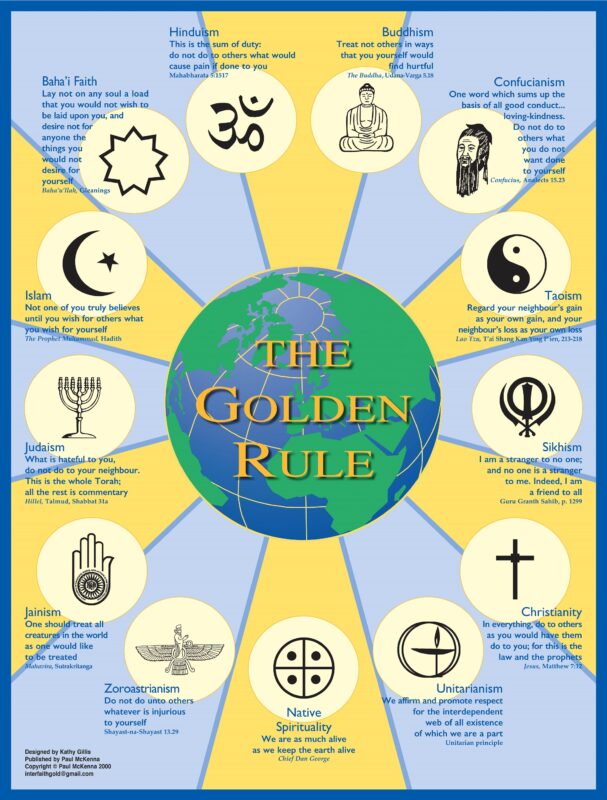
This Fall will see courses on indigenous spirituality, religion and migration, and Catholic perspectives on interfaith dialogue as the Faculty of Theology launches its new Diploma in Interfaith Dialogue.
Offered in collaboration with the Ecumenical and Interfaith Affairs Office of the Archdiocese of Toronto, the 10-course diploma is open to people of all religious traditions, regardless of academic background, and is designed to facilitate dialogue about faith in one of the most diverse cities in the world, says Faculty Dean Dr. James Ginther.
“Our goal is to introduce students to the spirituality of many of the faith communities in the Greater Toronto Area, bringing neighbours together in greater understanding and appreciation for each other’s rich traditions,” Dr. Ginther says. “We have been quite thoughtful in reaching out to the broader community to find just the right fit of experts to create the curriculum, as well as to teach the various units we will be offering.”
The program launches Monday, September 16 with Catholic Perspectives on Ecumenical and Interreligious Relations, one of the diploma’s two required foundational offerings, to be taught by Faculty systematics professor Dr. Darren Dias and guest lecturers. This course will see participants examine key documents and agencies from the Catholic perspective, with an emphasis on ecumenical and interreligious relations, all with the goal of developing deeper understanding both the unity and commonality that can be applied to emerging ecumenical and interreligious contexts around the world.
Next up with be Religion and Migration, which has been designed and will be taught by Dr. Agnes Thomas, who is the Executive Director of Catholic Crosscultural Services, a charity that helps with the settlement and integration of migrants and refugees.
Religion and Migration, which will be held on Monday nights beginning October 21, will offer an overview of immigrant and refugee journeys and settlement in Canada, exploring various communities’ disasporas to help understand migration and settlement patterns, and their impact on communities.
The final offering of the Fall semester is Indigenous Sacred Traditions & Reconciliation, taught by doctoral candidate Benjamin Lujan. This course, which begins Saturday, November 16, will explore key notions in Indigenous sacred traditions and worldviews, looking in particularly at the effects of colonization and Canadian efforts at reconciliation.
The Winter semester promises courses in Judaism, religious architecture and sacred space, and the other foundational course, which is titled Theories and Practices of Dialogue.
Future semesters will see course new offerings on world religions as well as themes such as peace and justice, religious texts, and prayer and mysticism. The two foundational courses will be offered on an ongoing, alternating basis.
All courses are 12 hours in length, usually offered in increments over four days, and students can take one, two or all three courses each semester. The program require students take the two foundational courses, a minimum of two courses from the category of Faith Traditions of Toronto and the World and a minimum of two courses from the category of Topics in Interfaith Encounter. Students will also engage in a two-credit capstone course, which will see participants work on a related project, including such options as faith mapping of a neighbourhood, or planning in interfaith prayer service. Altogether, students need 10 credits to earn the diploma.
Each course will include a written component of between 1,000-2,000 words, and participants will be marked on a pass/fail basis.
Admissions are being accepted on an ongoing basis. Thanks to a generous donation from the Scarboro Missions, we are able to offer courses for the 2019-2020 academic year at a rate of $175.
For more on the diploma, schedules of course and a link to the application form, please see https://stmikes.utoronto.ca/program/diploma-interfaith/.
Updated class location: Catholic Perspectives will take place at The Mary Ward Centre, located at 70 St. Mary St. in the Loretto College Residence. Class begins at 6 p.m. :
Winter semester classes will be posted shortly. |


